
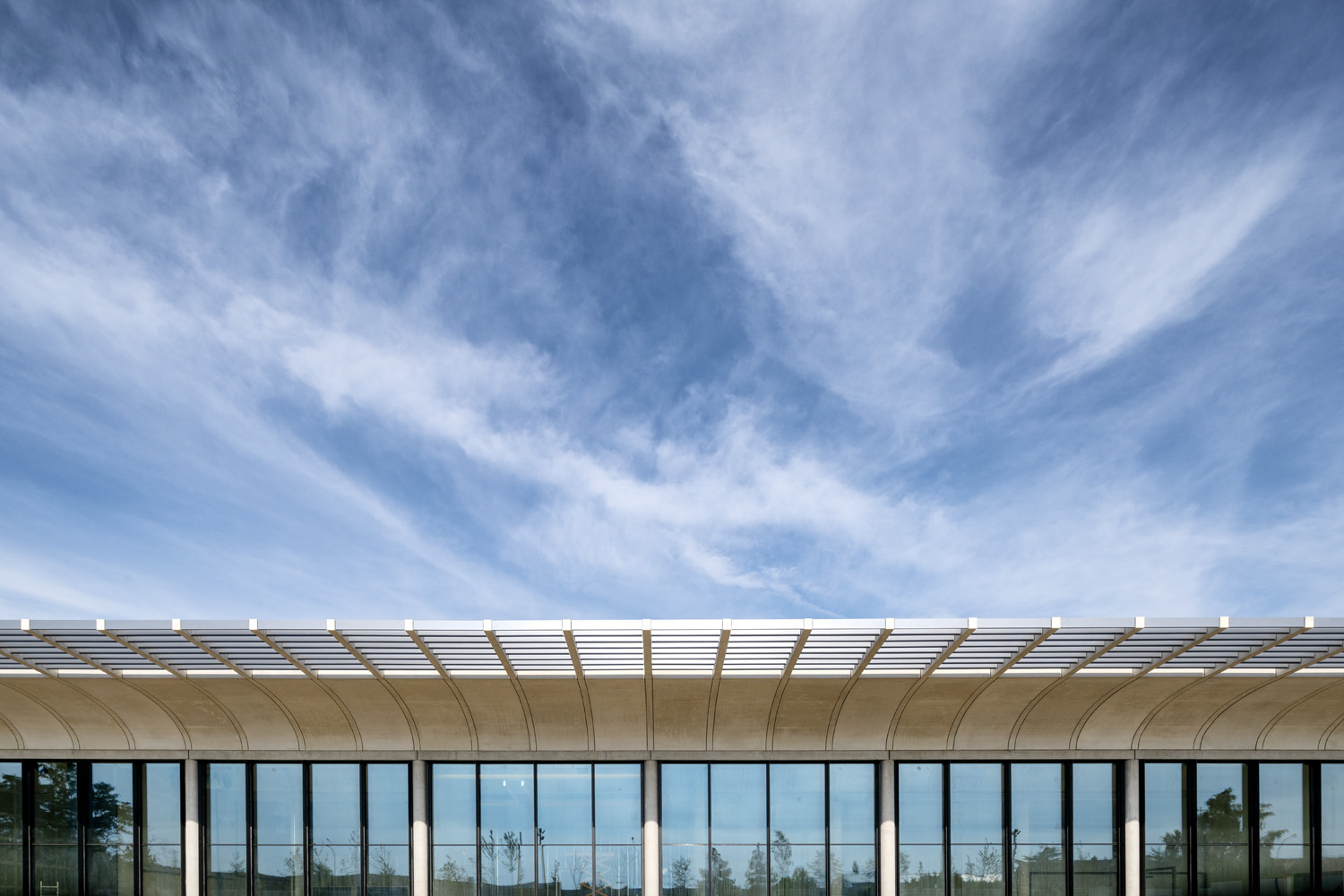
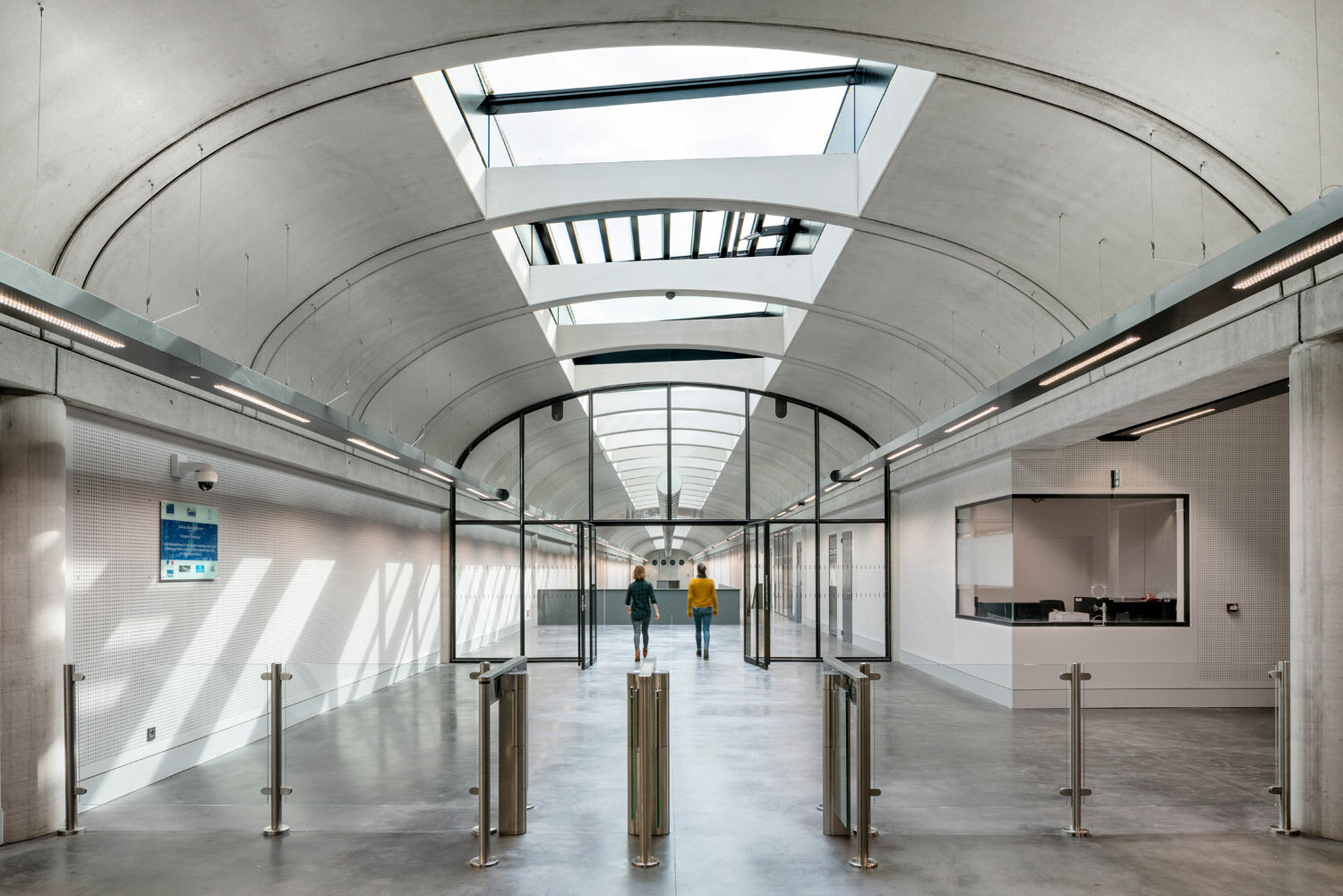
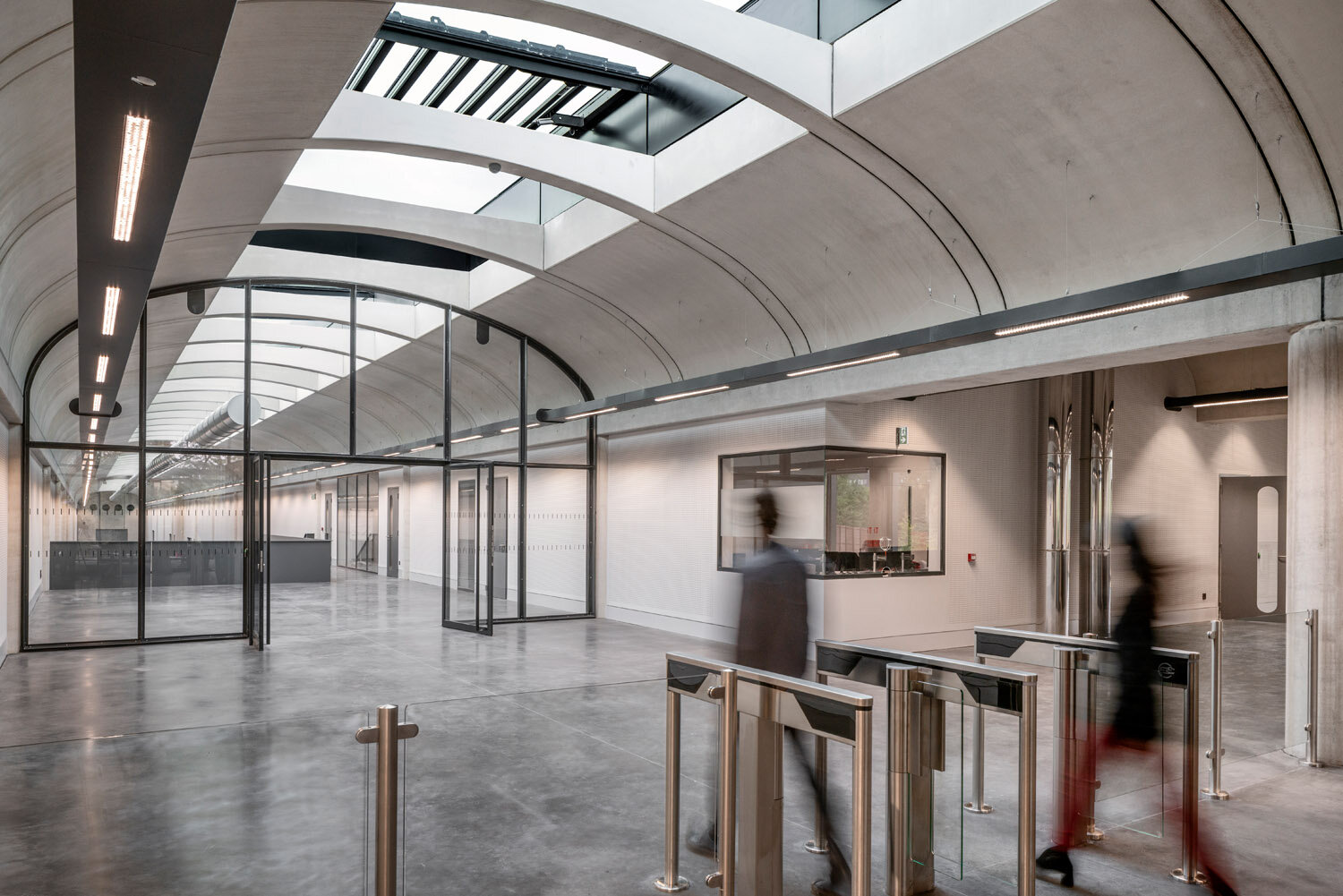
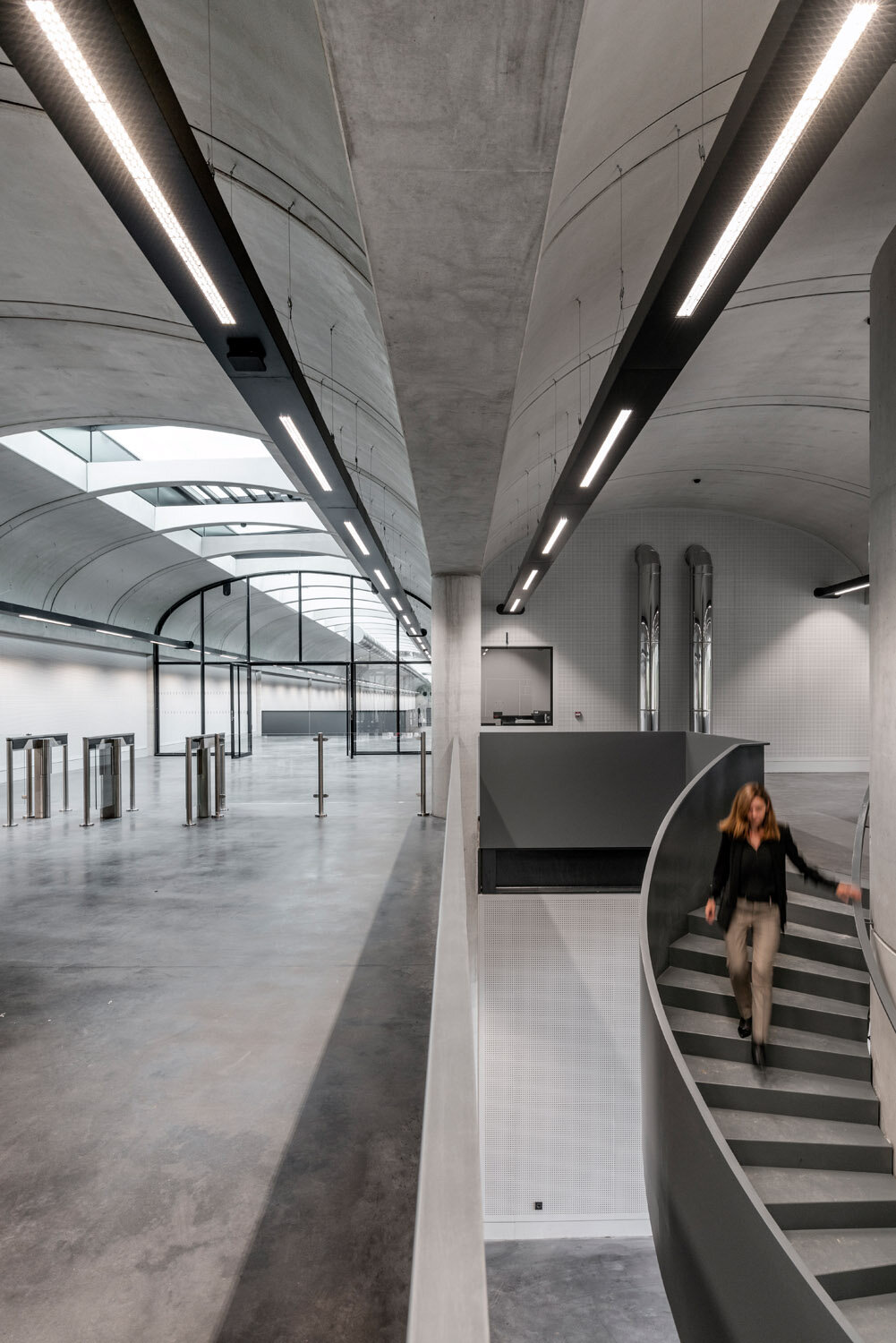
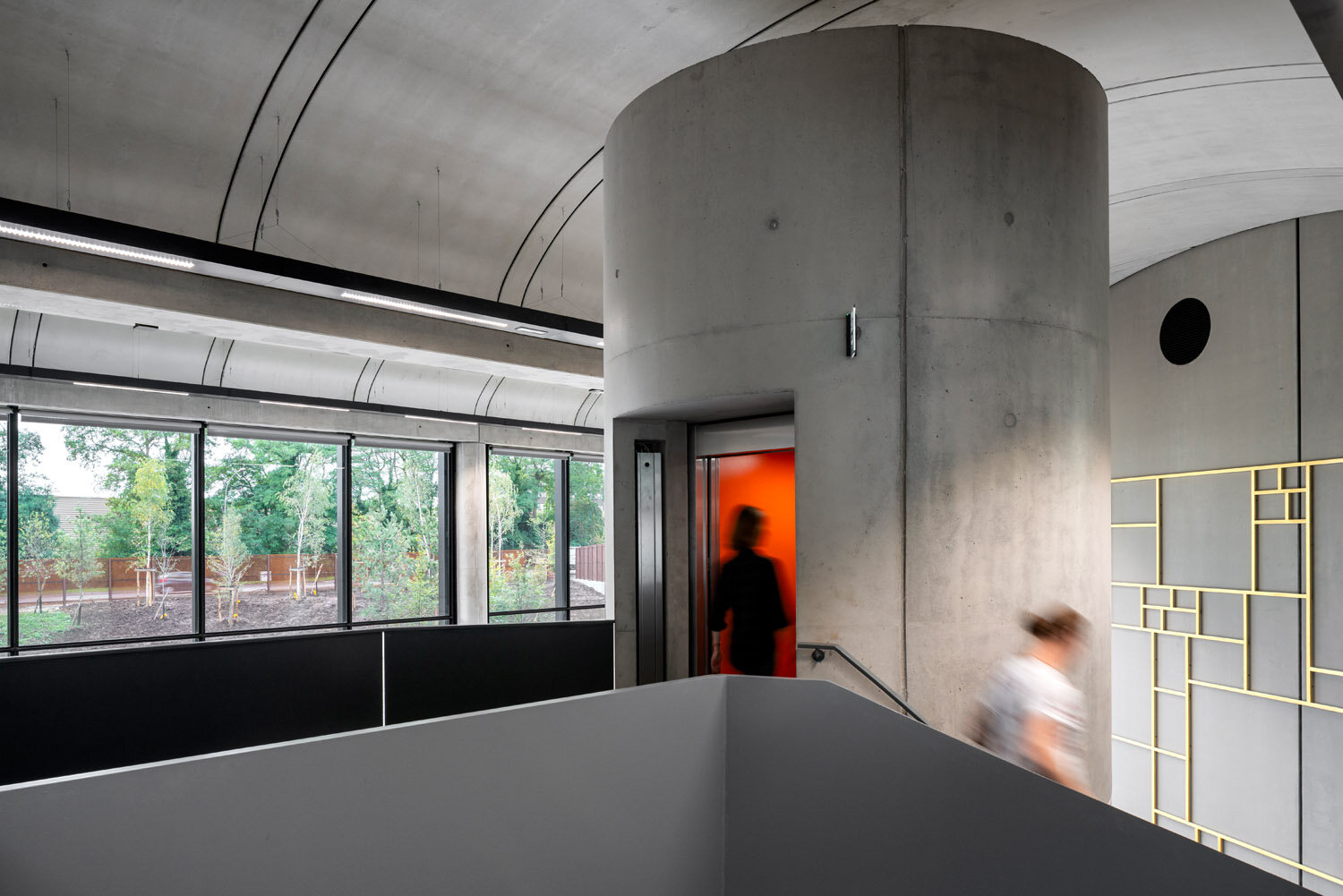

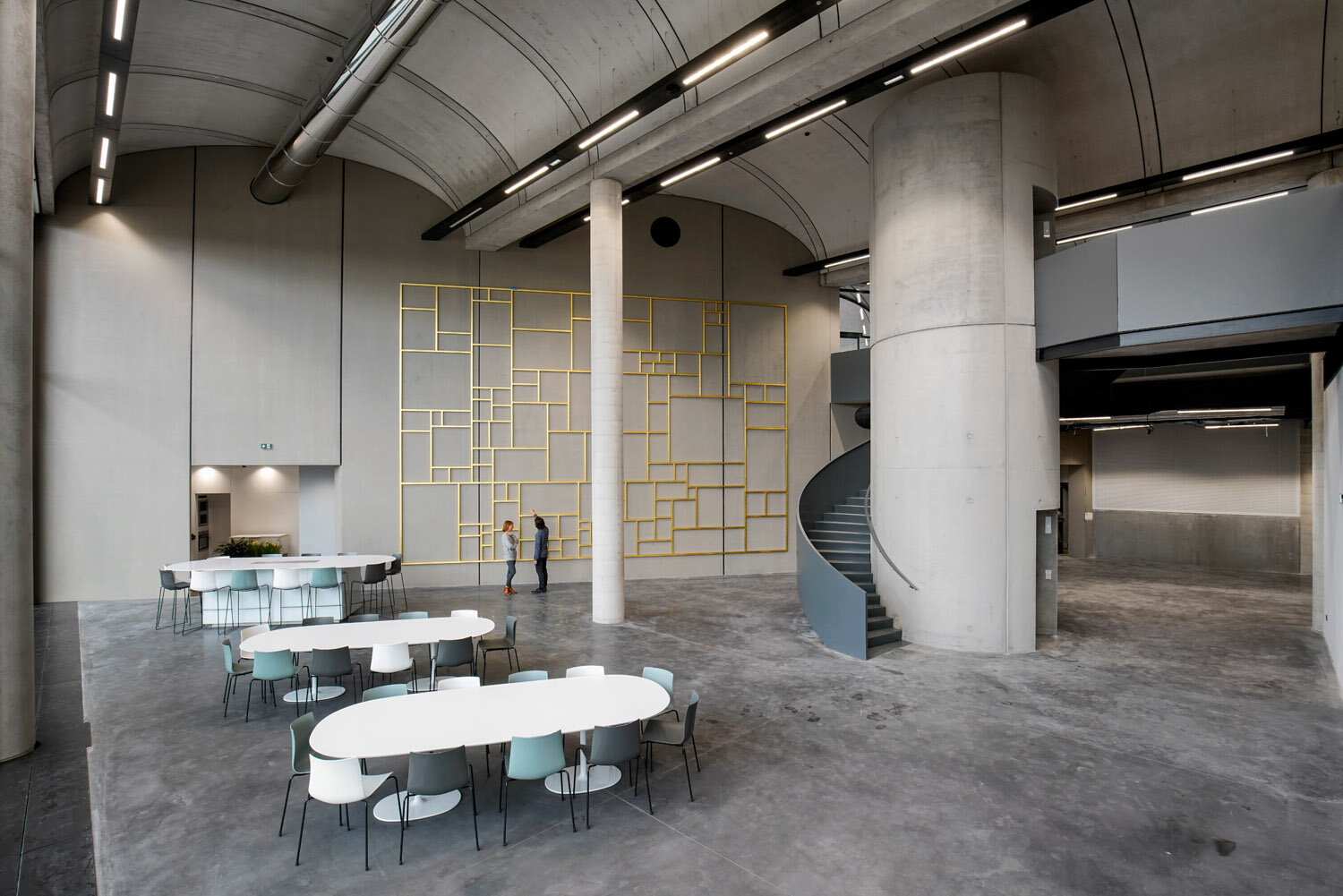
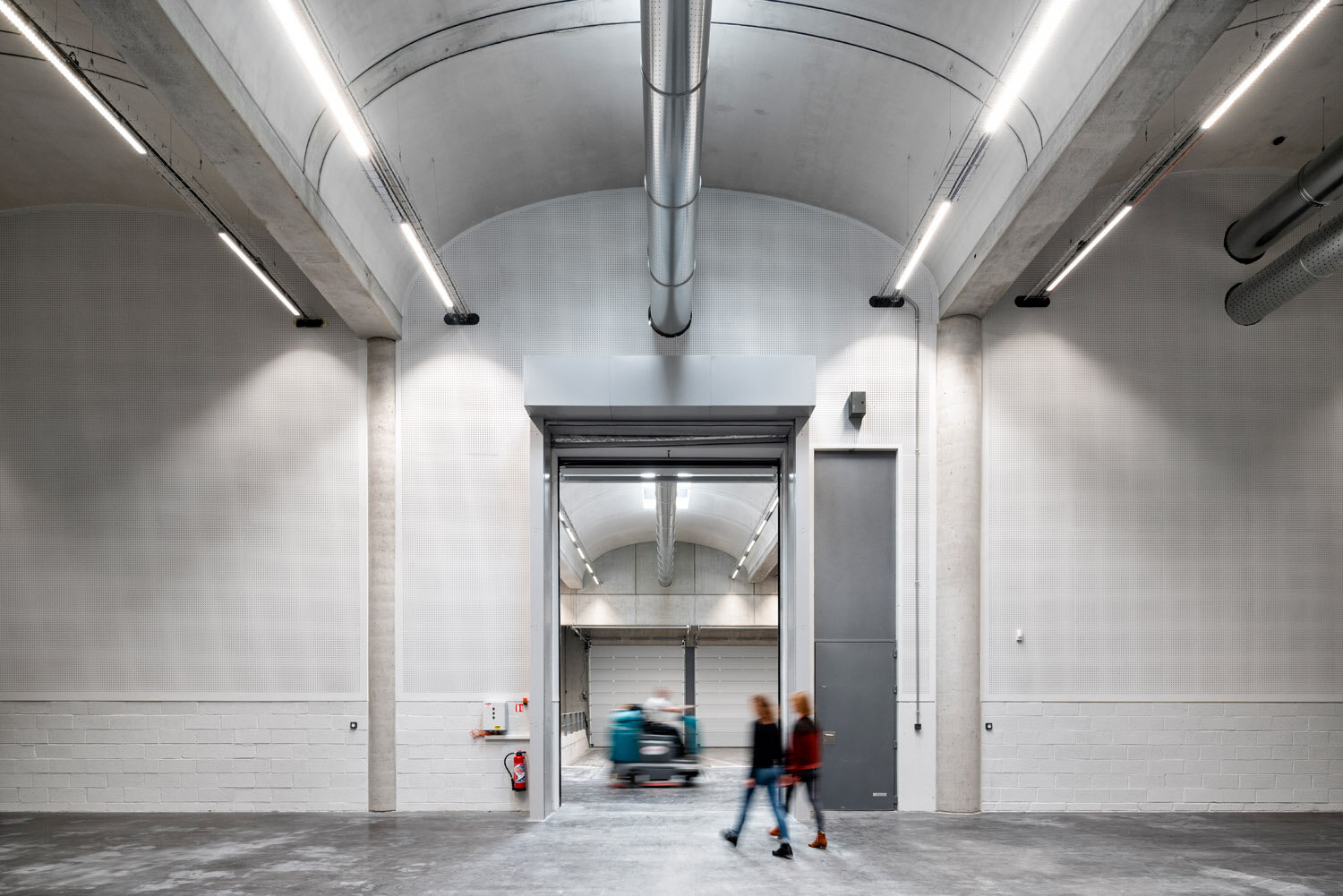
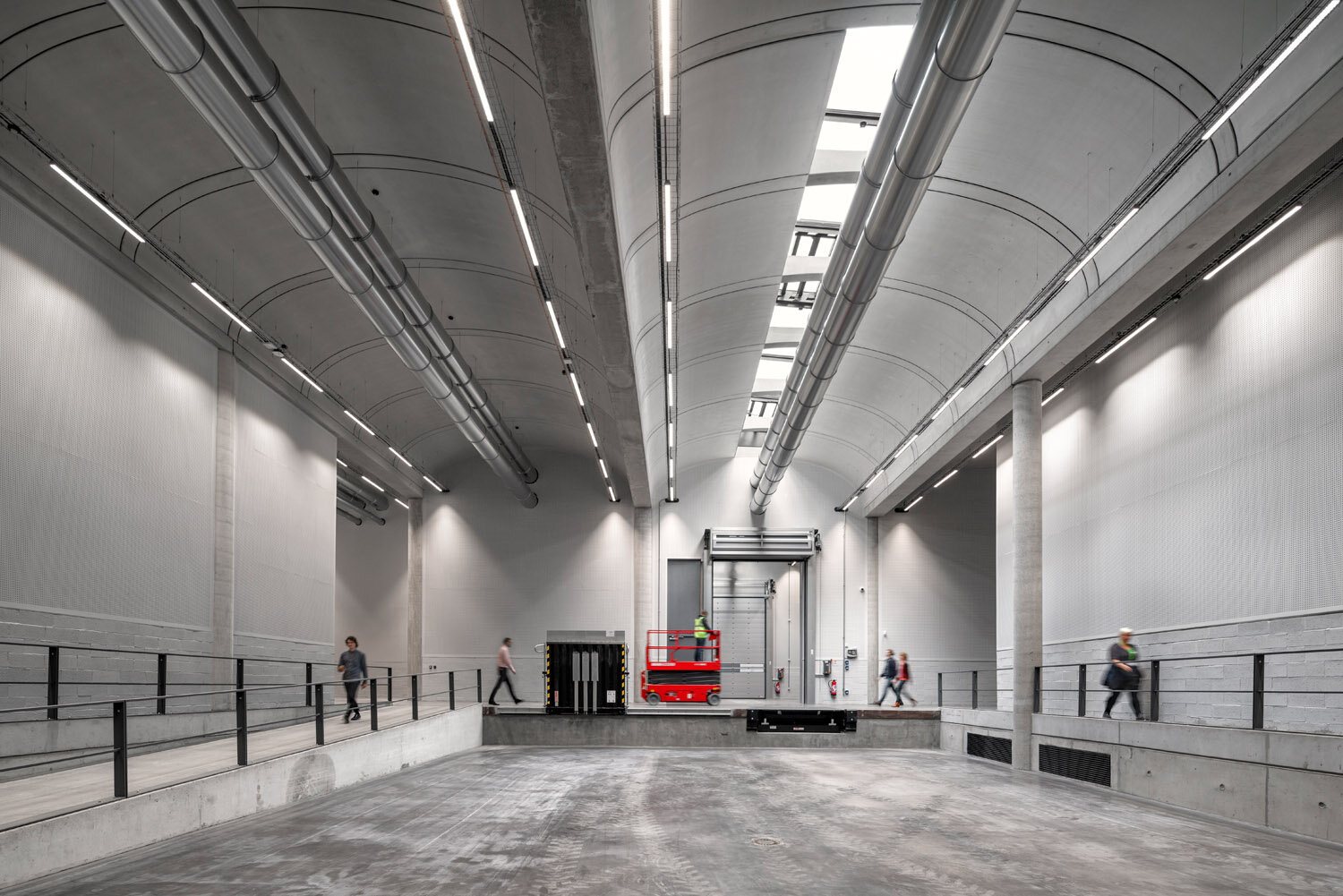
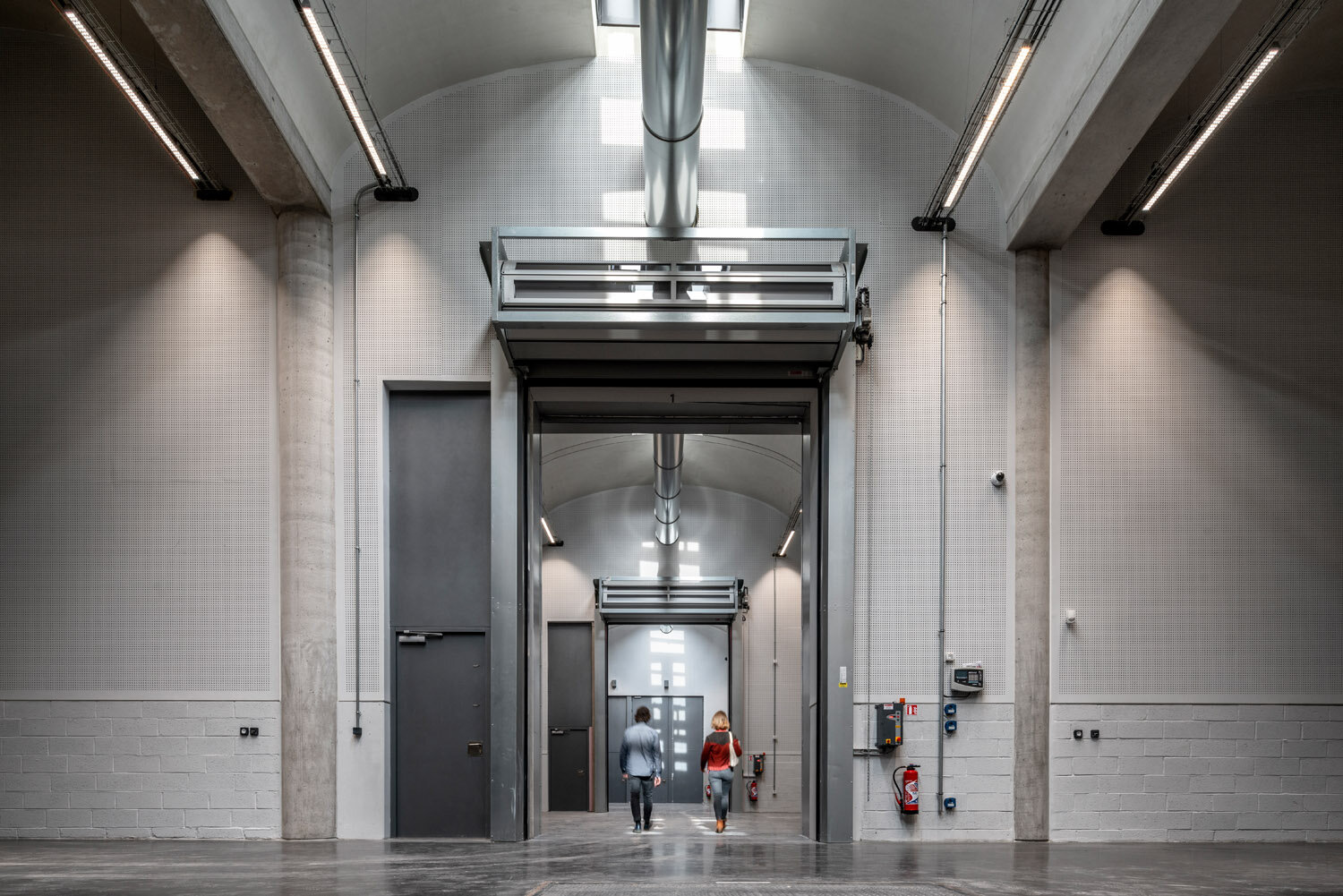

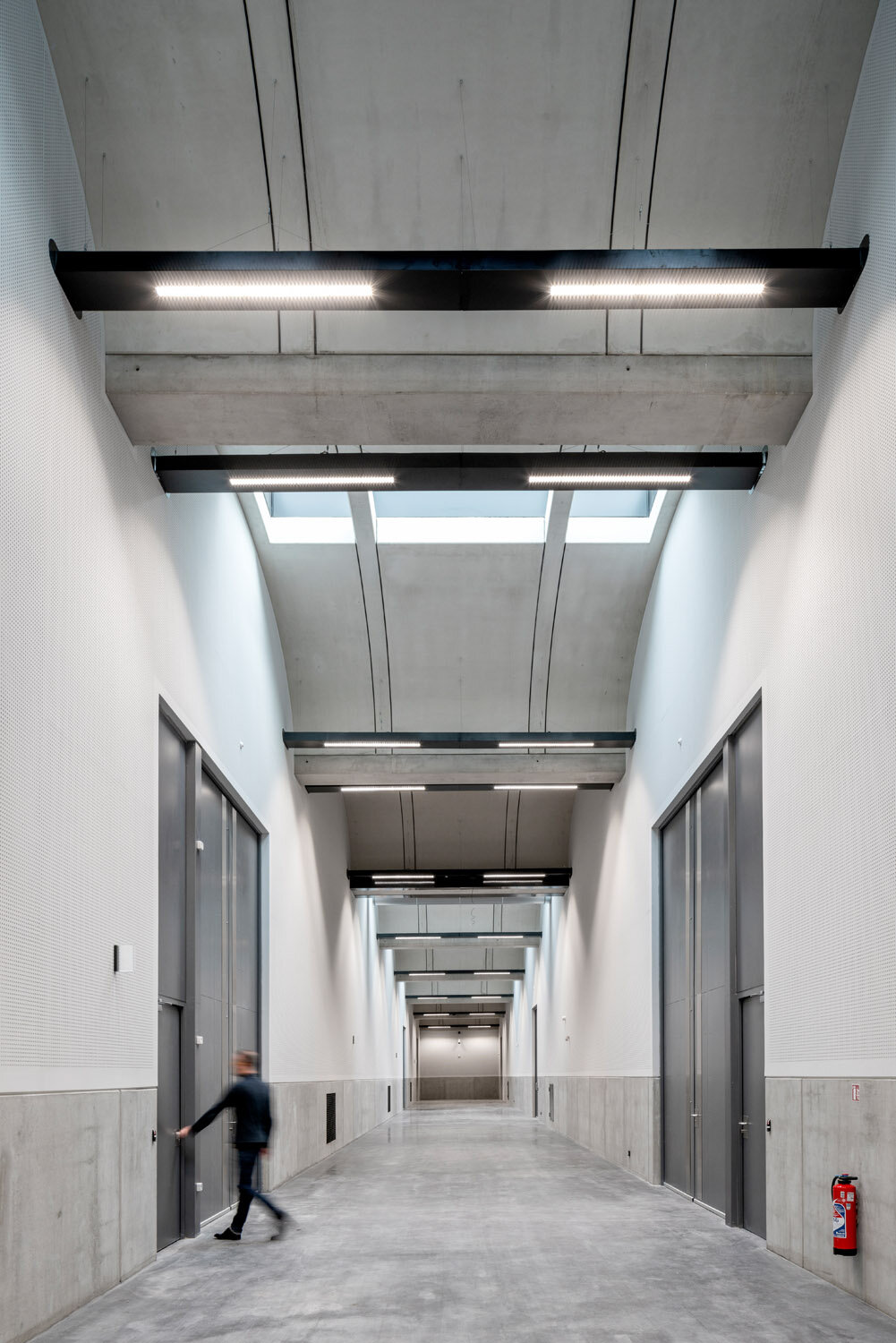
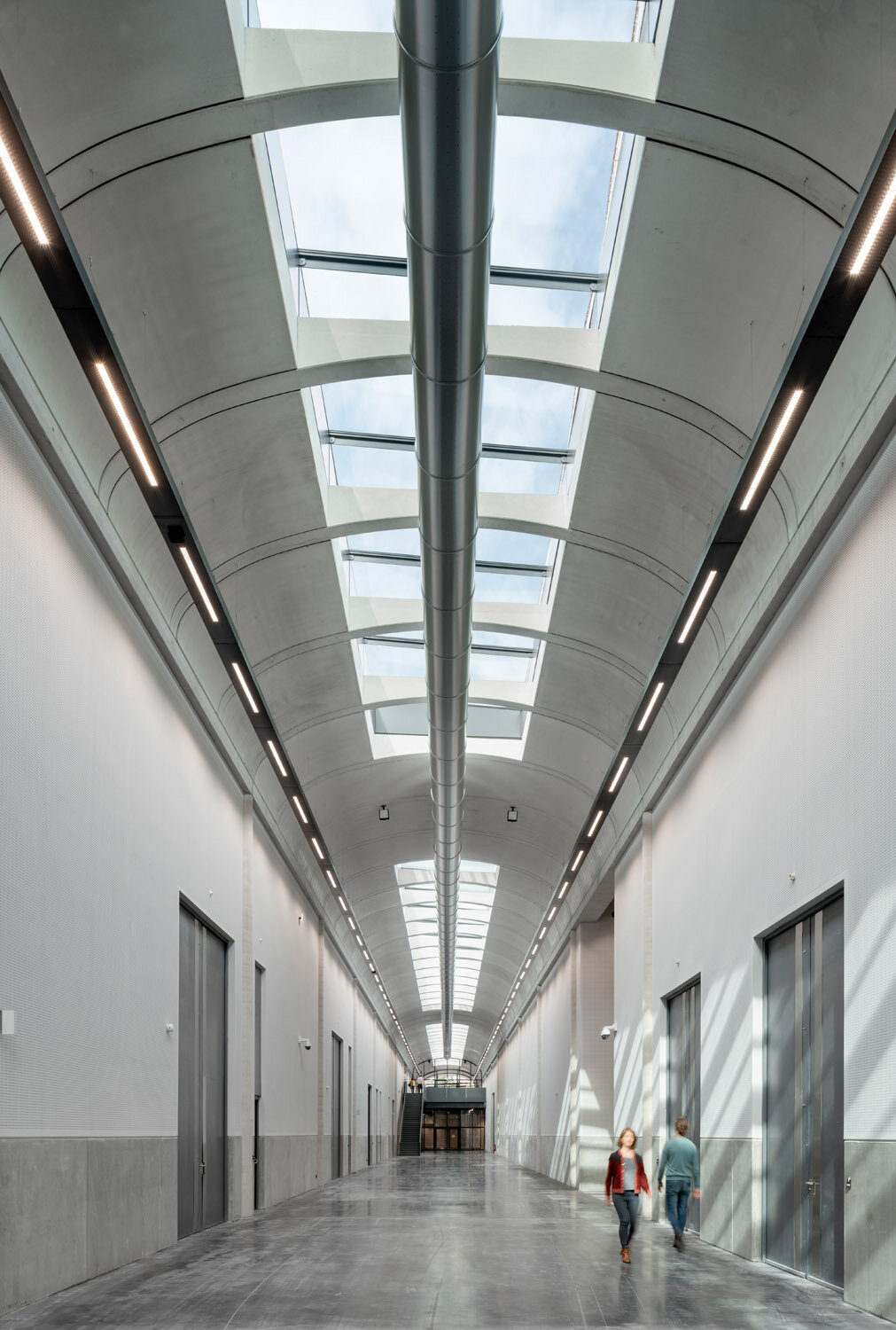
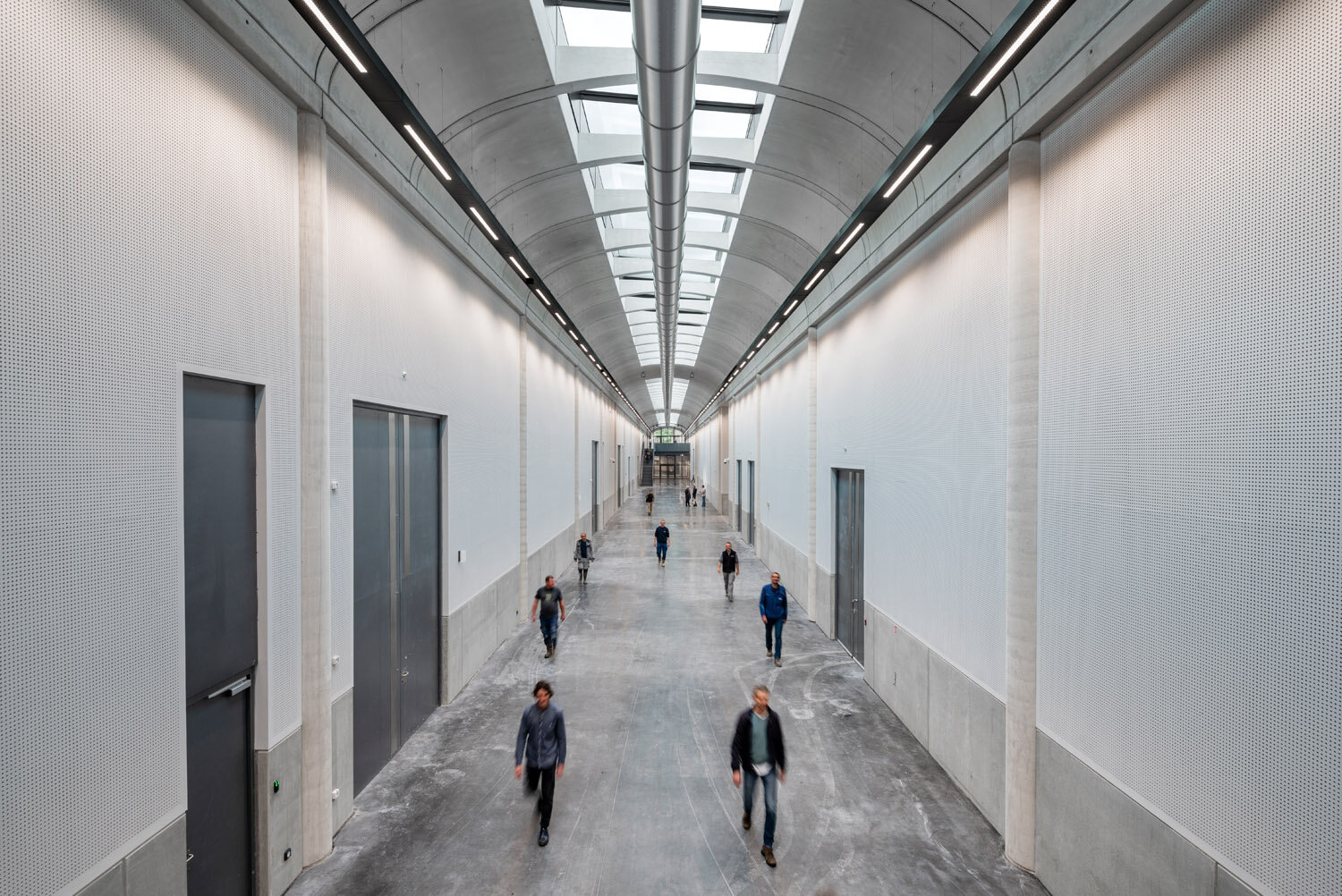
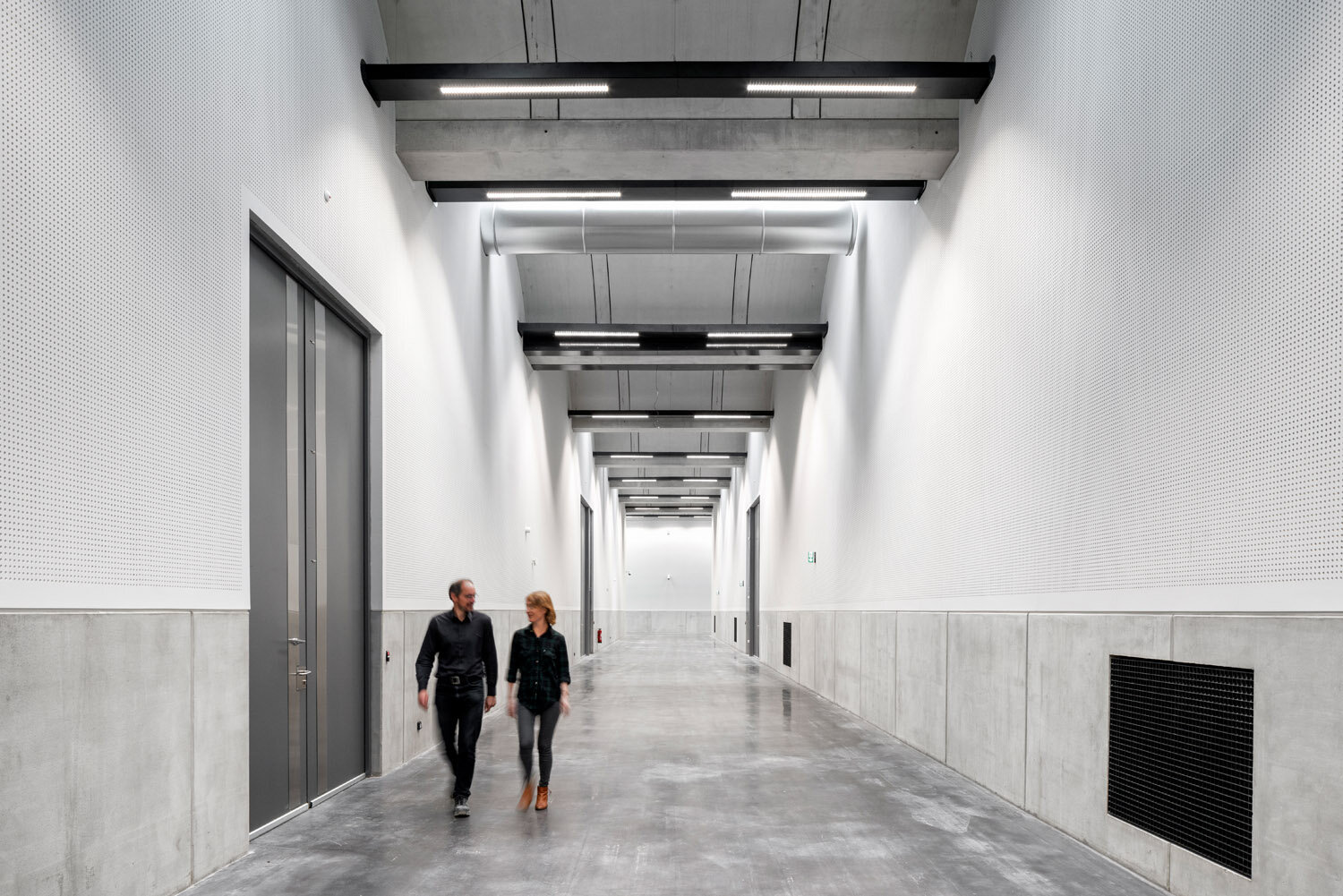
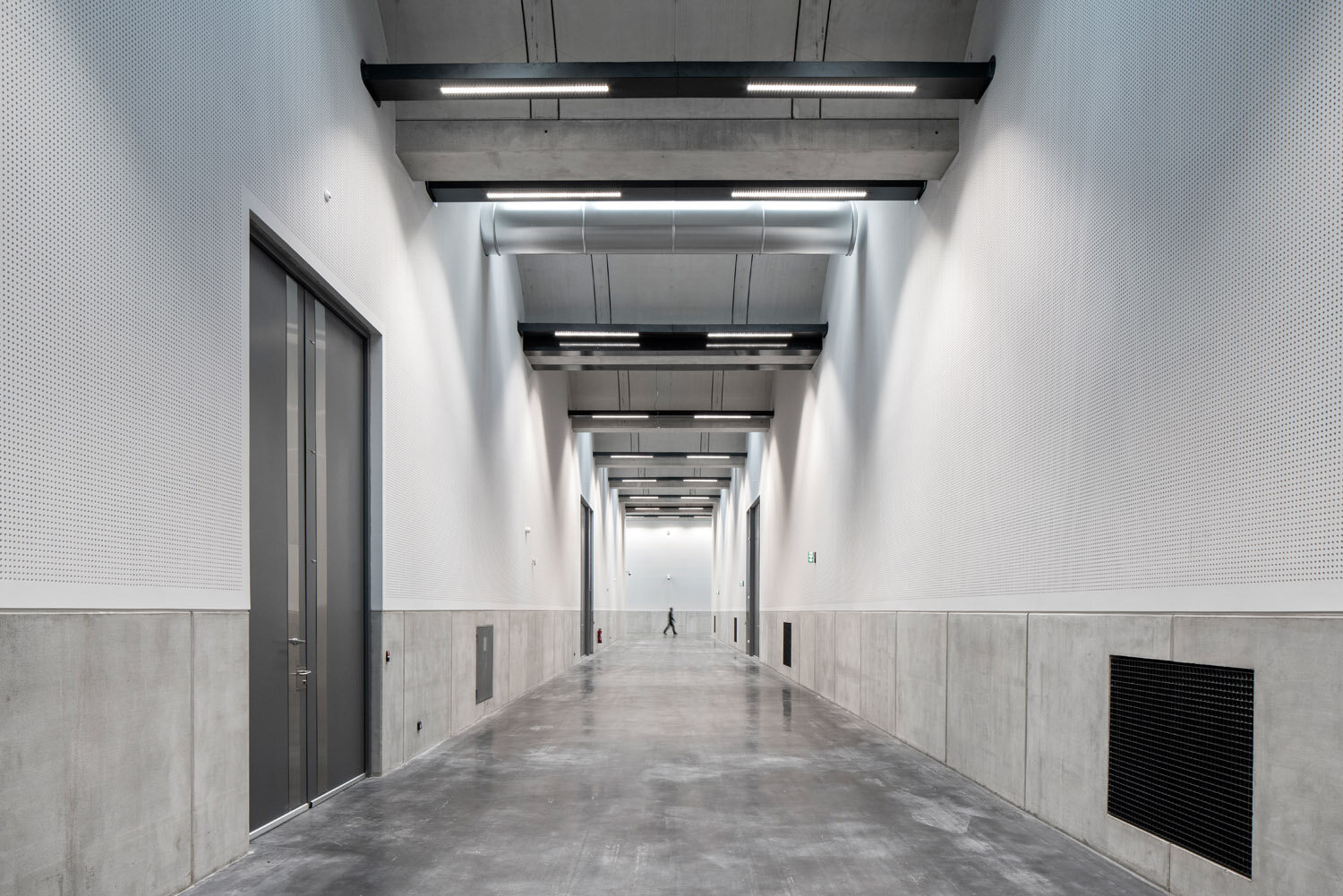
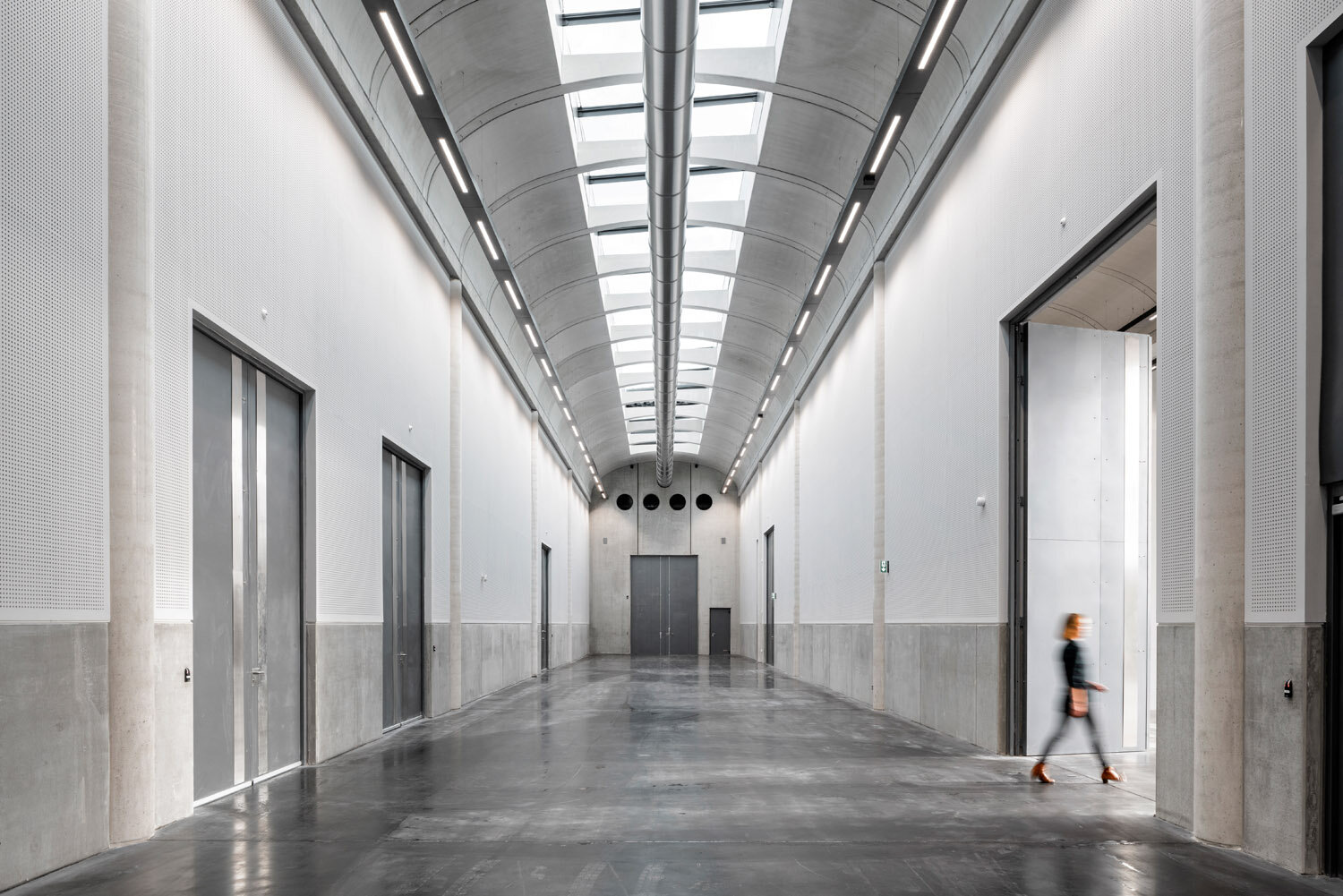
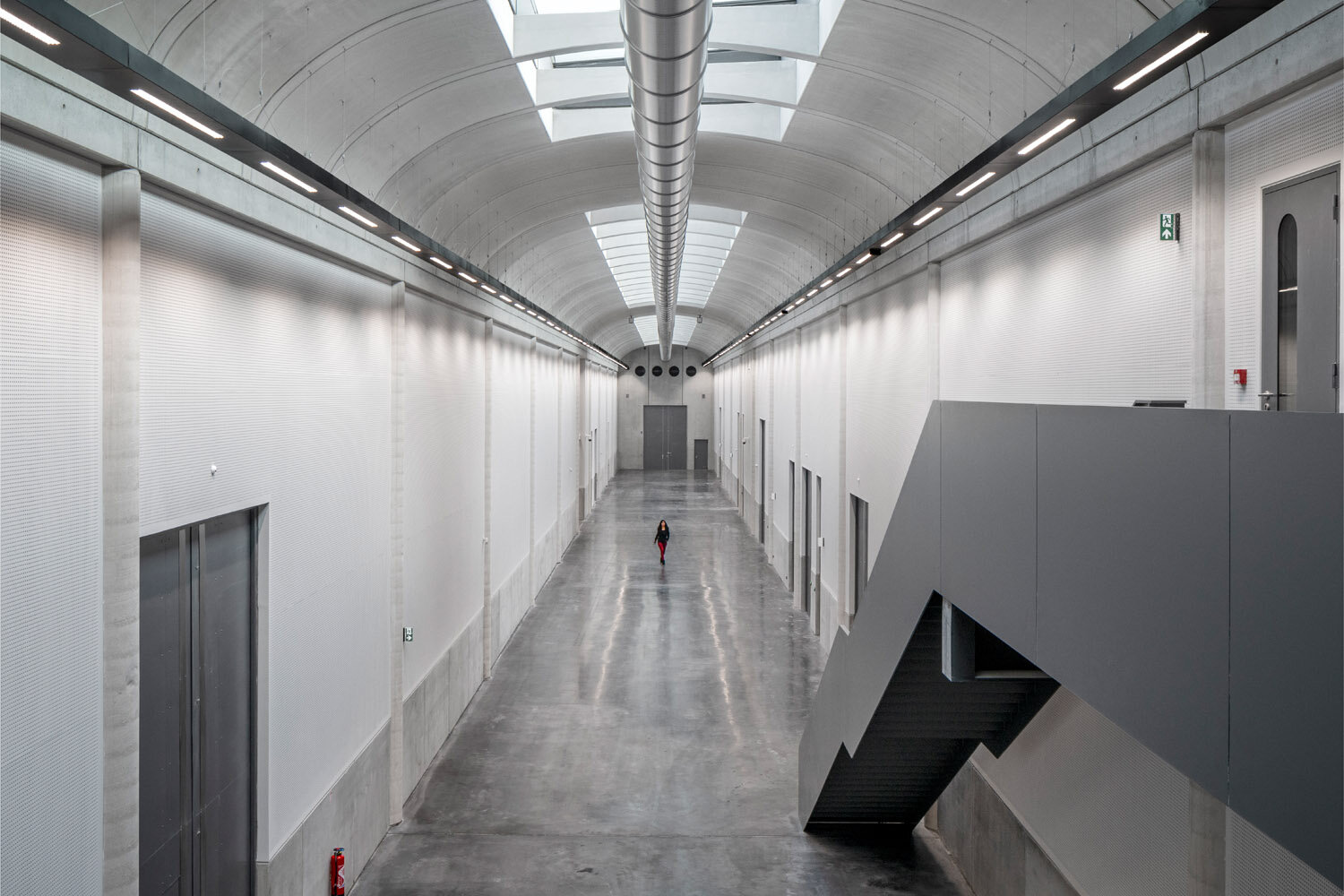
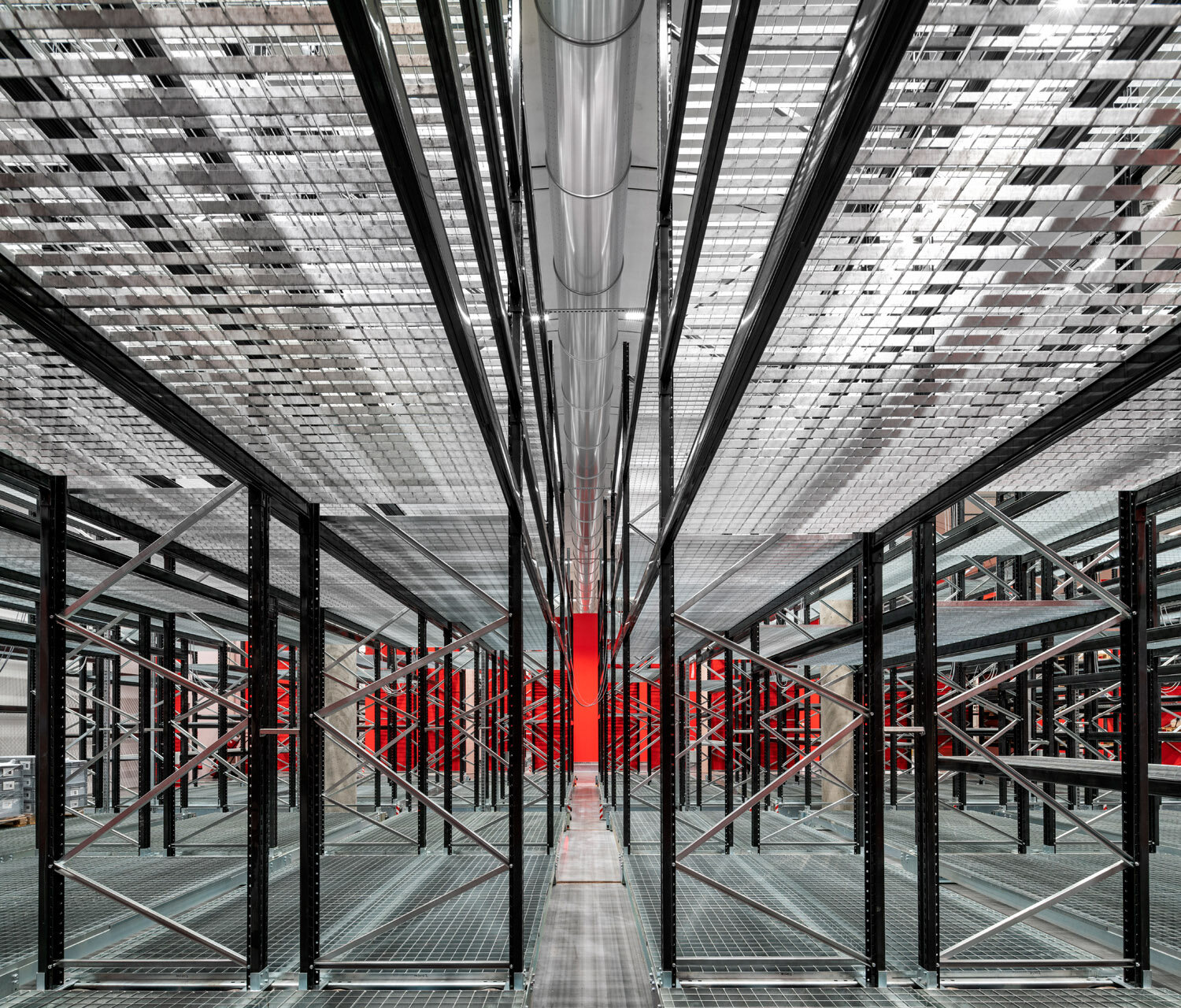
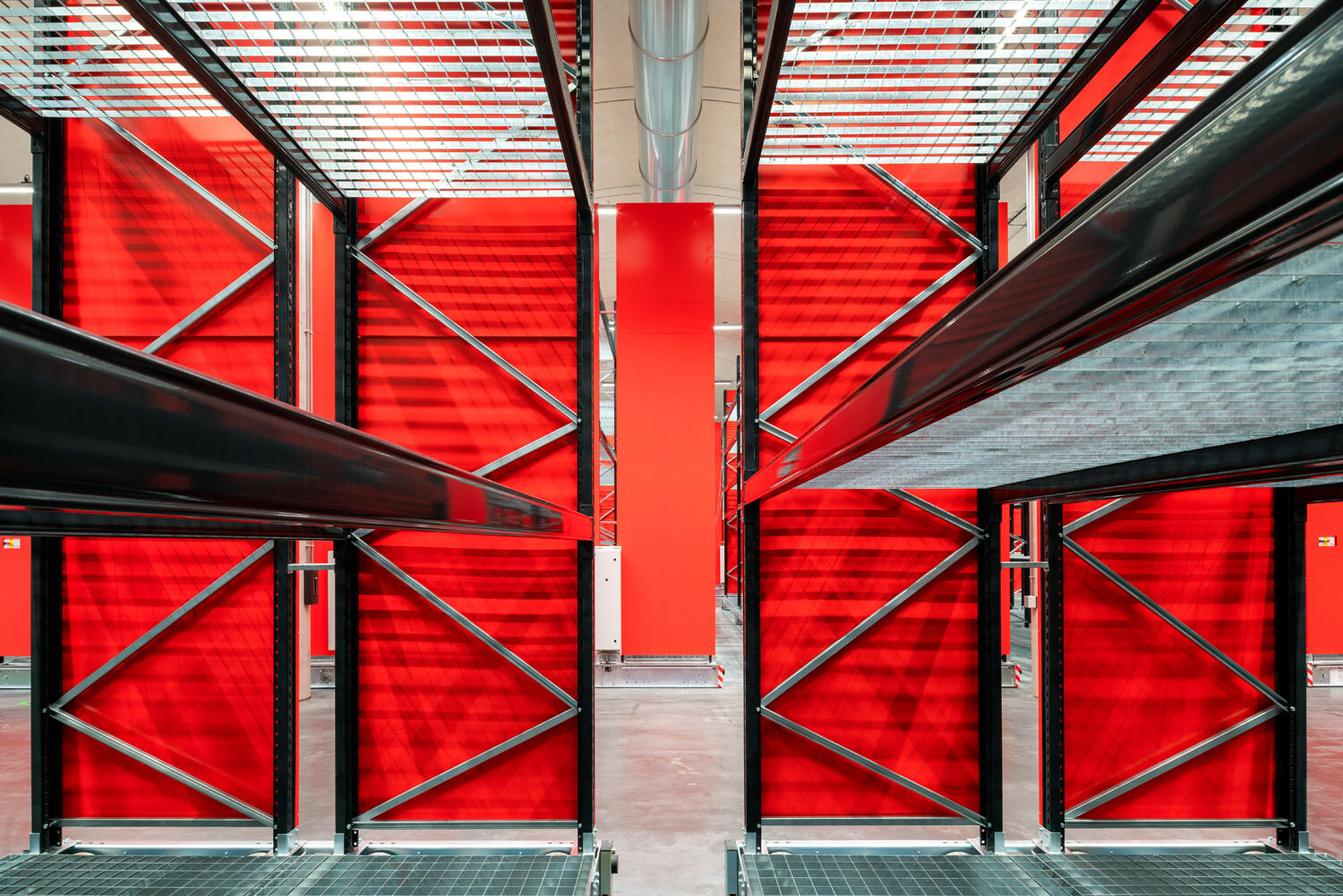
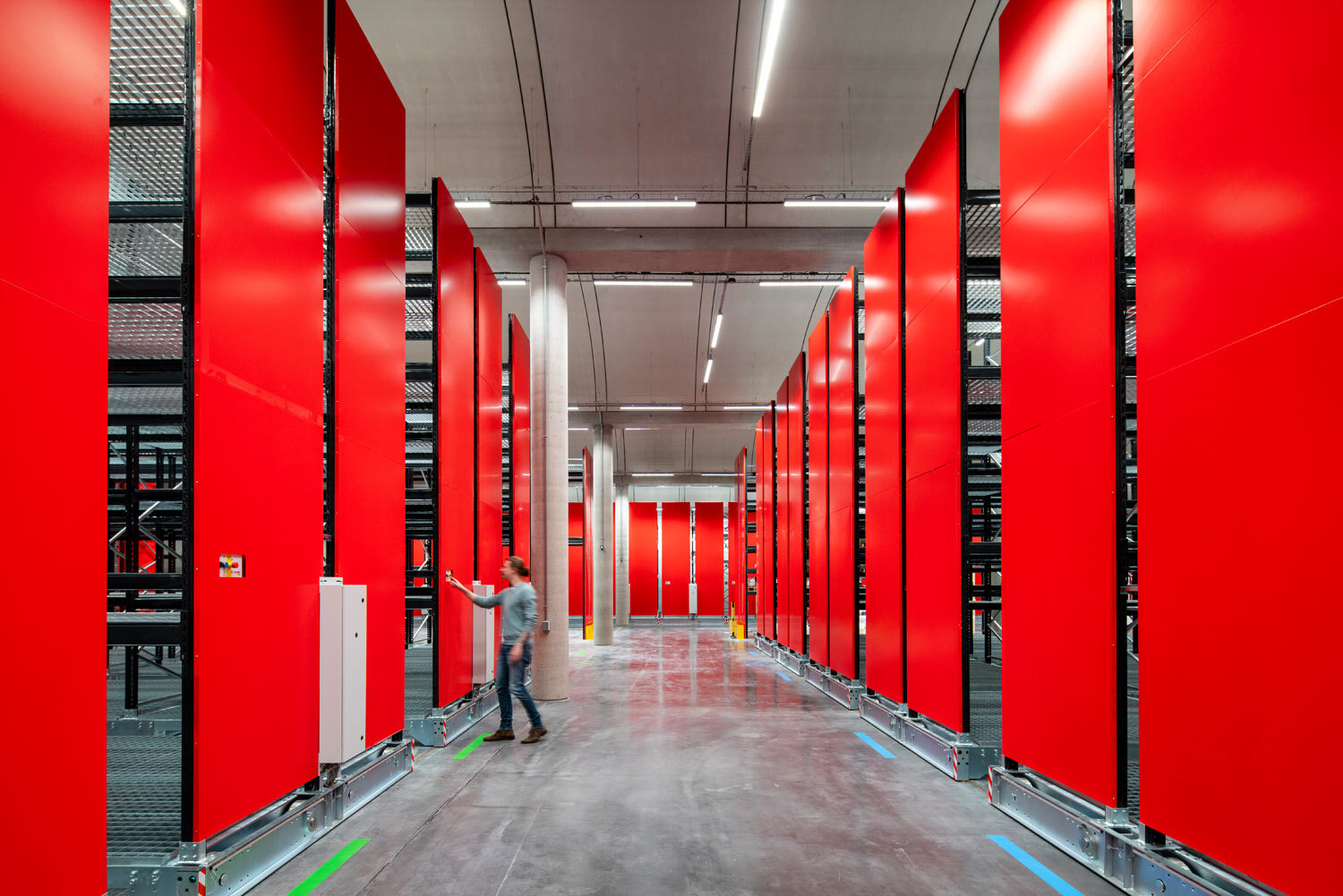
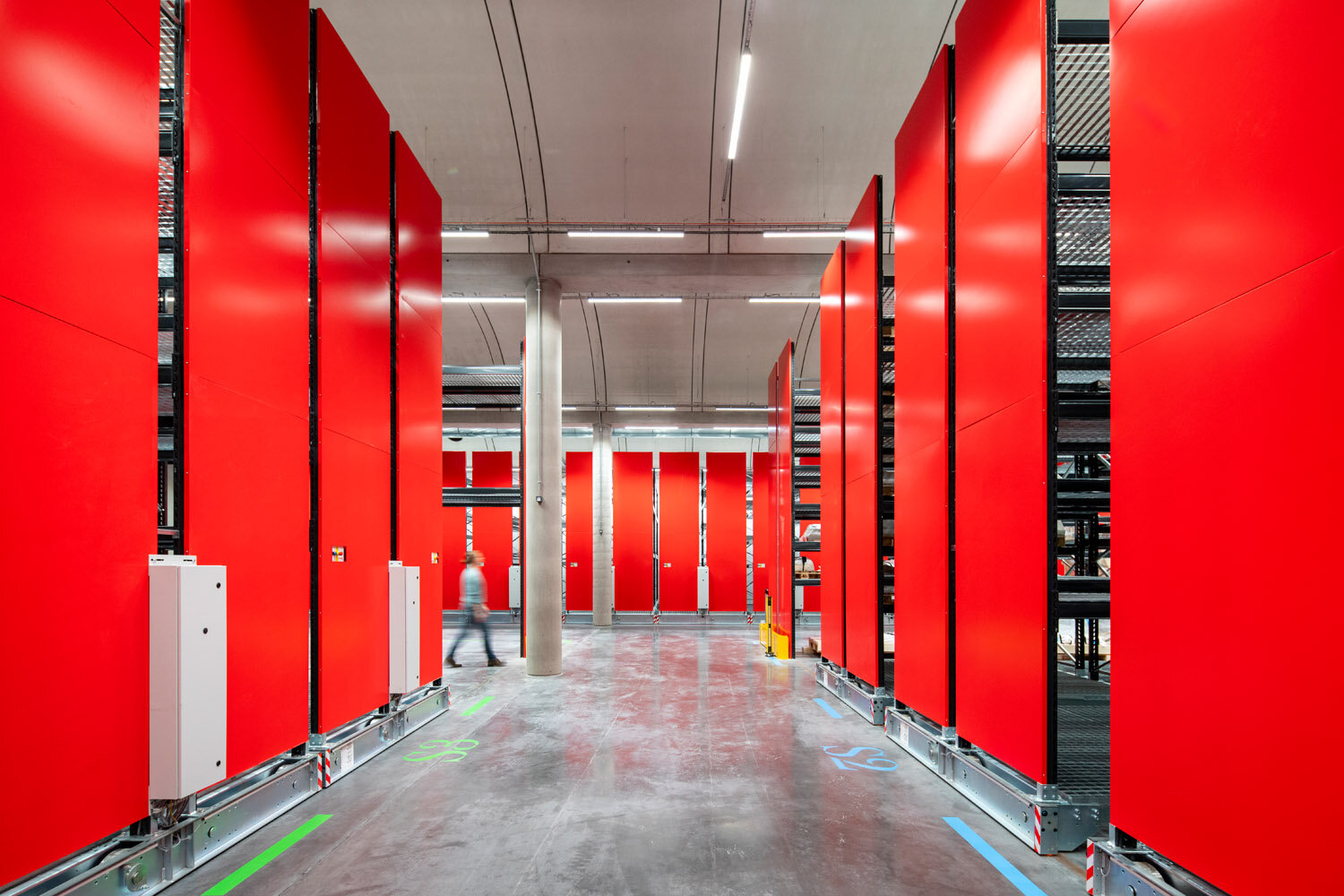

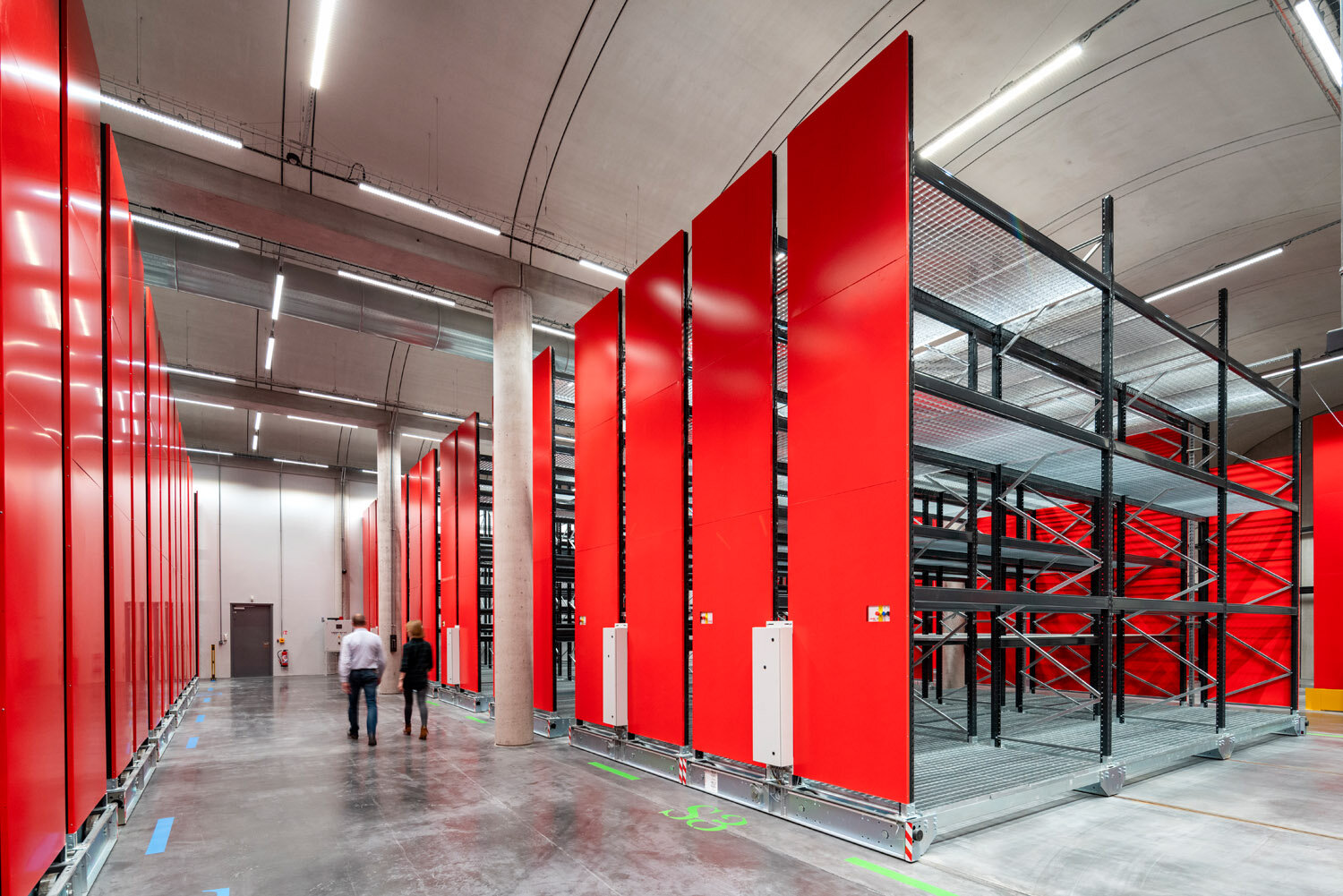
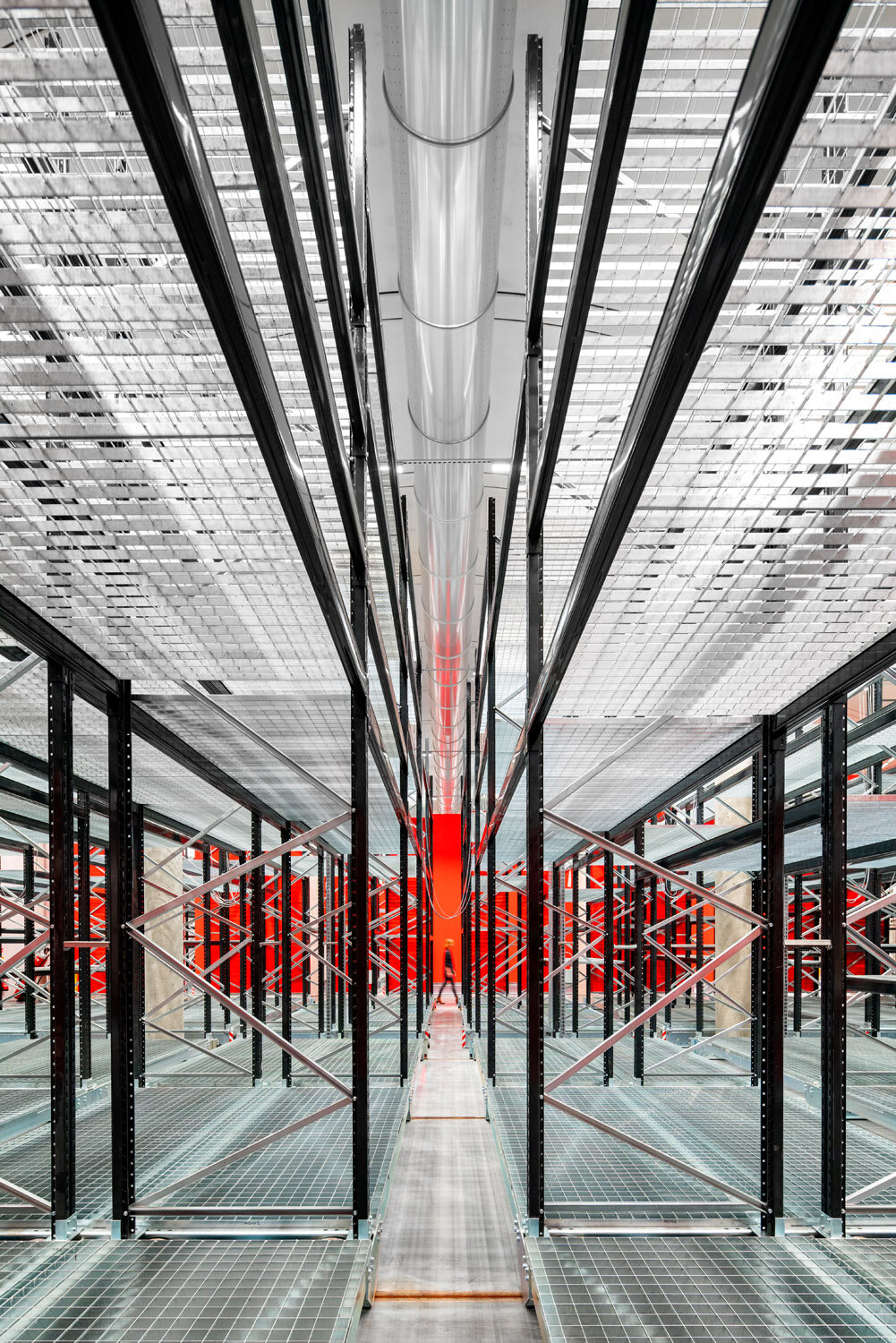
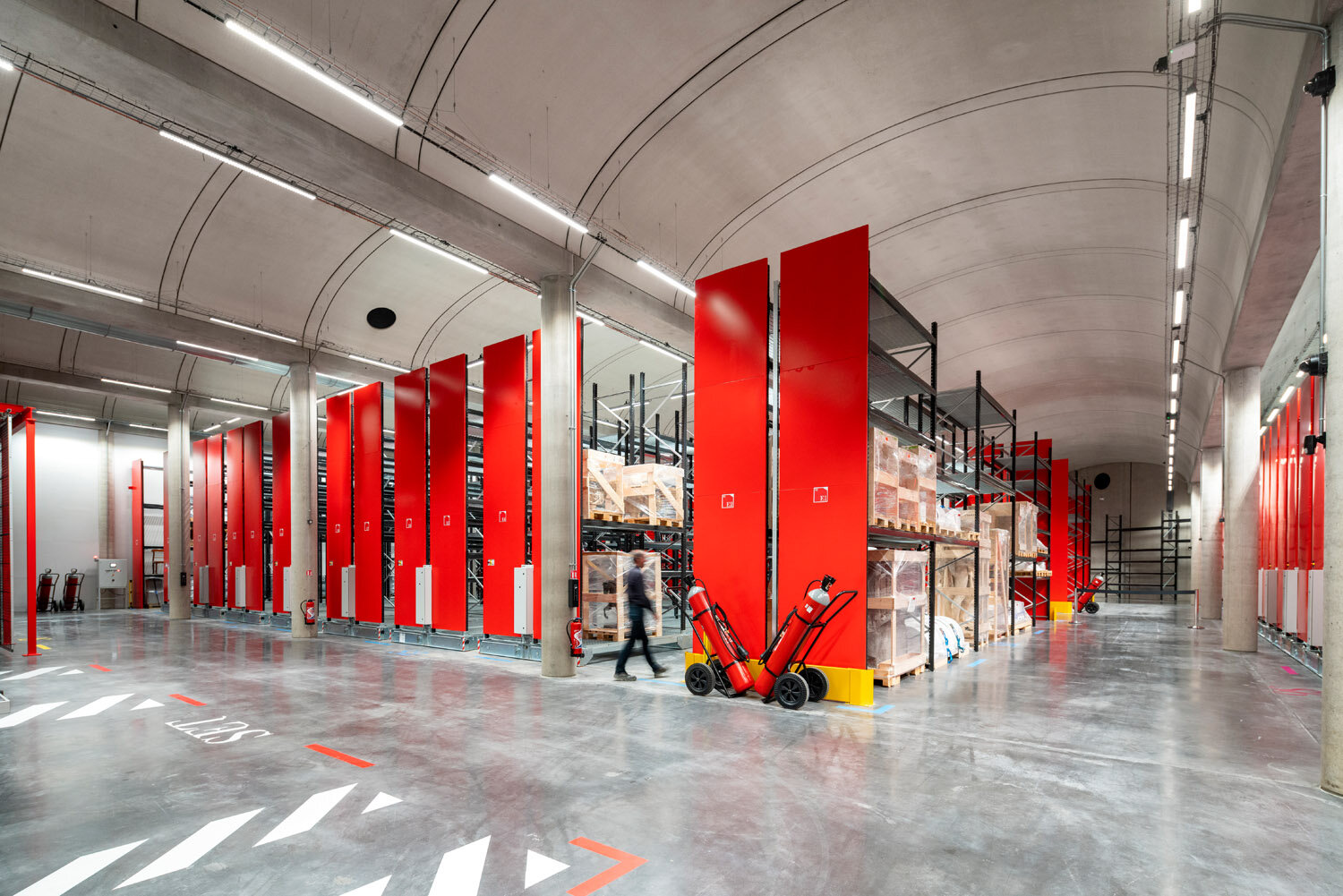

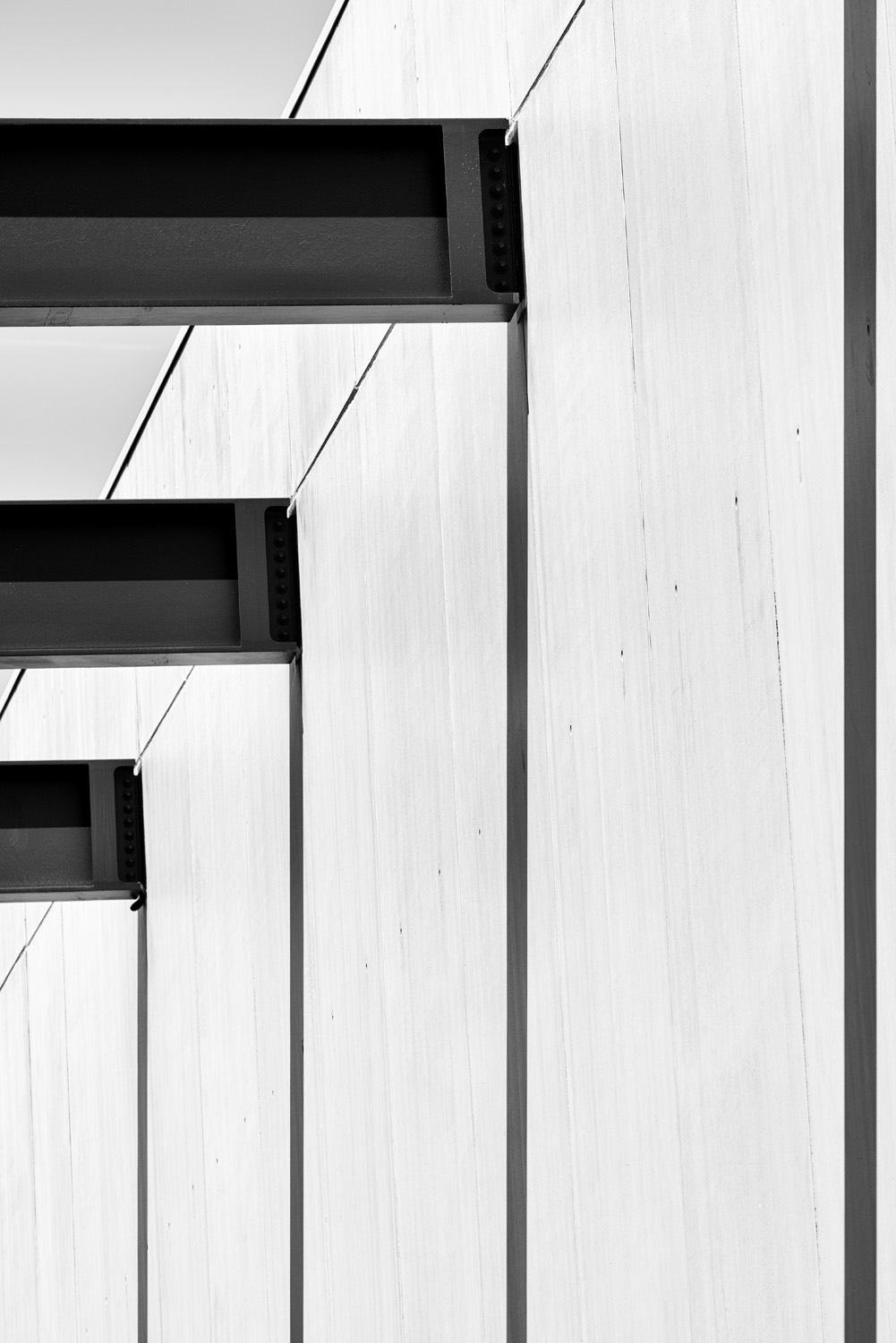
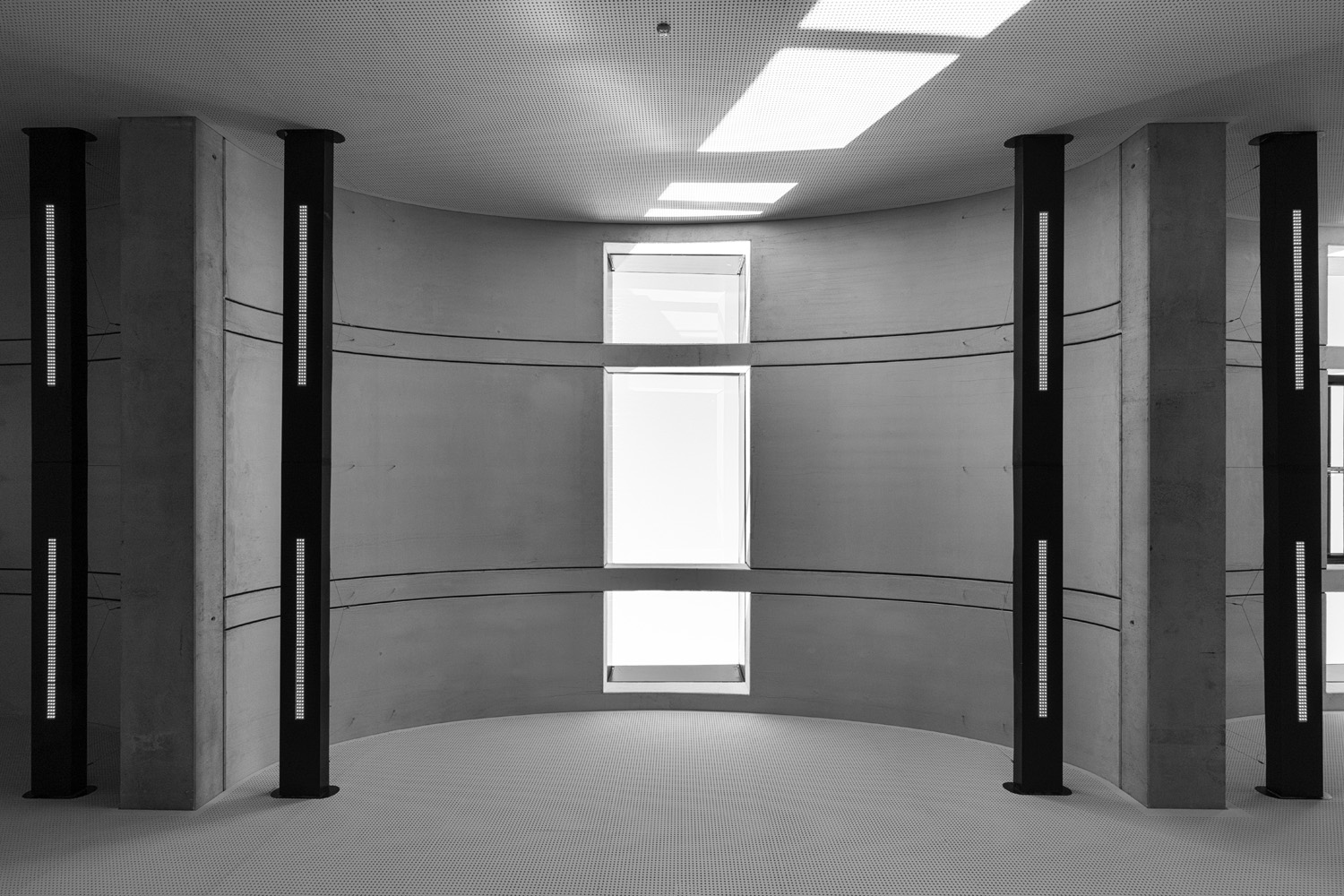
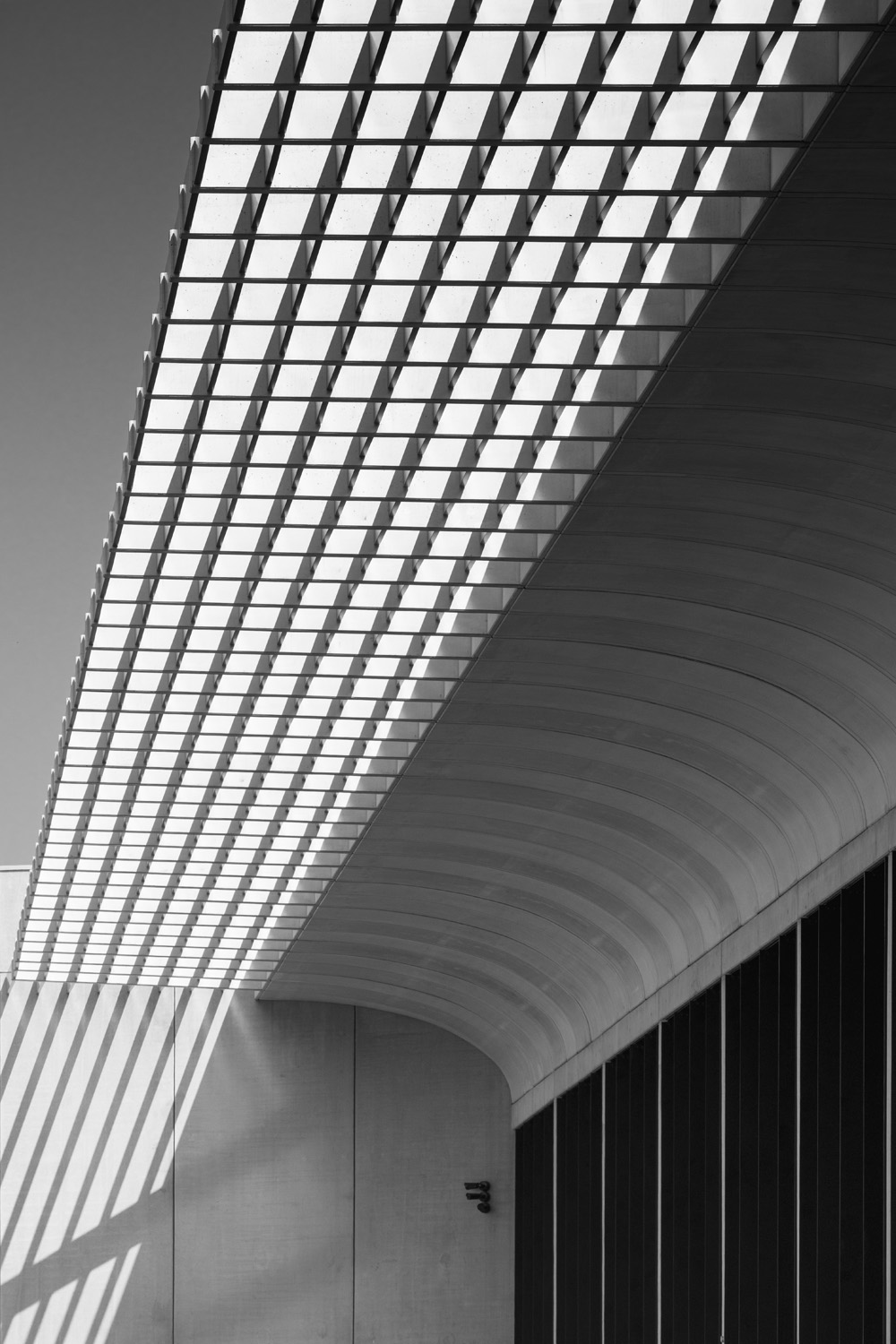
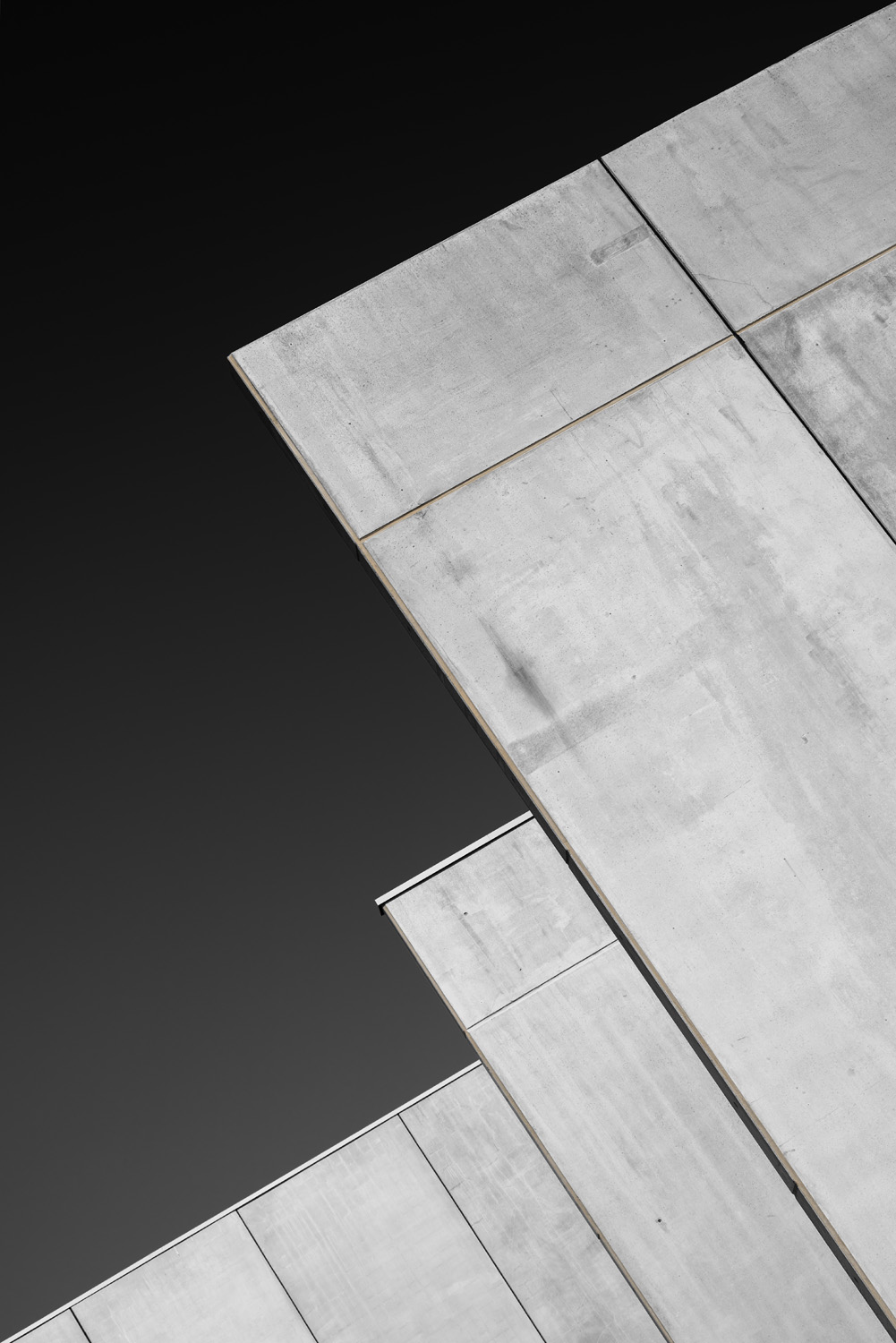


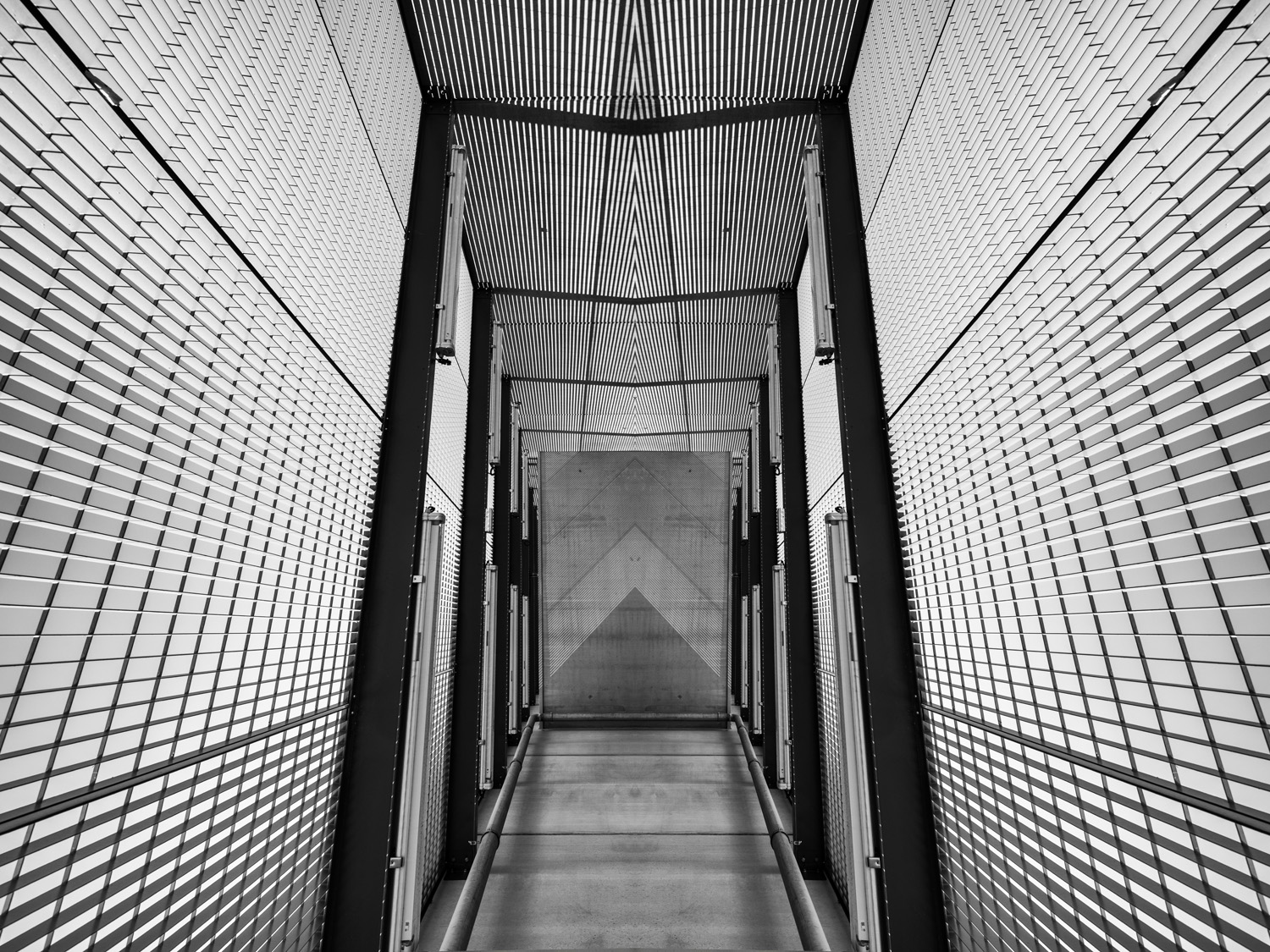
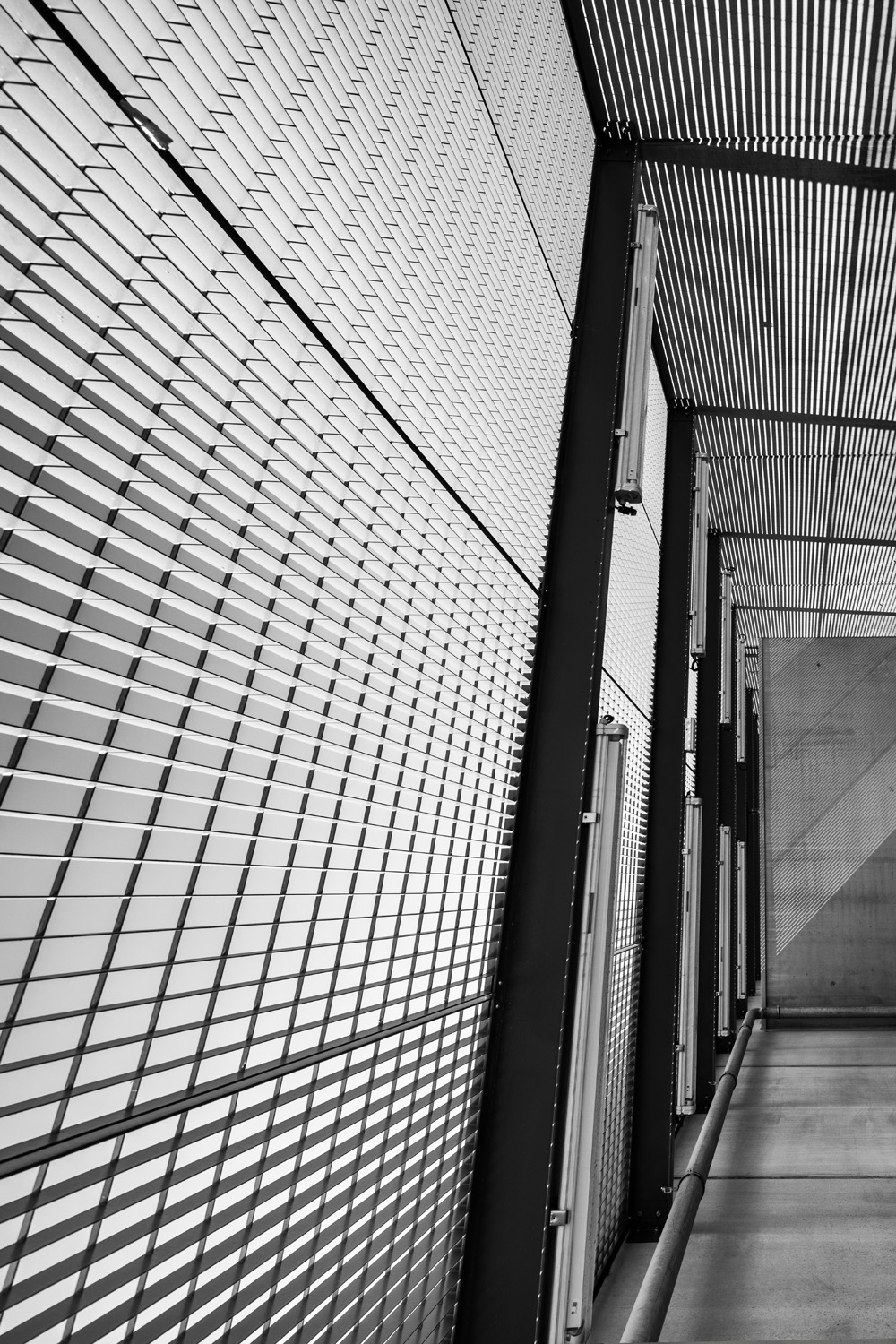
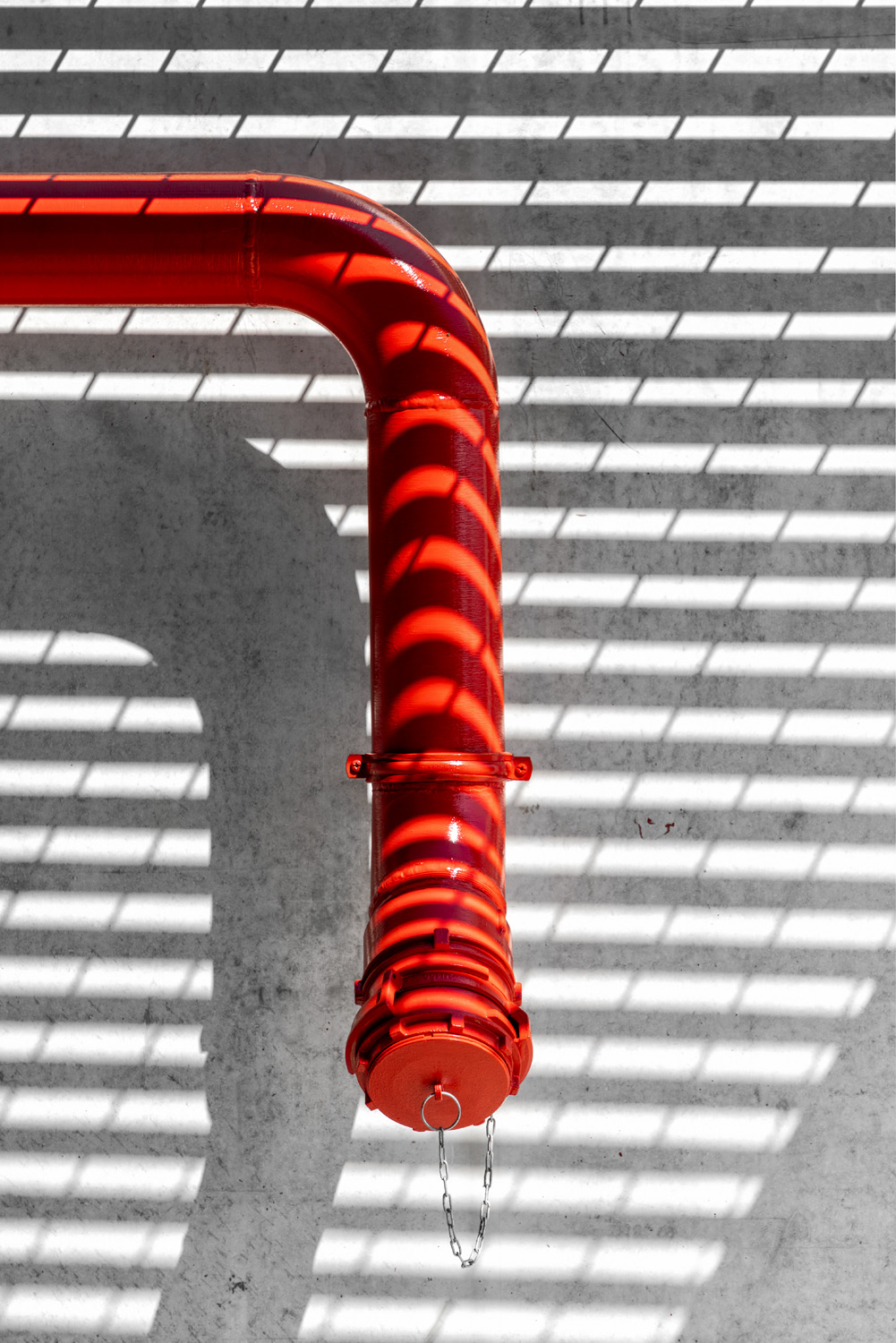
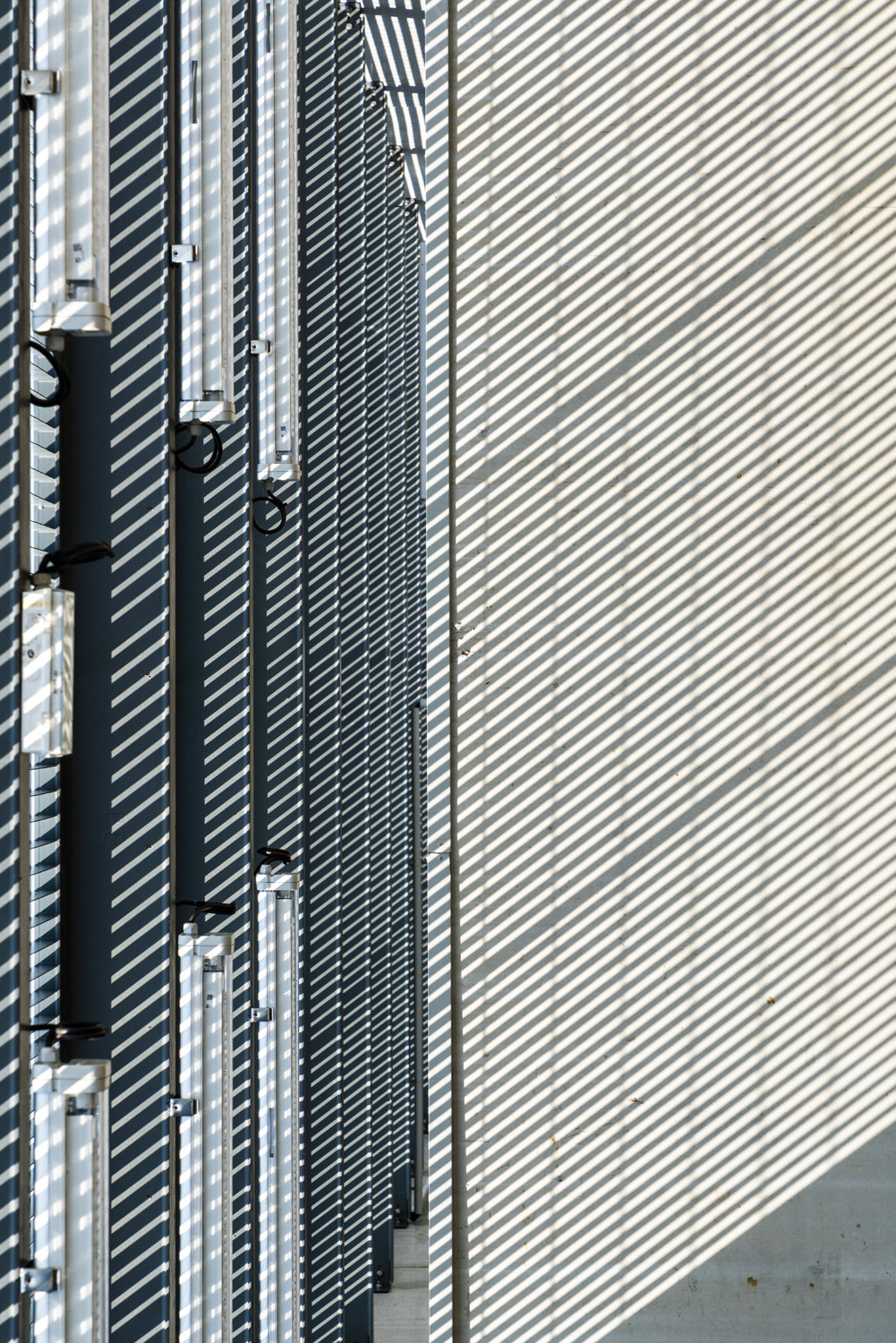
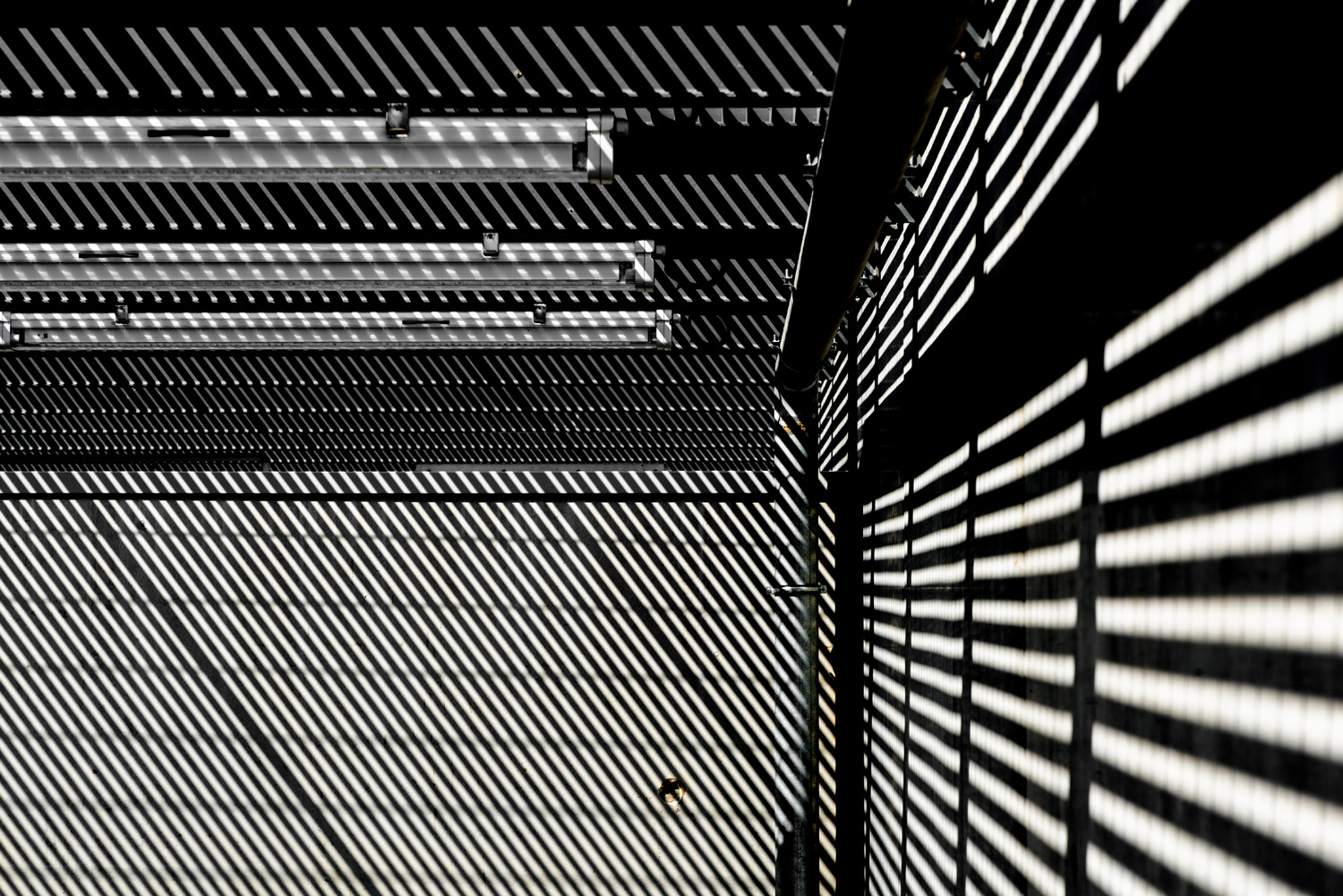
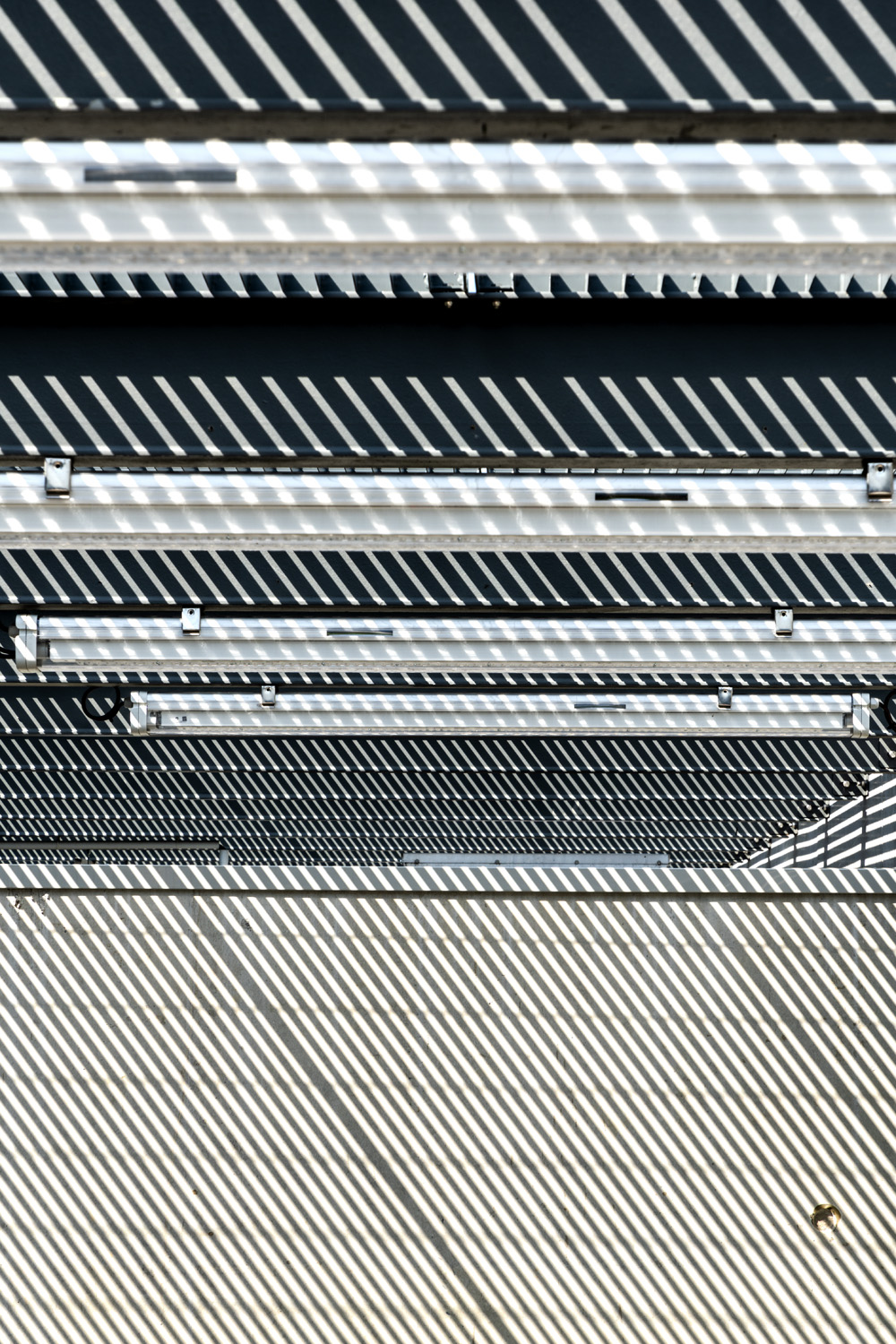
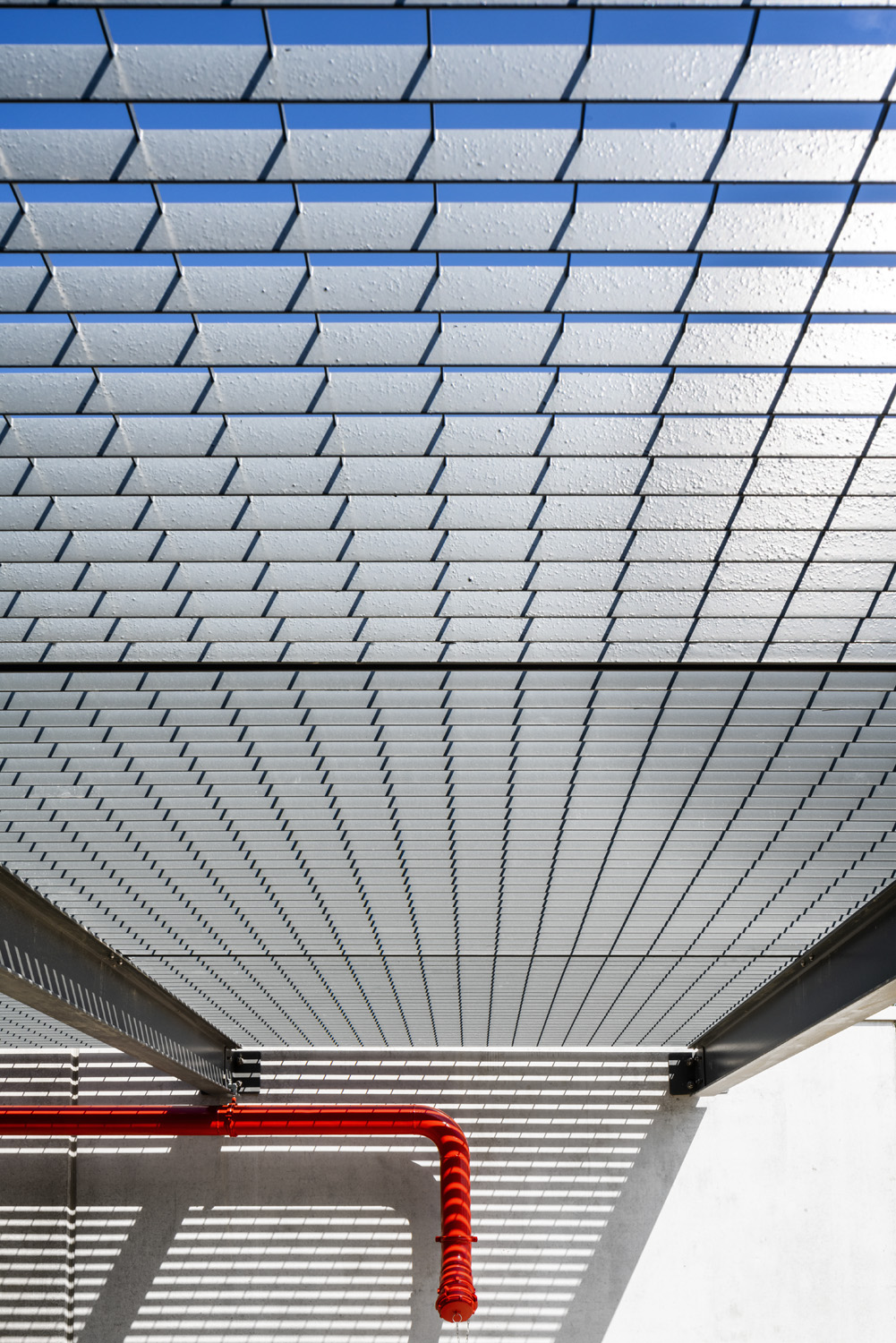
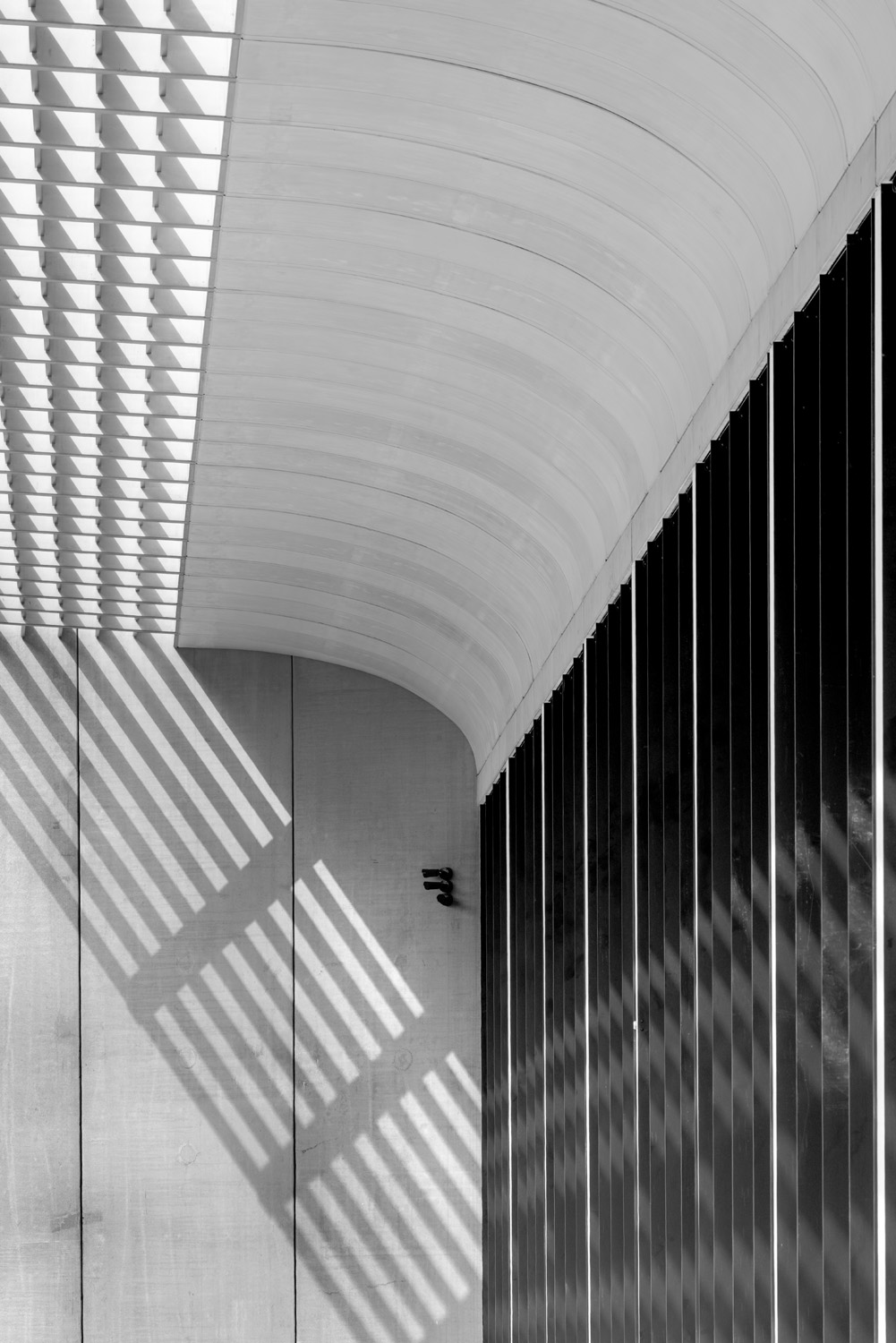
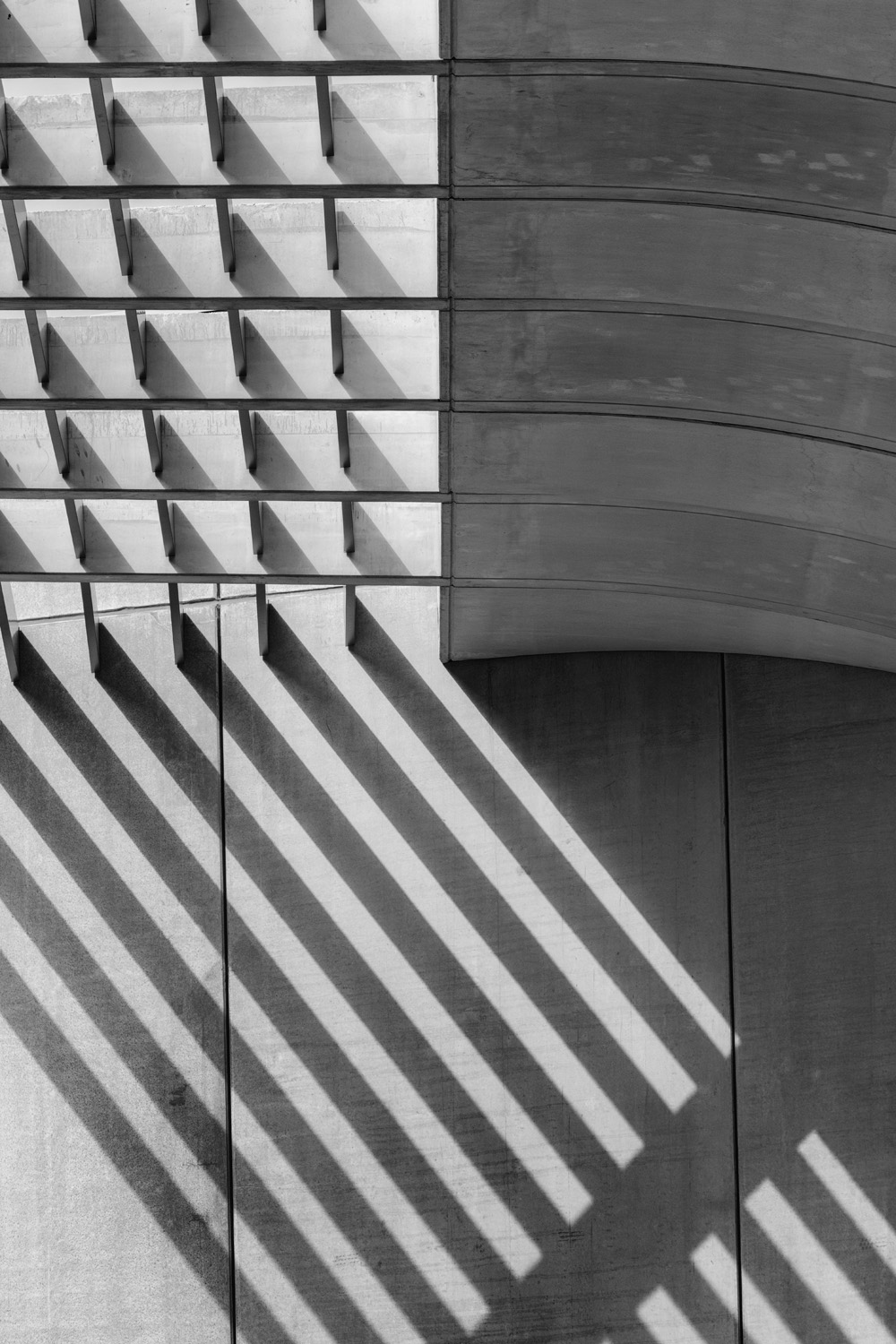

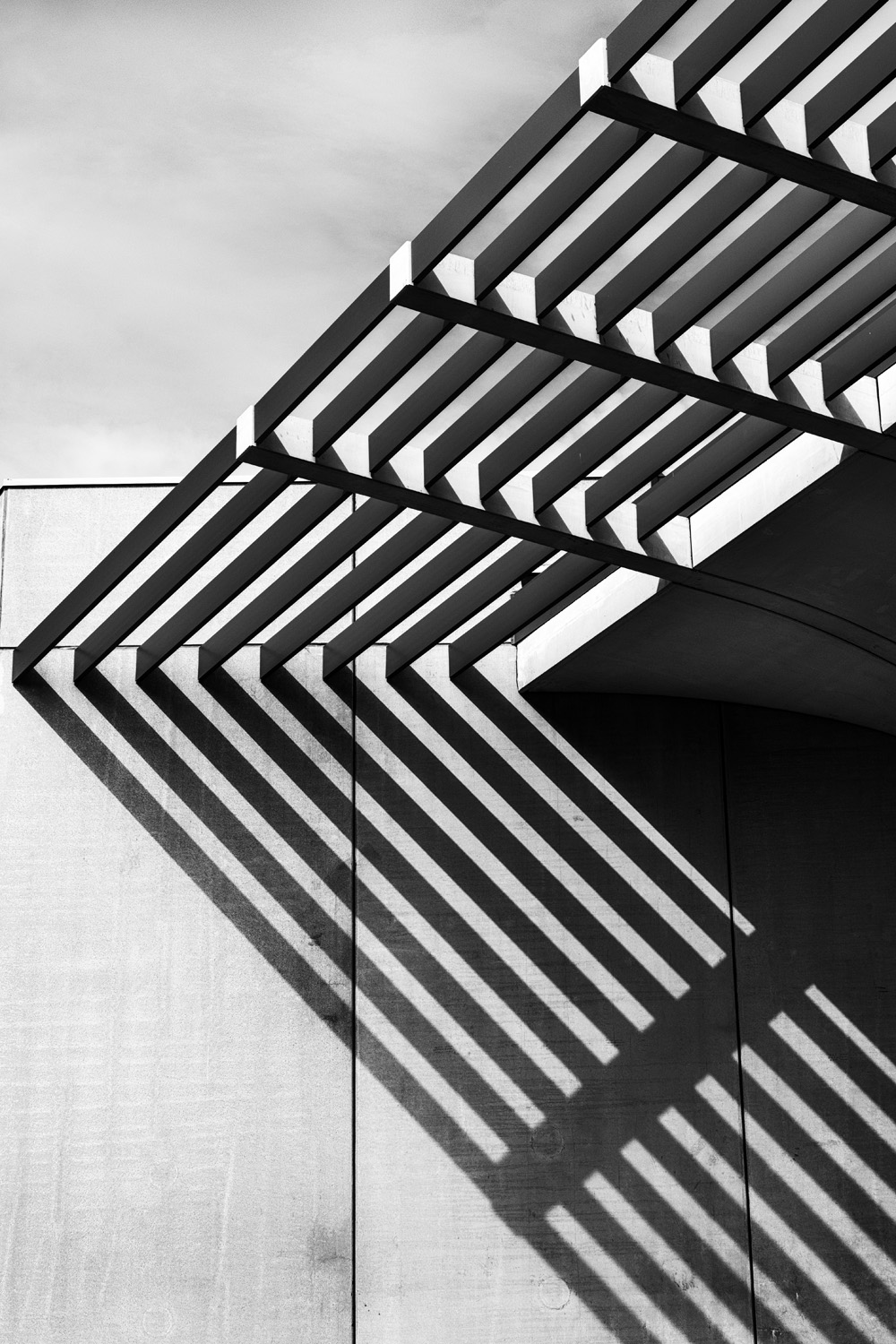
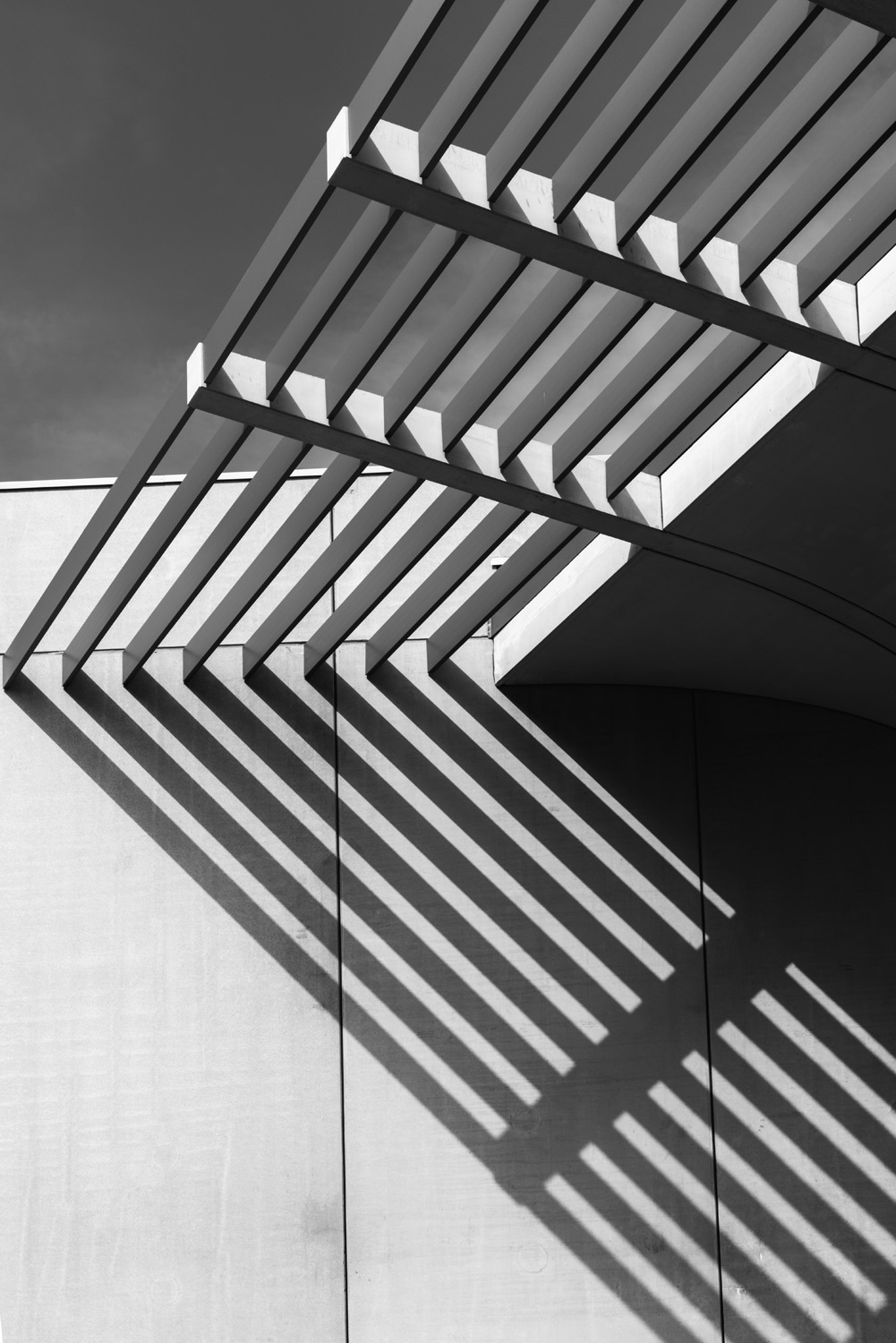
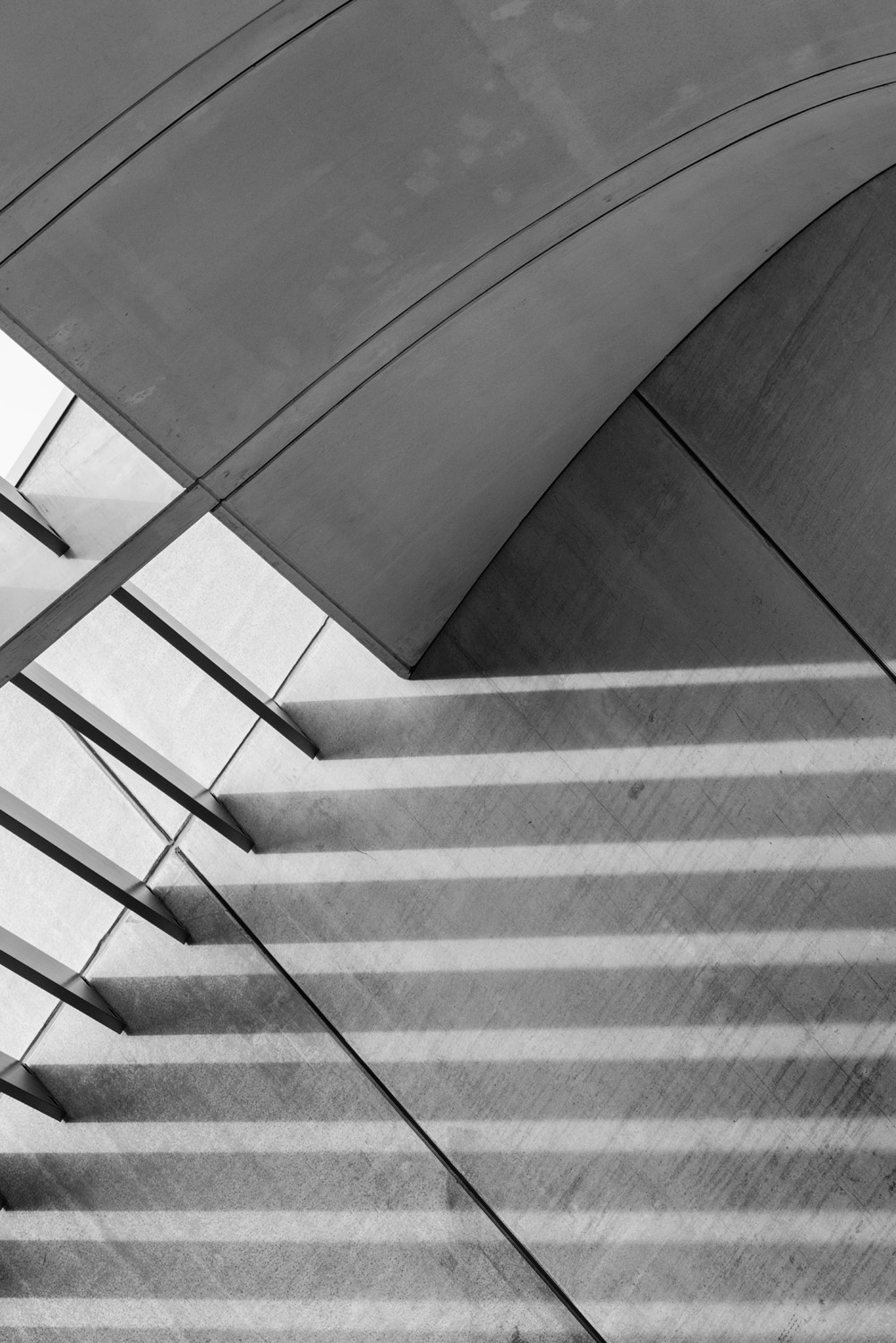
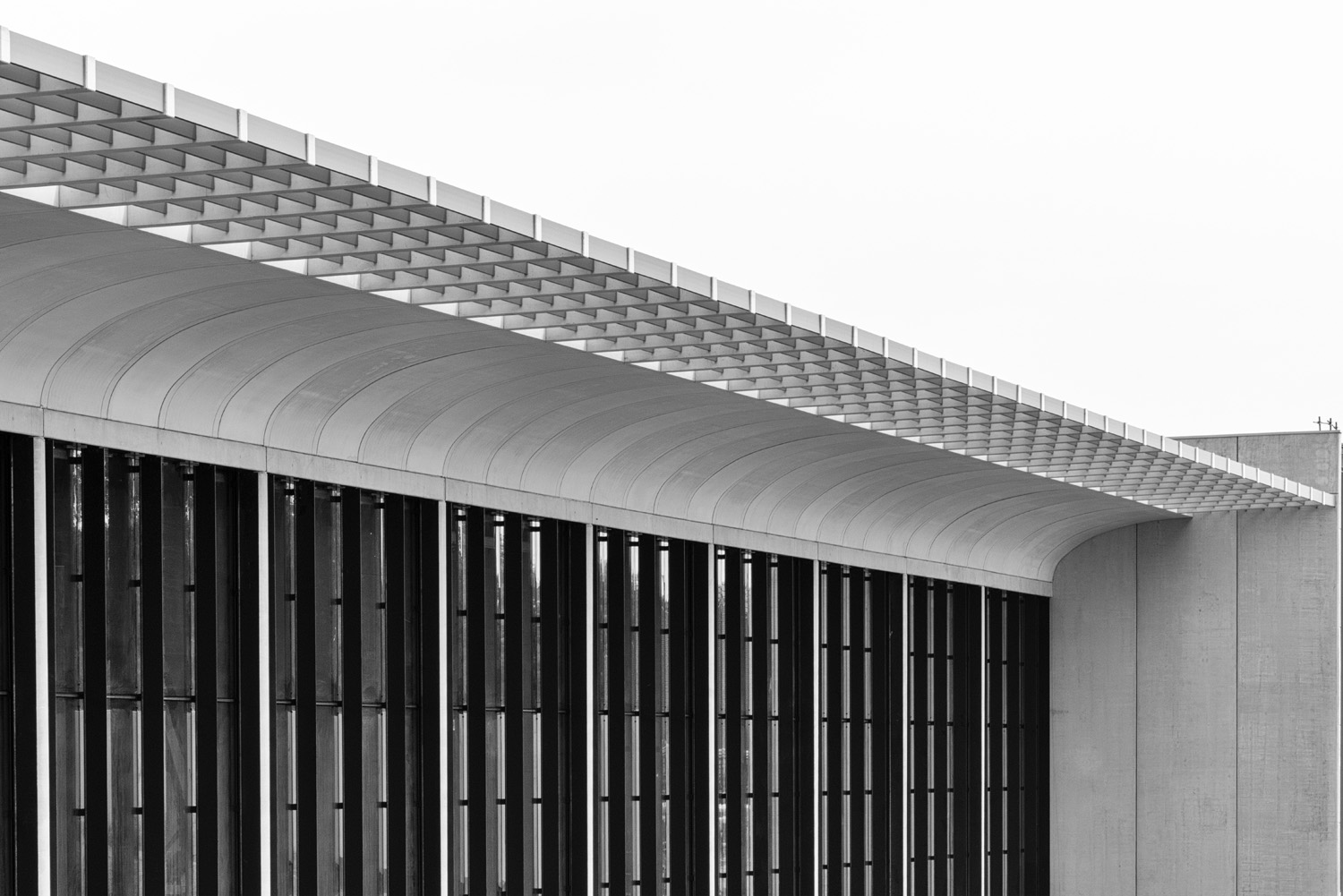
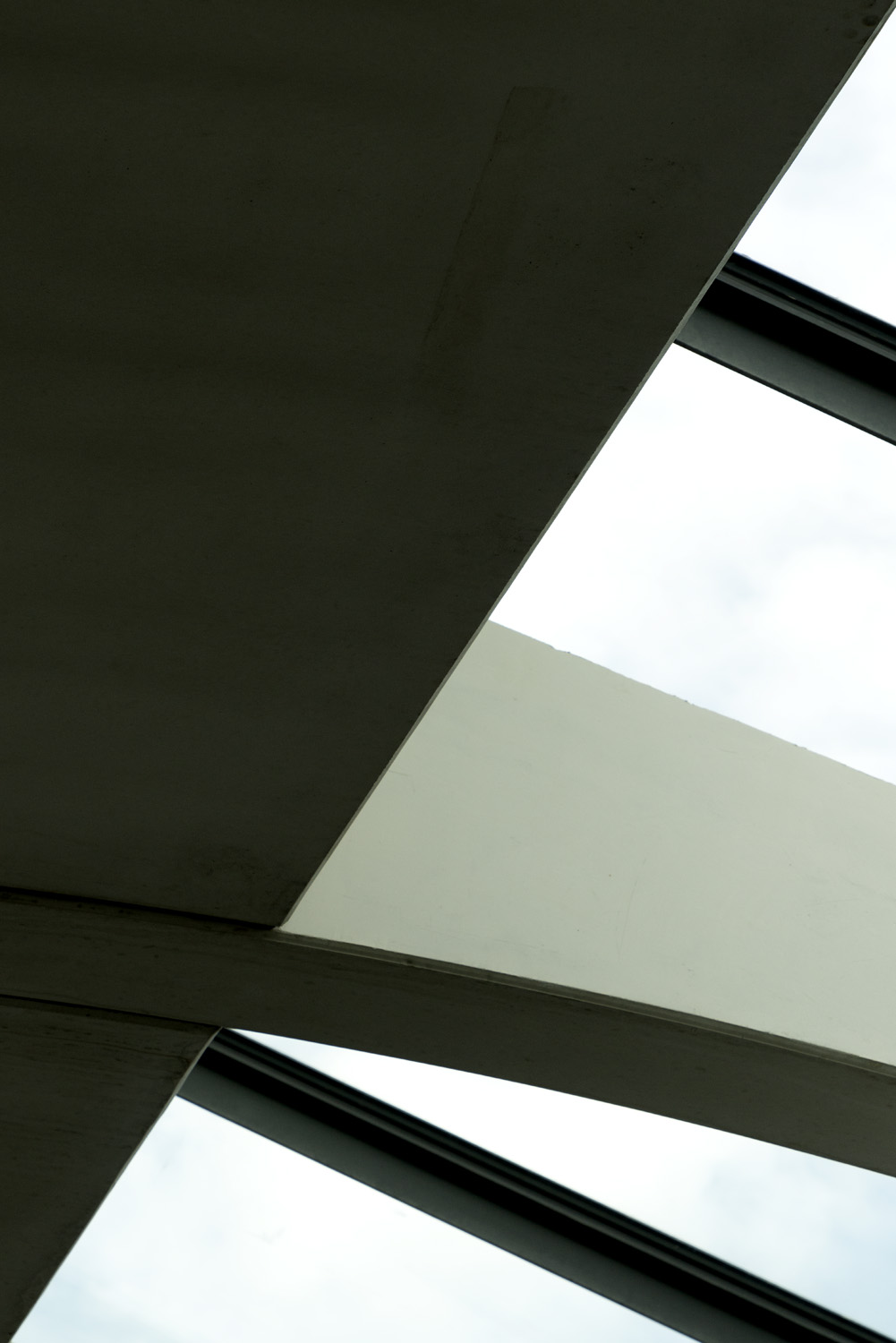
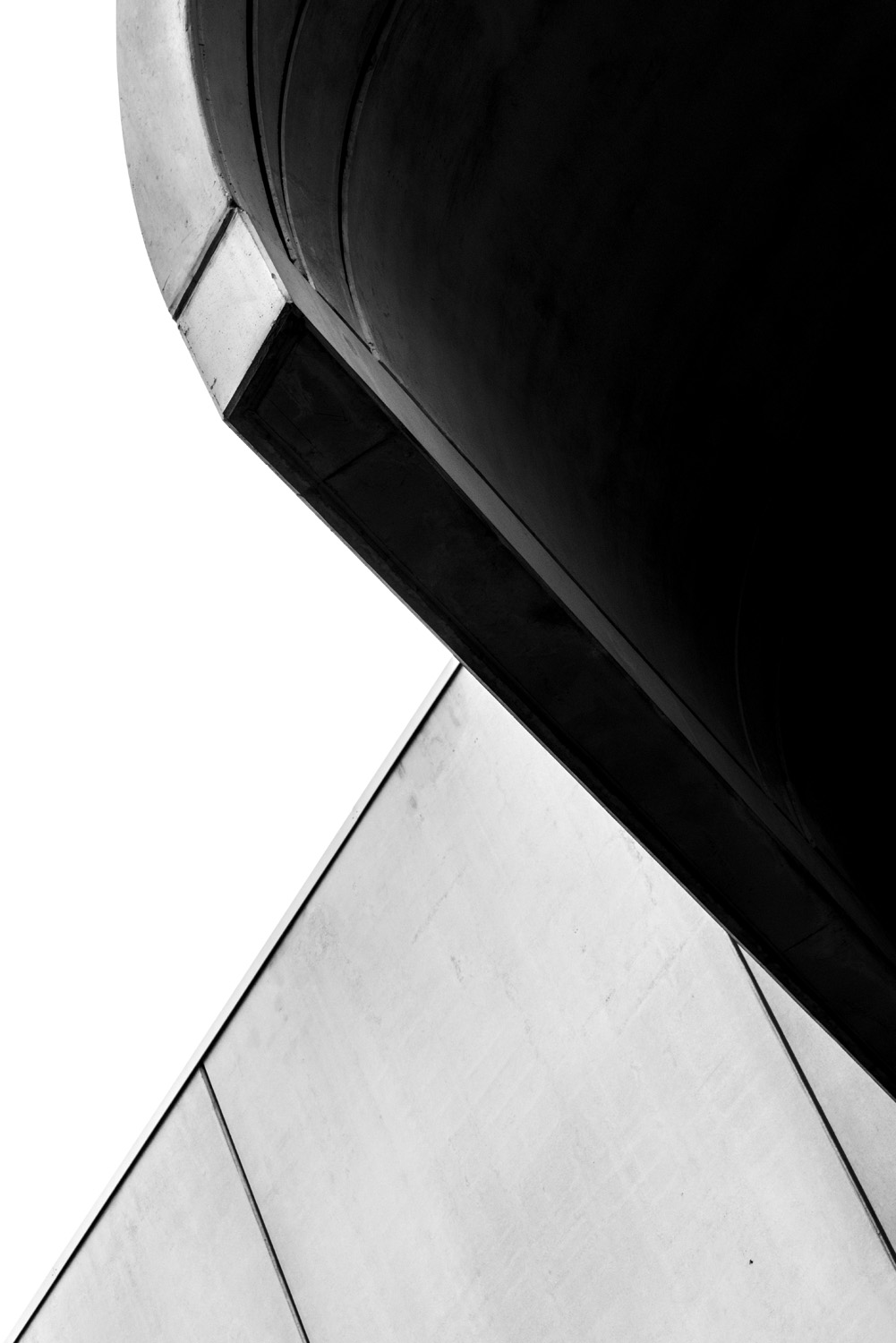
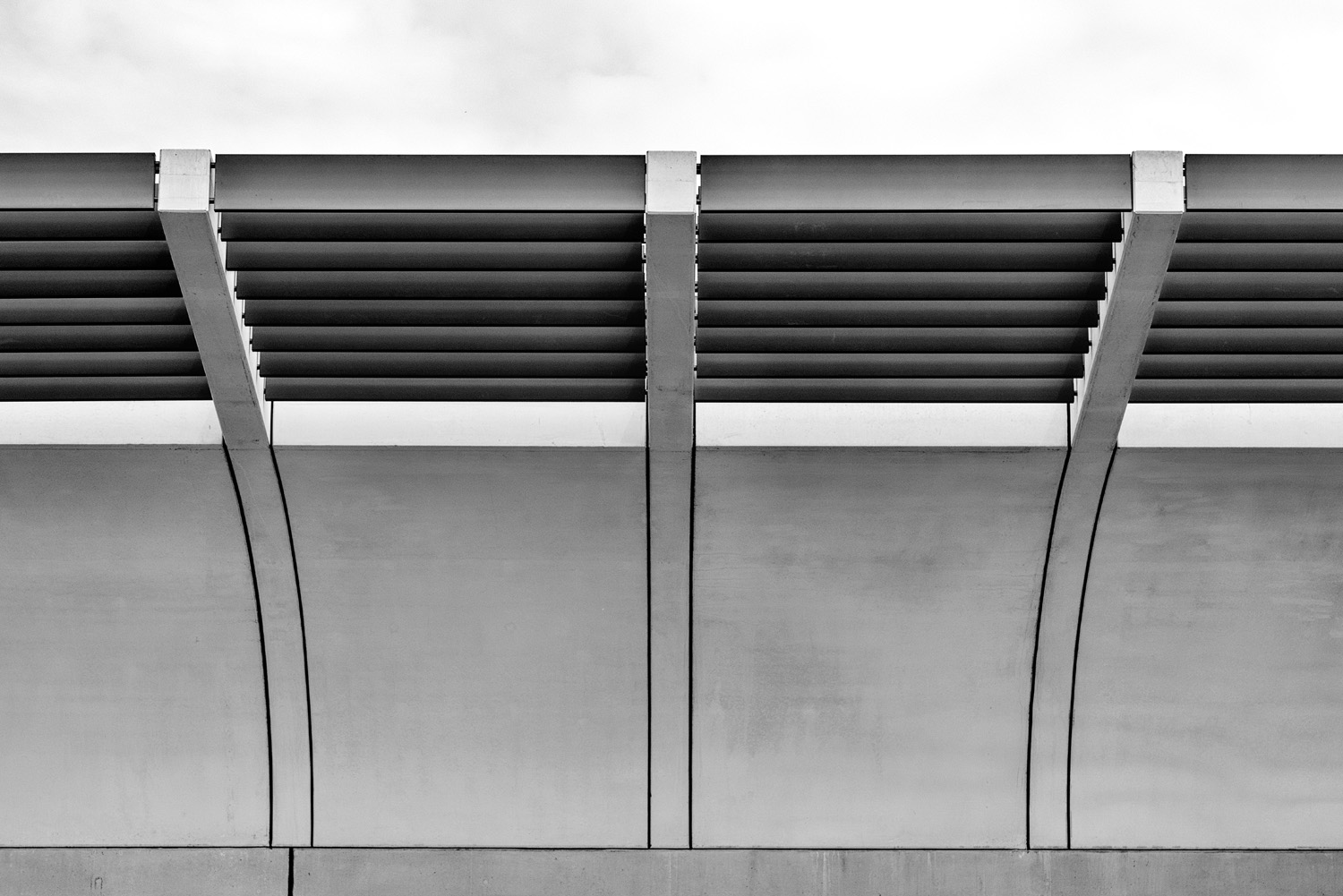
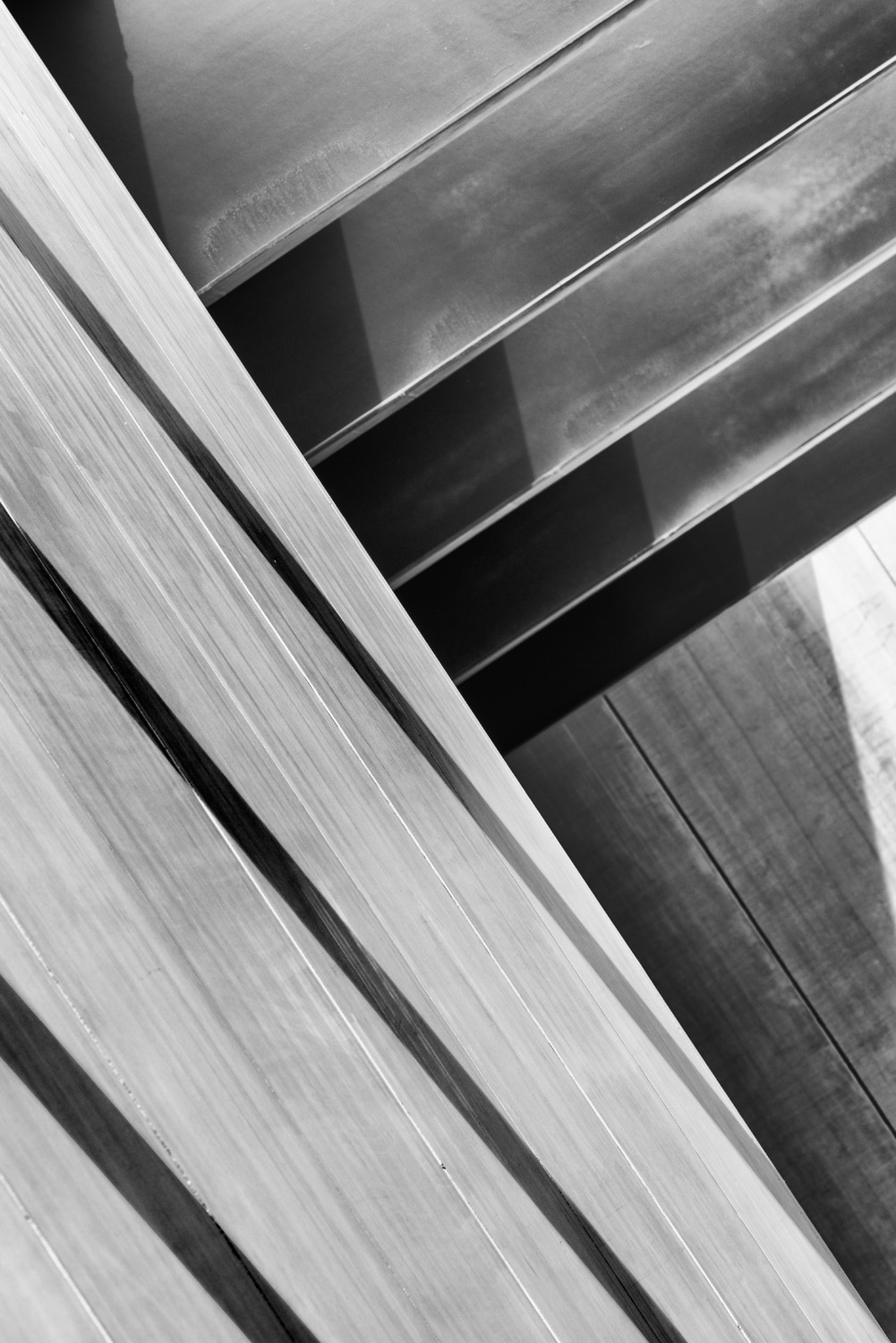
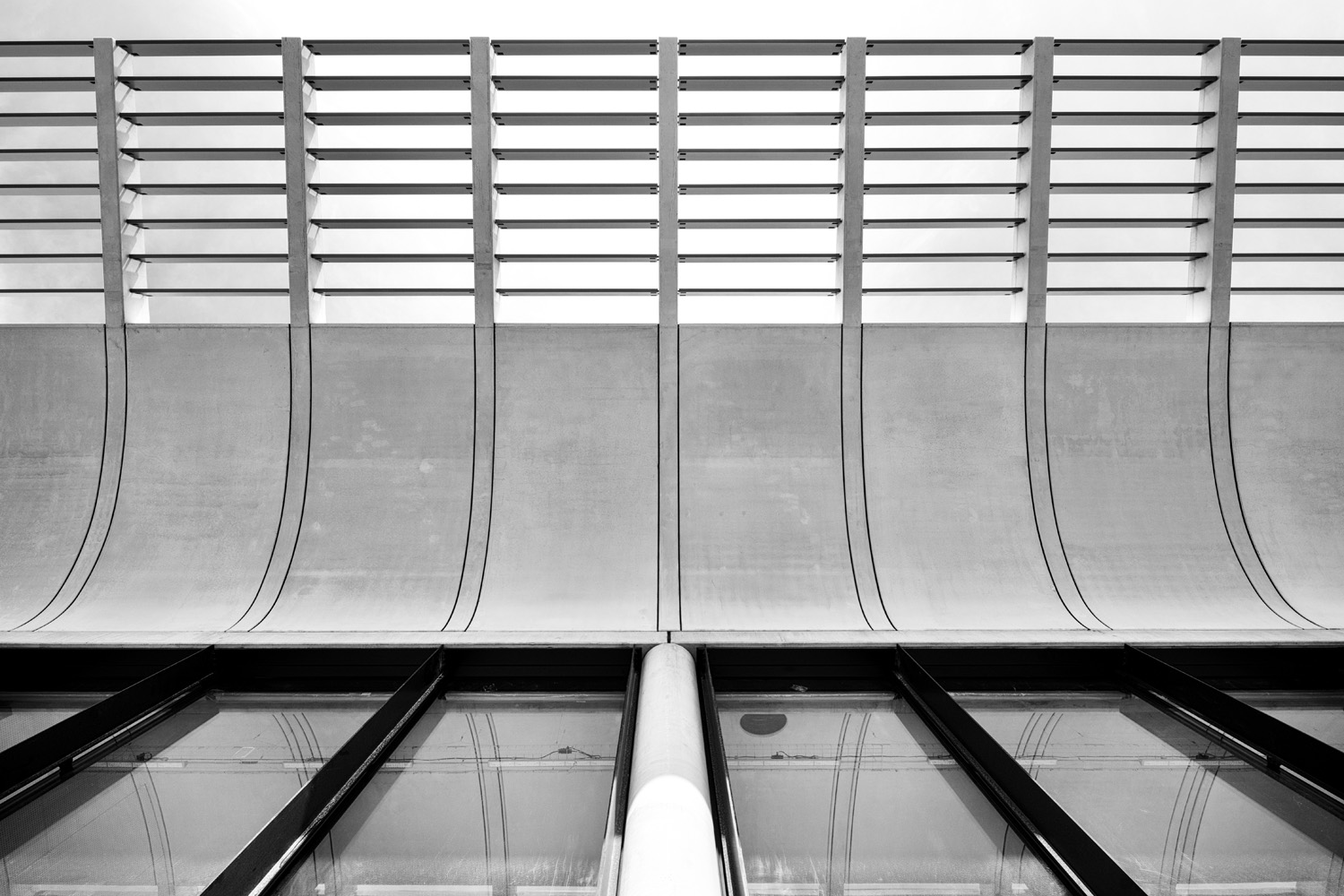
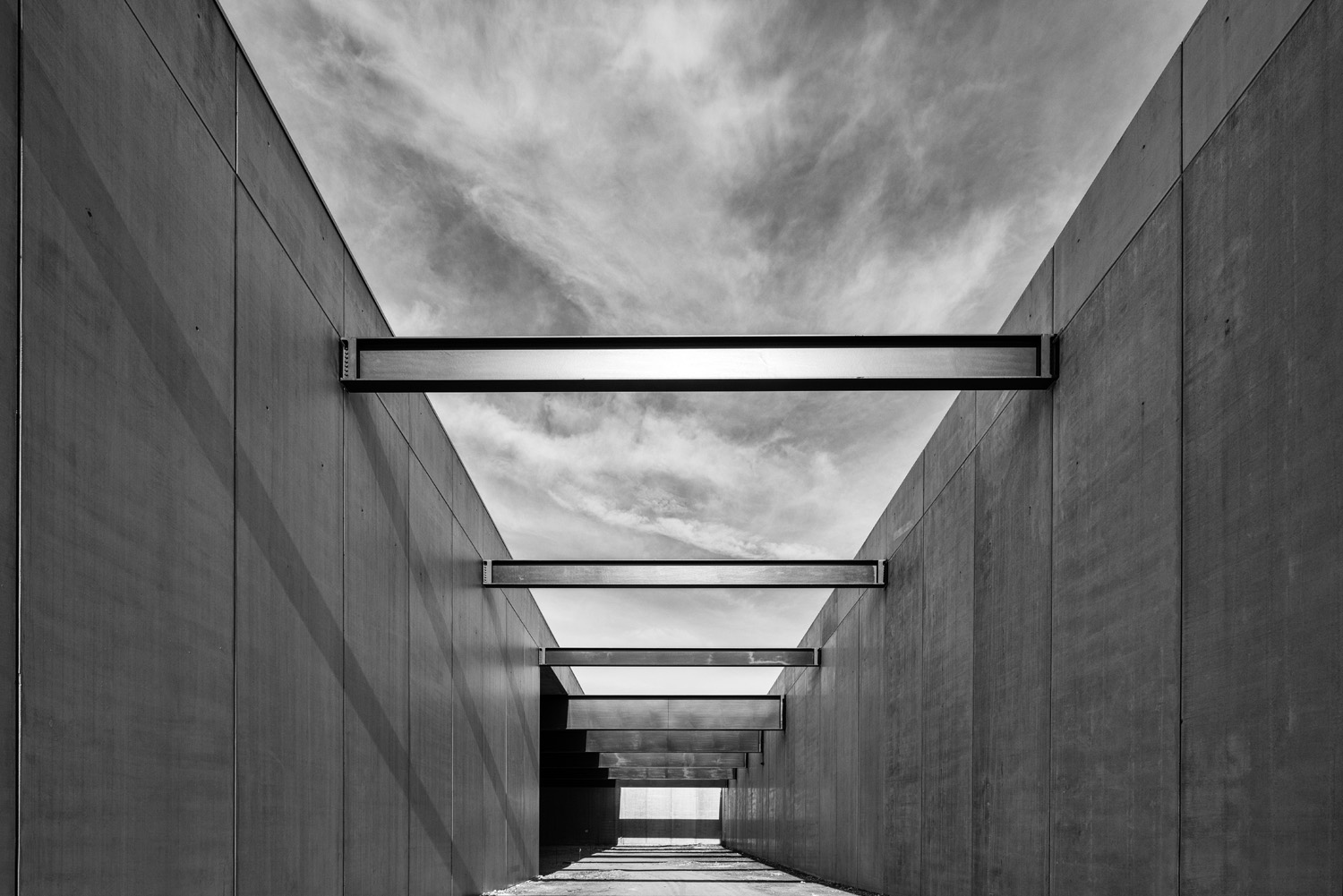
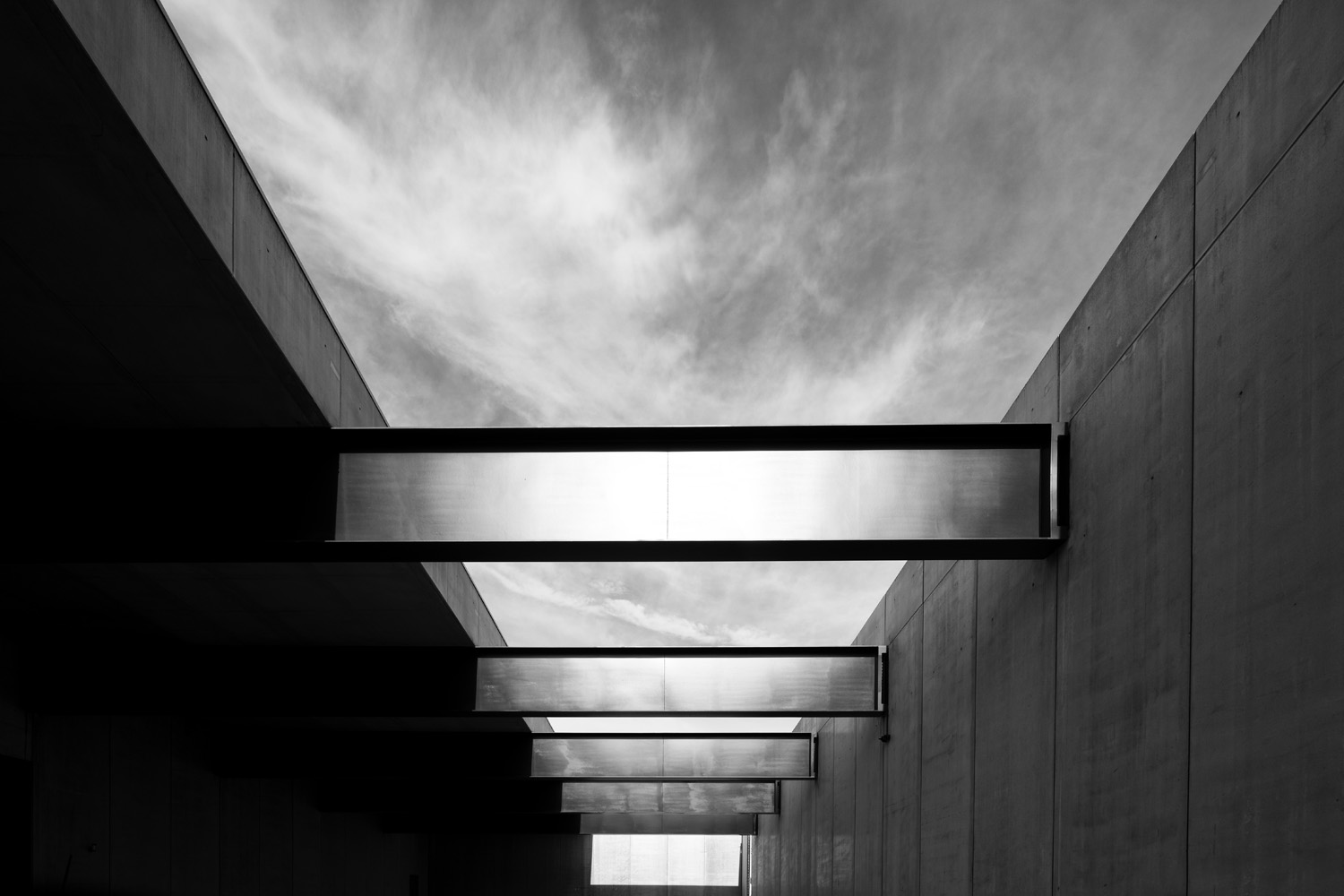
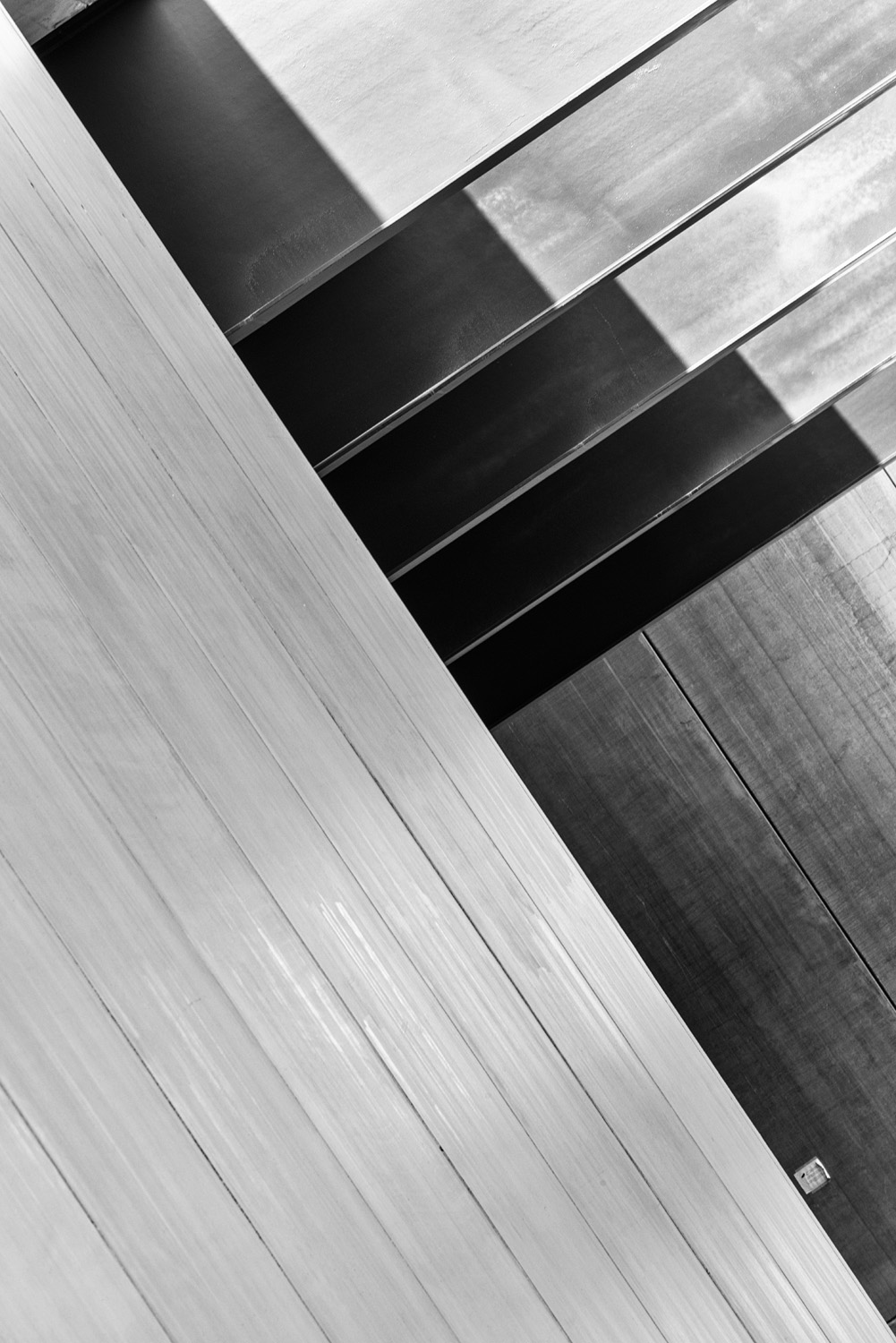

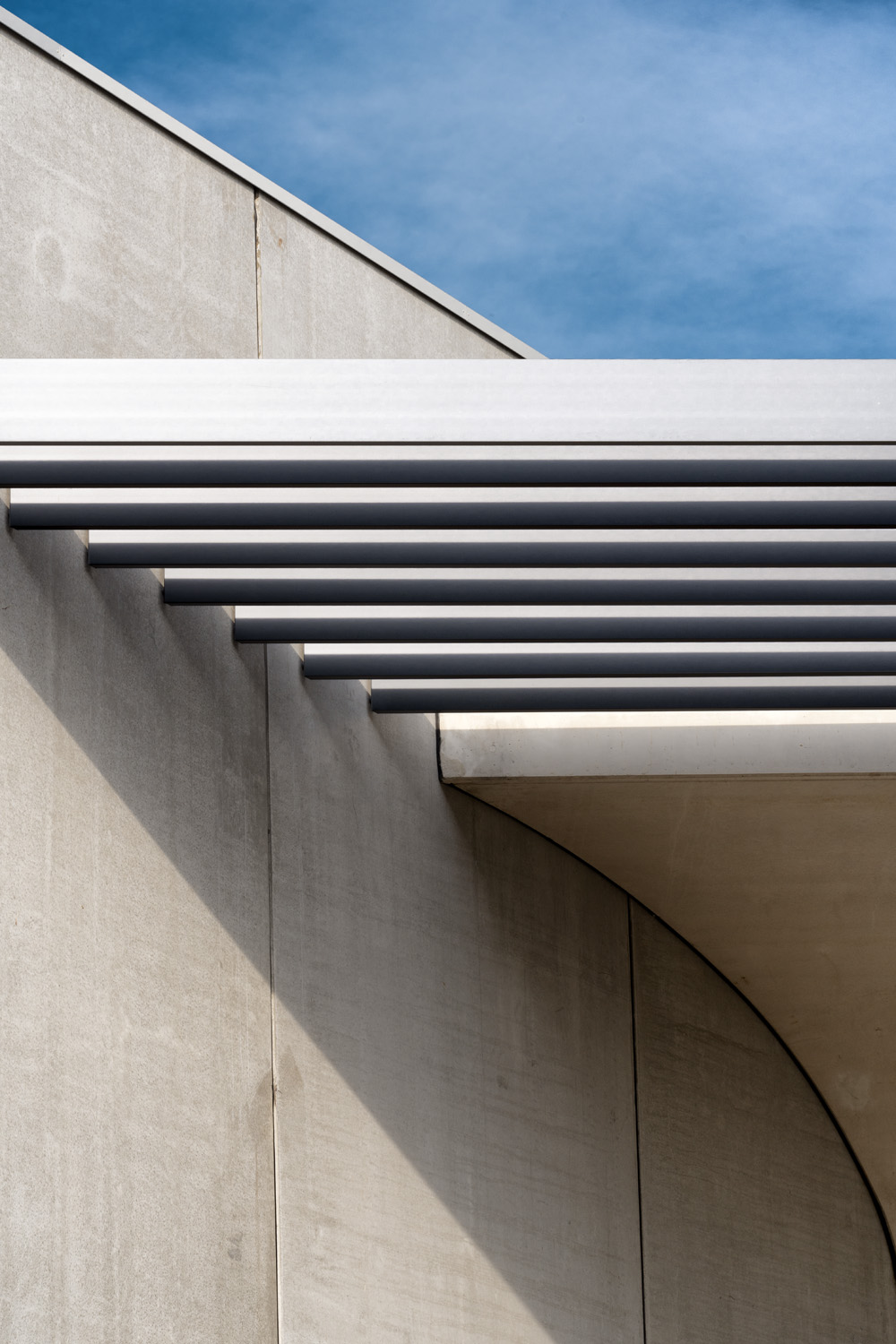
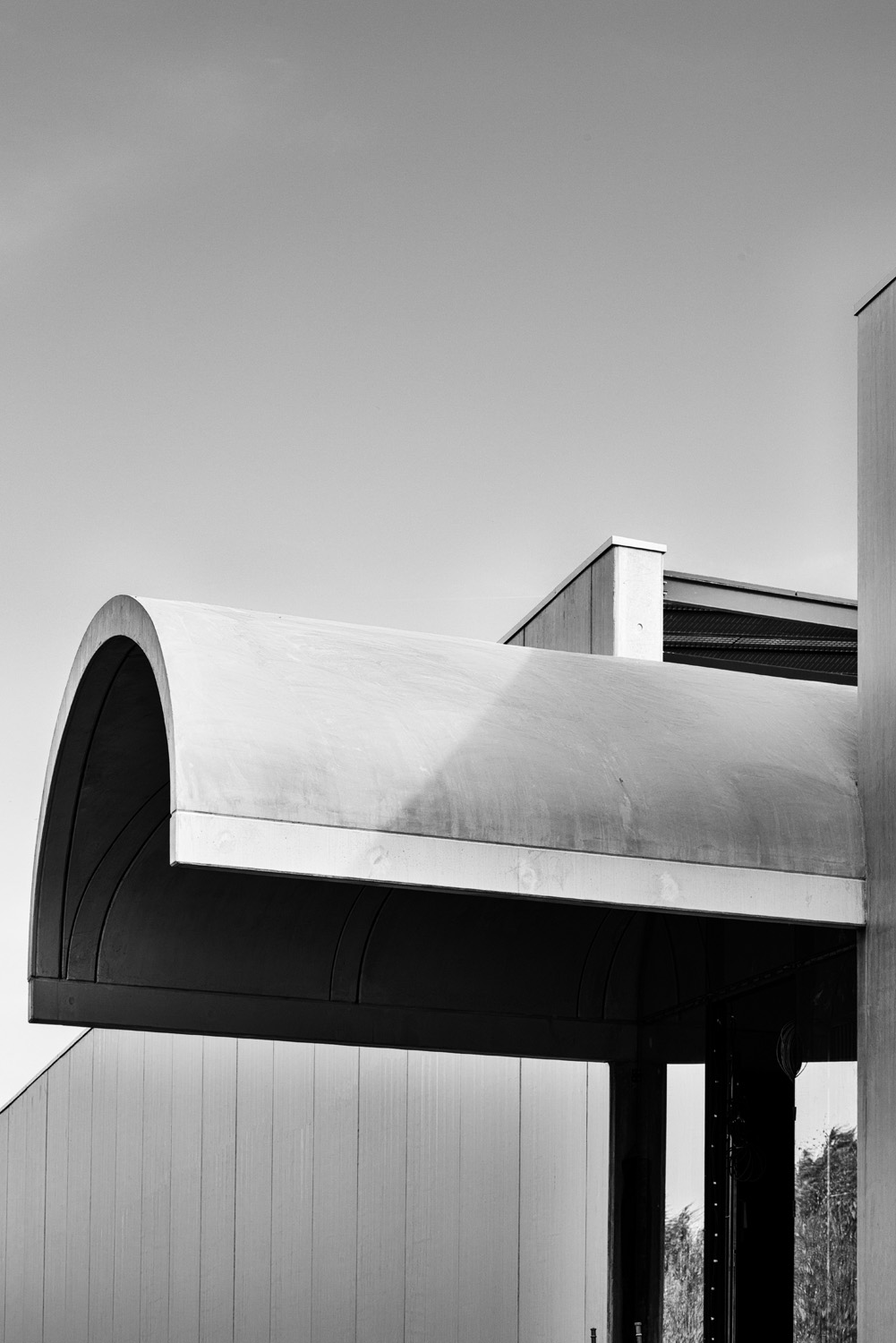
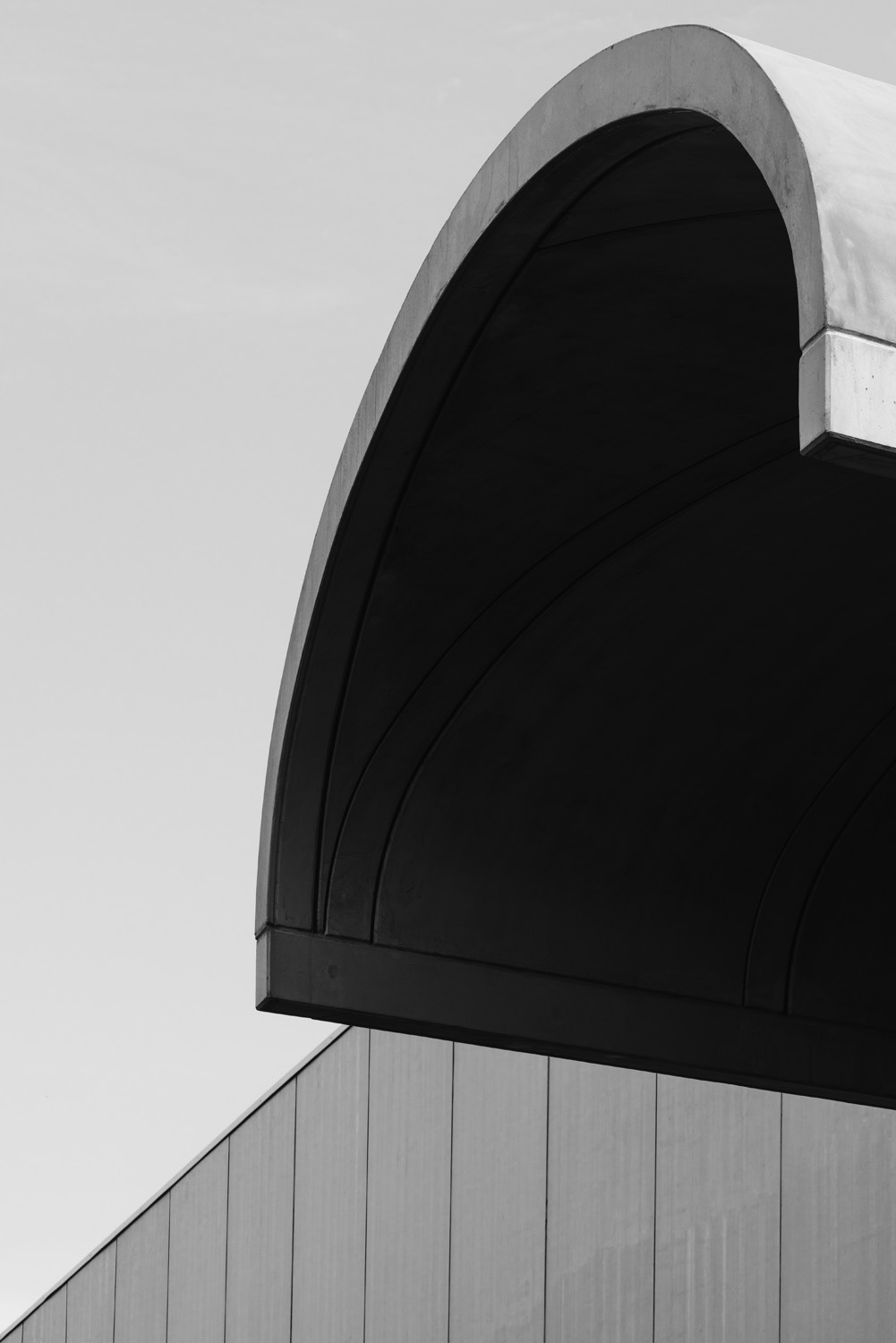
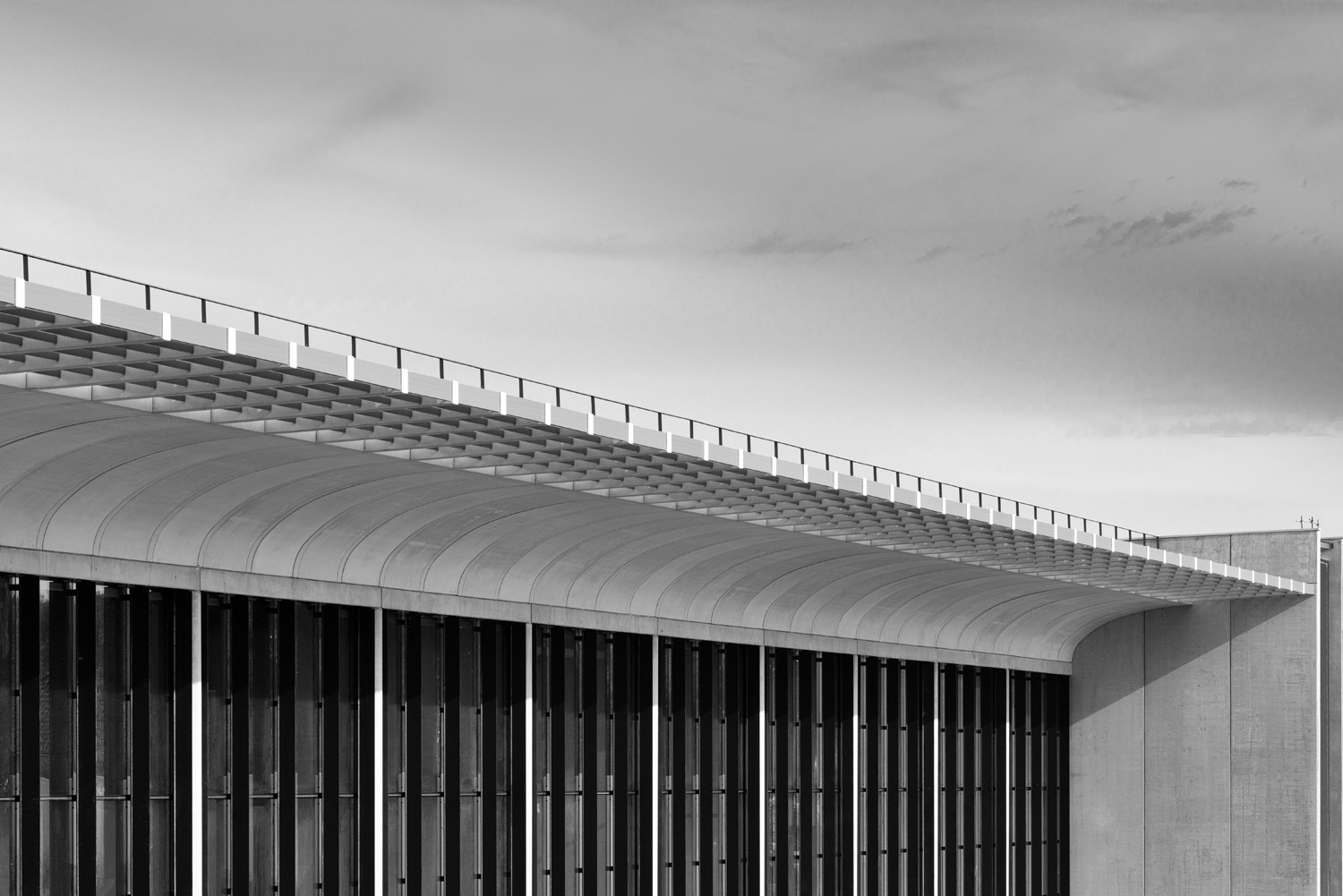
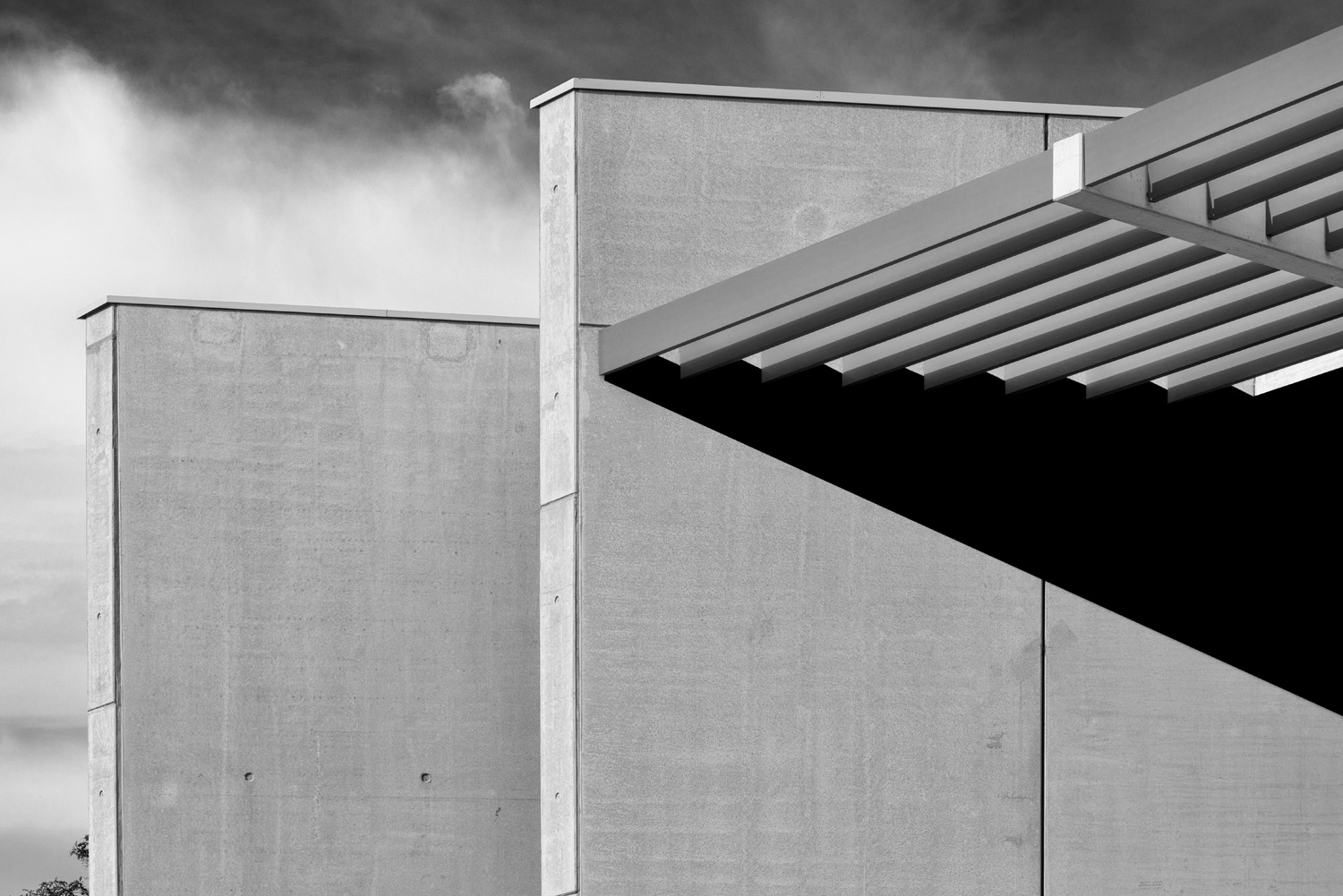

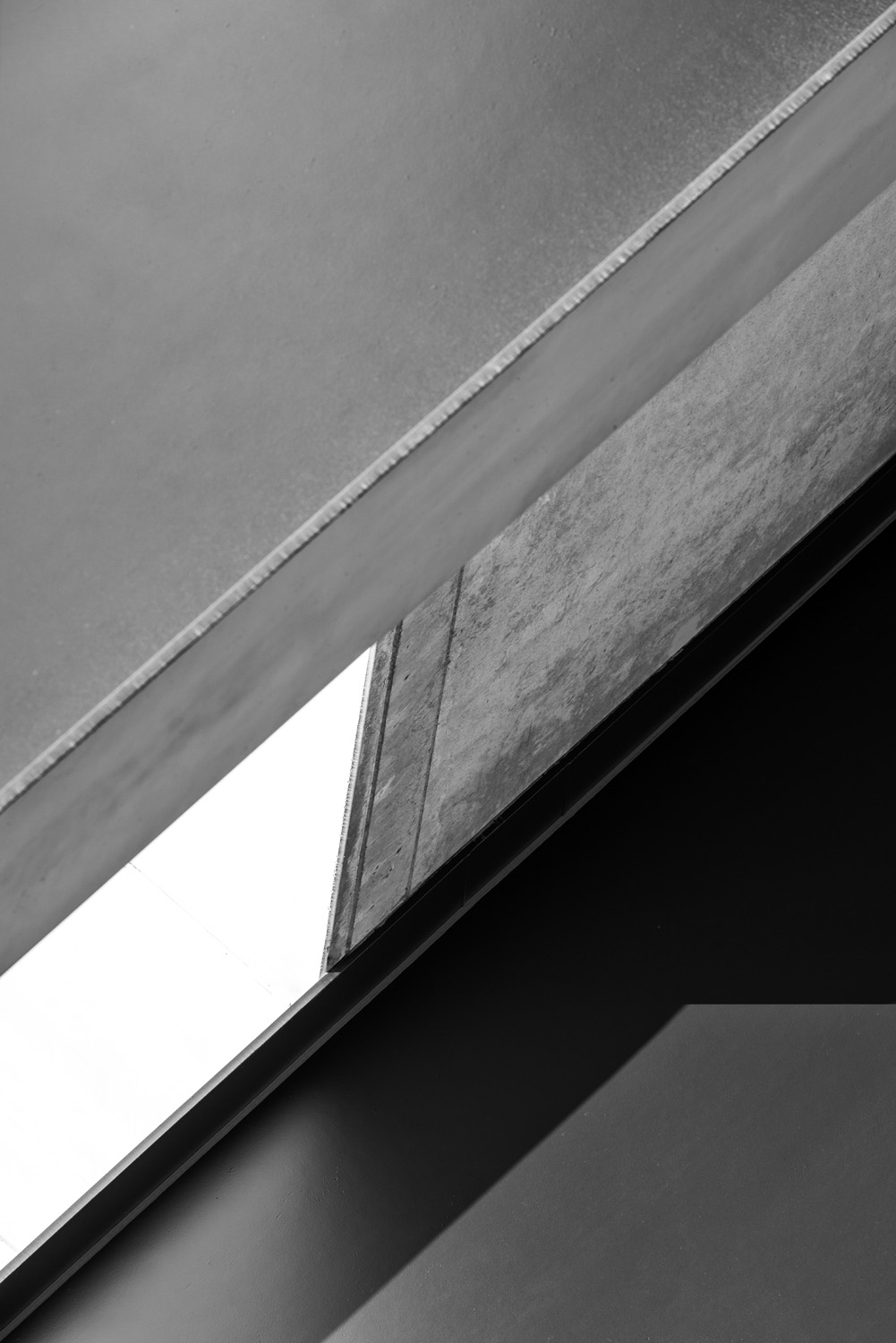
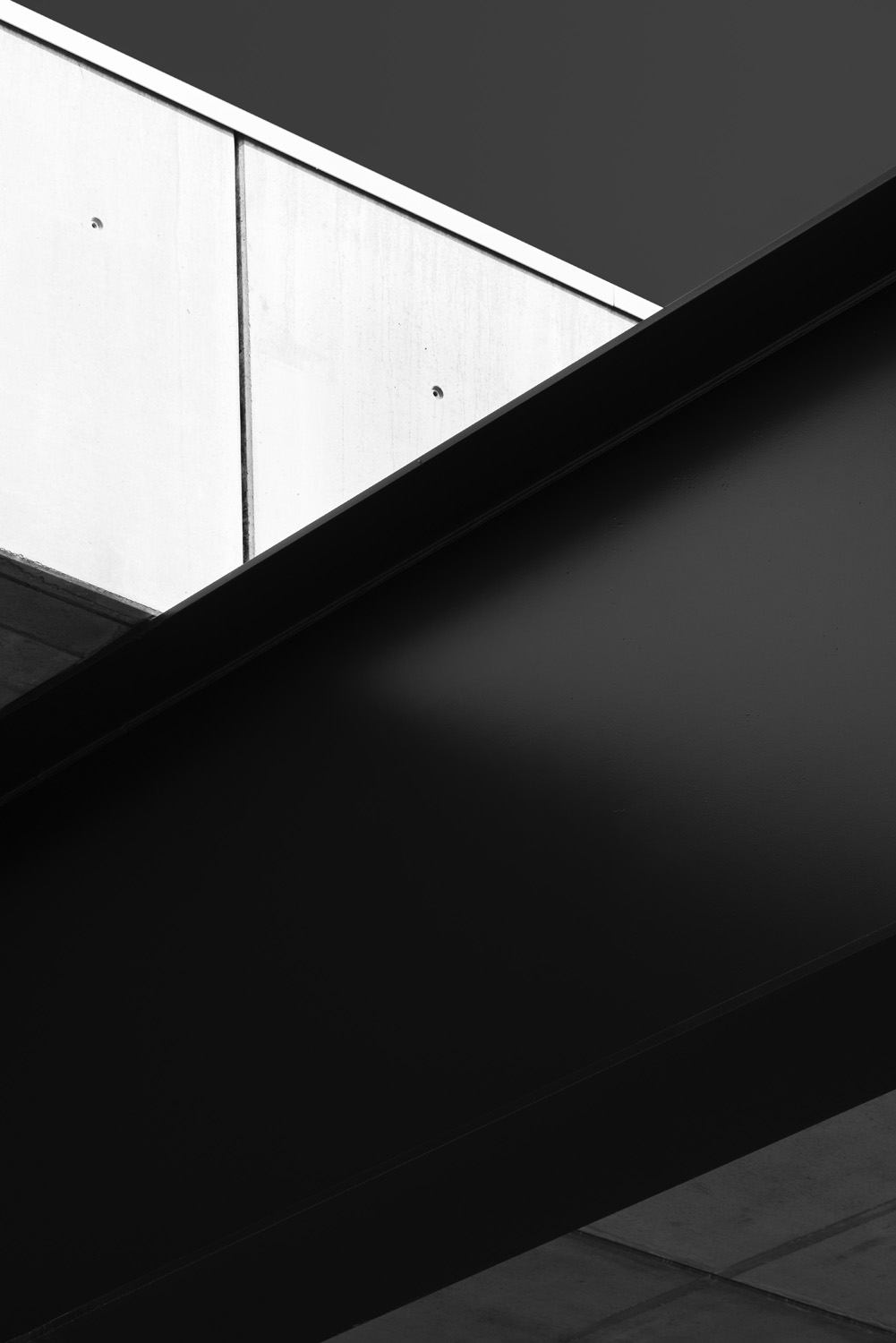
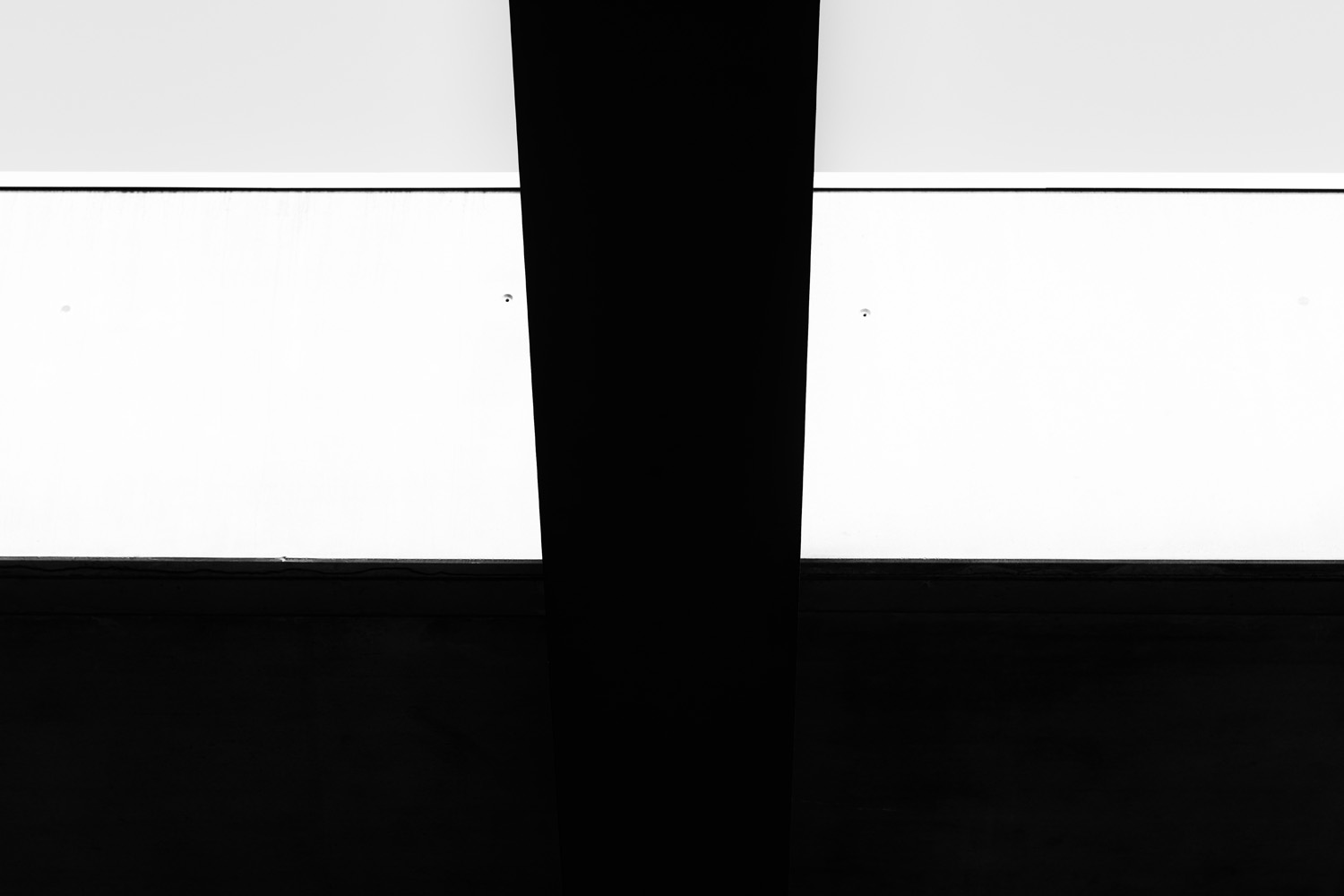
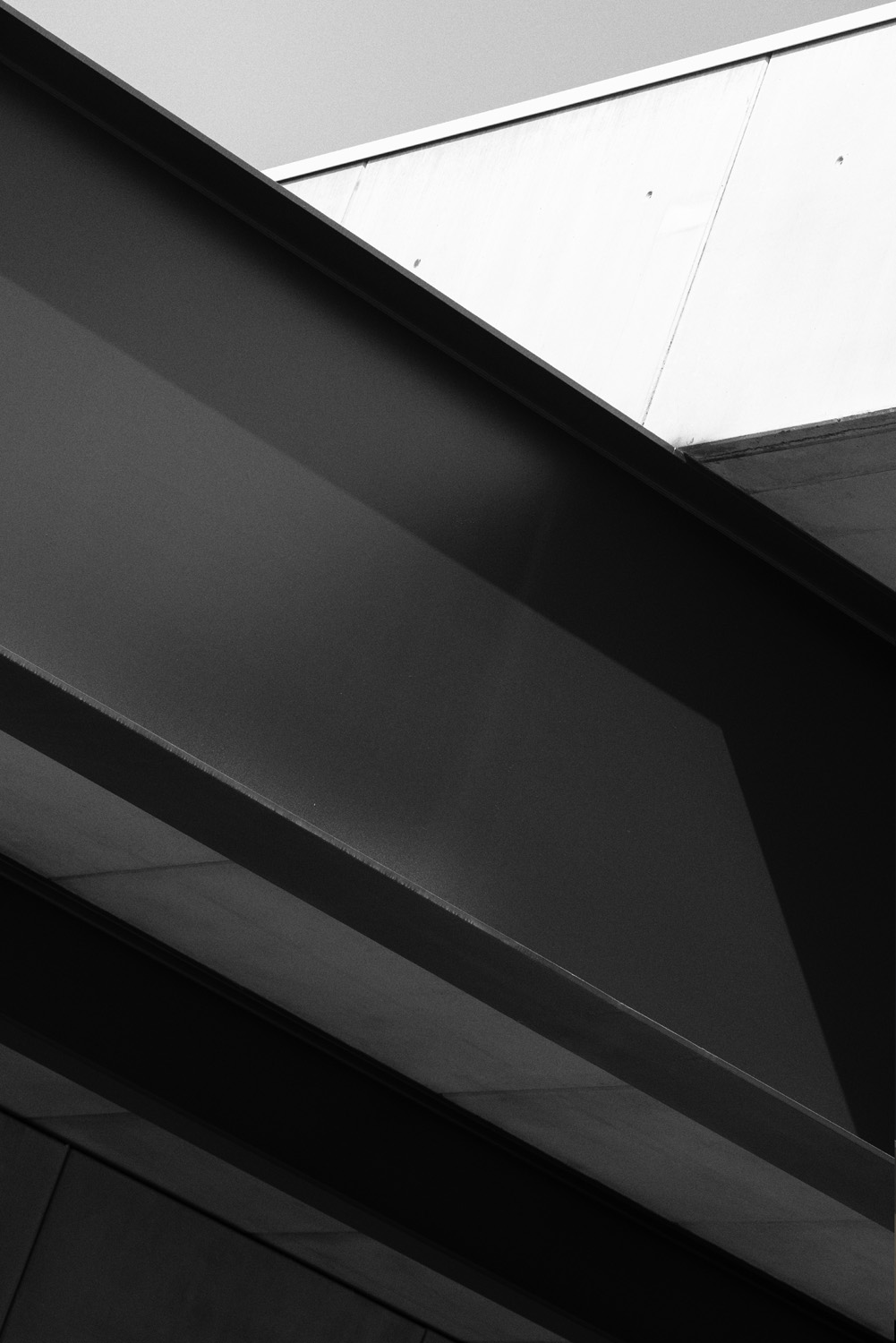
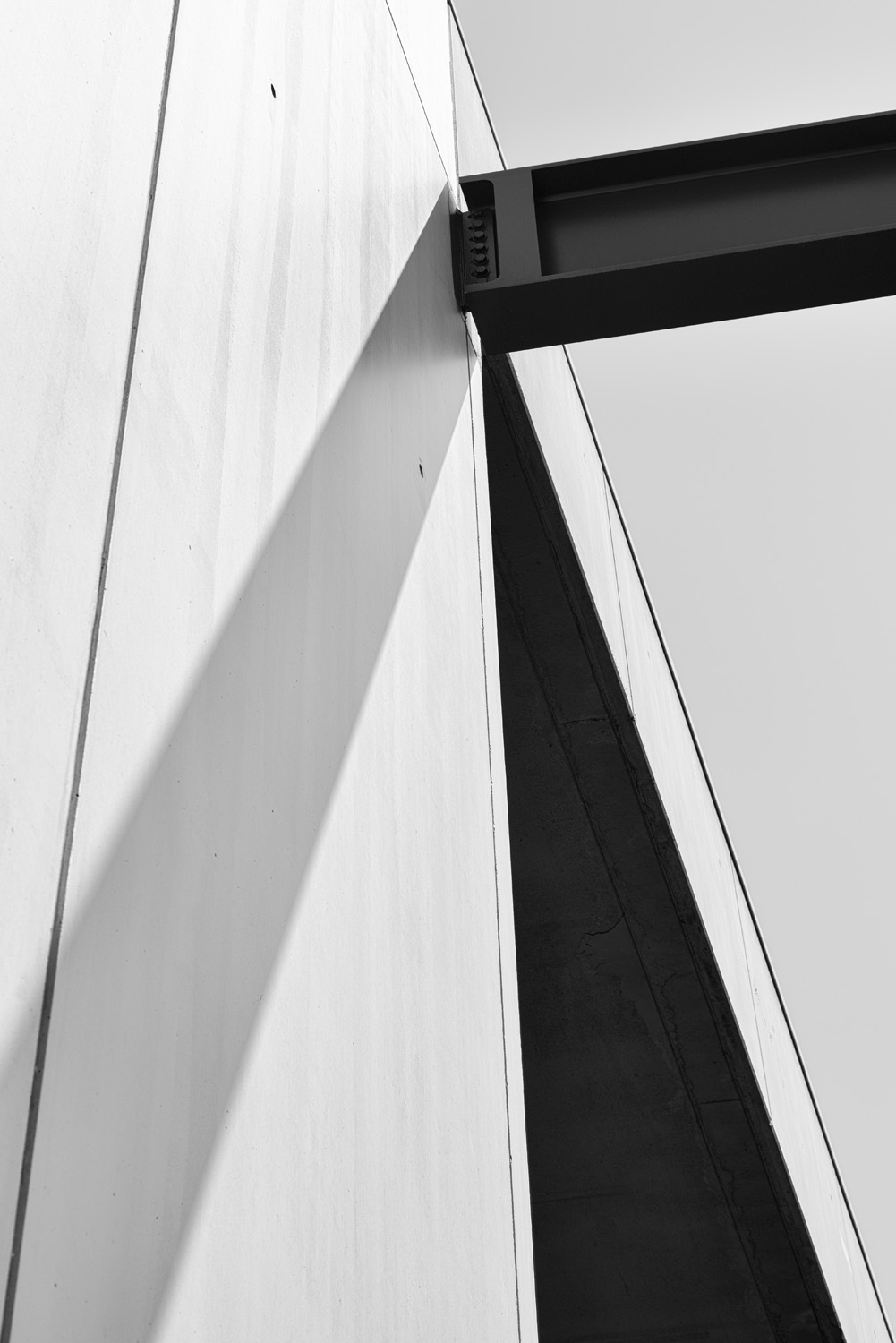
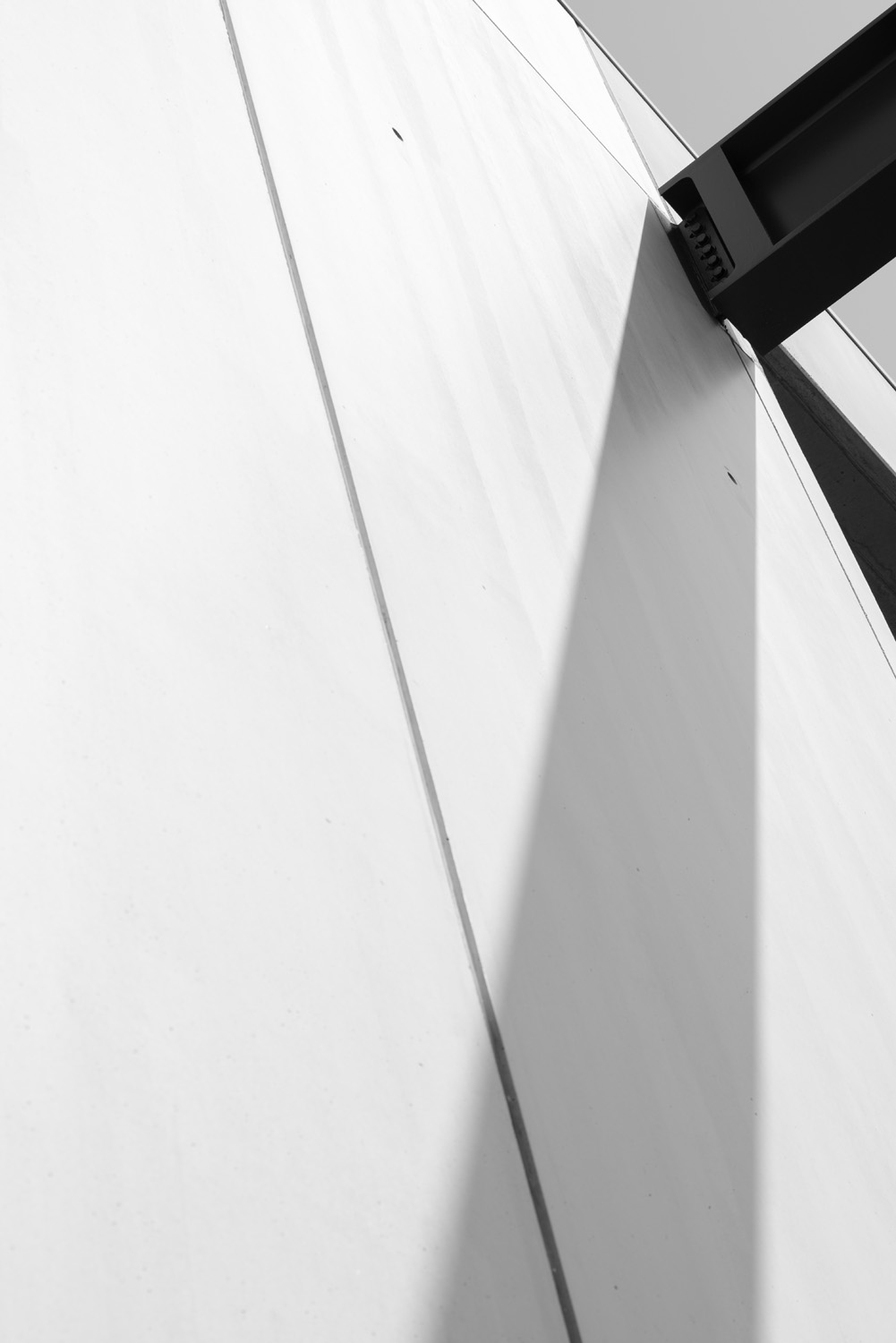

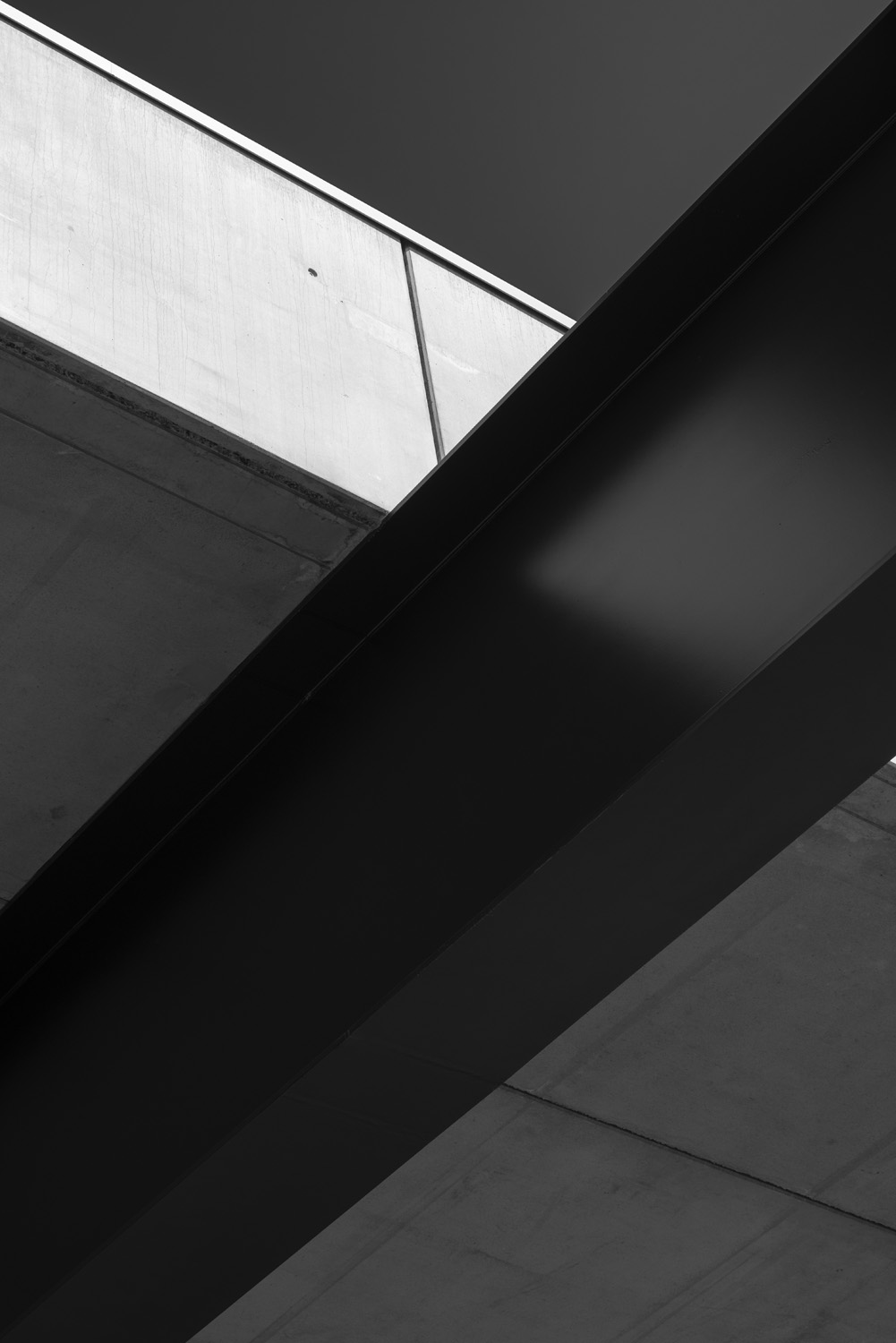
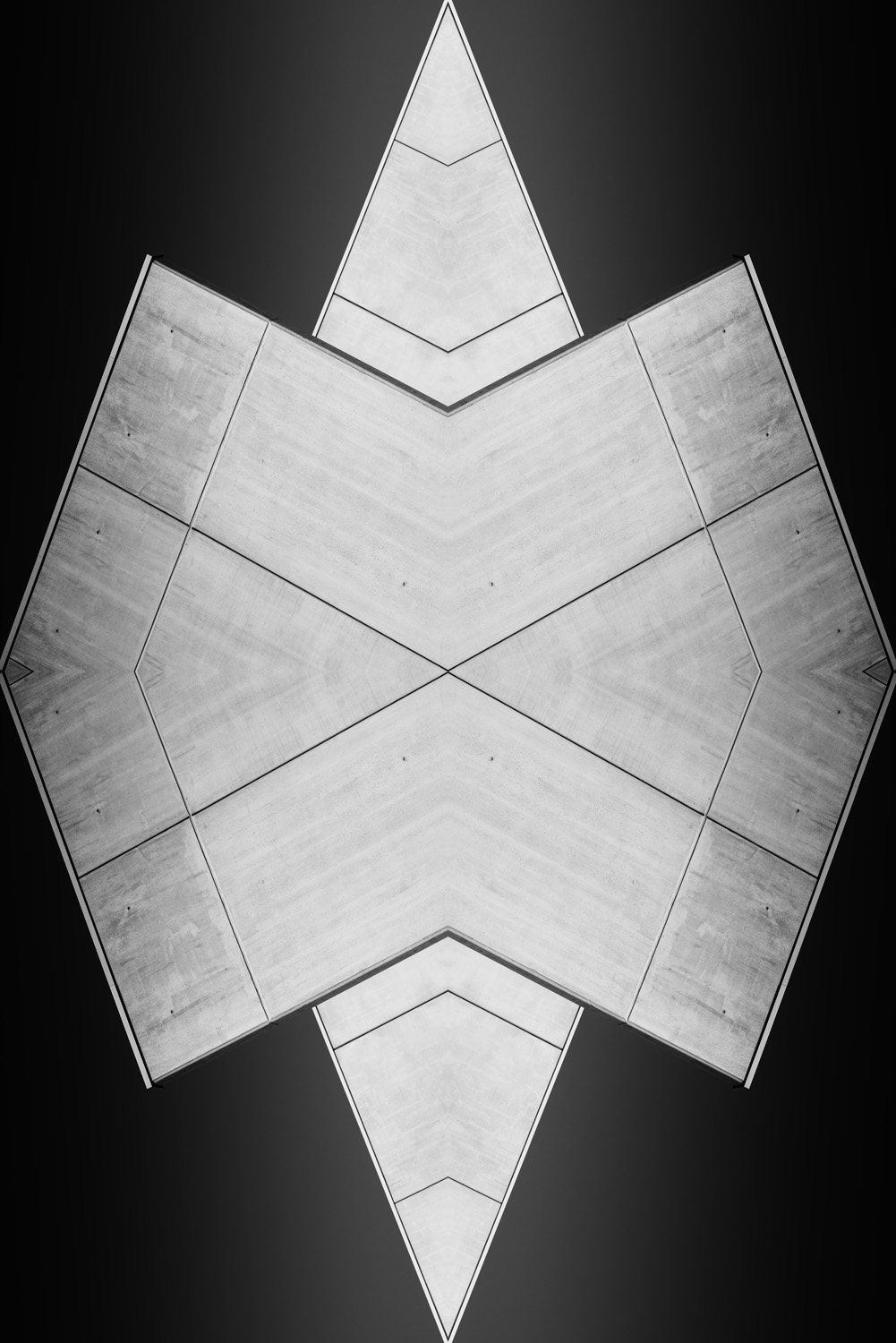







The Louvre Conservation Center photographs by Joas Souza Souza, comissioned by RSH-P and Musee du Louvre.The national collections held in the Louvre’s storage spaces are to be moved to new facilities in Liévin in northern France, in the immediate vicinity of the Louvre-Lens. The Louvre Conservation Center was created to protect the museum’s collections from the risk of centennial flooding and improve conditions for conservation and research.

The Louvre Conservation Center photographs by Joas Souza Souza, comissioned by RSH-P and Musee du Louvre.
The national collections held in the Louvre’s storage spaces are to be moved to new facilities in Liévin in northern France, in the immediate vicinity of the Louvre-Lens. The Louvre Conservation Center was created to protect the museum’s collections from the risk of centennial flooding and improve conditions for conservation and research.

The Louvre Conservation Center photographs by Joas Souza Souza, comissioned by RSH-P and Musee du Louvre.The national collections held in the Louvre’s storage spaces are to be moved to new facilities in Liévin in northern France, in the immediate vicinity of the Louvre-Lens. The Louvre Conservation Center was created to protect the museum’s collections from the risk of centennial flooding and improve conditions for conservation and research.

The Louvre Conservation Center photographs by Joas Souza Souza, comissioned by RSH-P and Musee du Louvre.The national collections held in the Louvre’s storage spaces are to be moved to new facilities in Liévin in northern France, in the immediate vicinity of the Louvre-Lens. The Louvre Conservation Center was created to protect the museum’s collections from the risk of centennial flooding and improve conditions for conservation and research.

The Louvre Conservation Center photographs by Joas Souza Souza, comissioned by RSH-P and Musee du Louvre.The national collections held in the Louvre’s storage spaces are to be moved to new facilities in Liévin in northern France, in the immediate vicinity of the Louvre-Lens. The Louvre Conservation Center was created to protect the museum’s collections from the risk of centennial flooding and improve conditions for conservation and research.

The Louvre Conservation Center photographs by Joas Souza Souza, comissioned by RSH-P and Musee du Louvre.The national collections held in the Louvre’s storage spaces are to be moved to new facilities in Liévin in northern France, in the immediate vicinity of the Louvre-Lens. The Louvre Conservation Center was created to protect the museum’s collections from the risk of centennial flooding and improve conditions for conservation and research.

The Louvre Conservation Center photographs by Joas Souza Souza, comissioned by RSH-P and Musee du Louvre.The national collections held in the Louvre’s storage spaces are to be moved to new facilities in Liévin in northern France, in the immediate vicinity of the Louvre-Lens. The Louvre Conservation Center was created to protect the museum’s collections from the risk of centennial flooding and improve conditions for conservation and research.

The Louvre Conservation Center photographs by Joas Souza Souza, comissioned by RSH-P and Musee du Louvre.The national collections held in the Louvre’s storage spaces are to be moved to new facilities in Liévin in northern France, in the immediate vicinity of the Louvre-Lens. The Louvre Conservation Center was created to protect the museum’s collections from the risk of centennial flooding and improve conditions for conservation and research.

The Louvre Conservation Center photographs by Joas Souza Souza, comissioned by RSH-P and Musee du Louvre.The national collections held in the Louvre’s storage spaces are to be moved to new facilities in Liévin in northern France, in the immediate vicinity of the Louvre-Lens. The Louvre Conservation Center was created to protect the museum’s collections from the risk of centennial flooding and improve conditions for conservation and research.

The Louvre Conservation Center photographs by Joas Souza Souza, comissioned by RSH-P and Musee du Louvre.The national collections held in the Louvre’s storage spaces are to be moved to new facilities in Liévin in northern France, in the immediate vicinity of the Louvre-Lens. The Louvre Conservation Center was created to protect the museum’s collections from the risk of centennial flooding and improve conditions for conservation and research.

The Louvre Conservation Center photographs by Joas Souza Souza, comissioned by RSH-P and Musee du Louvre.The national collections held in the Louvre’s storage spaces are to be moved to new facilities in Liévin in northern France, in the immediate vicinity of the Louvre-Lens. The Louvre Conservation Center was created to protect the museum’s collections from the risk of centennial flooding and improve conditions for conservation and research.

The Louvre Conservation Center photographs by Joas Souza Souza, comissioned by RSH-P and Musee du Louvre.The national collections held in the Louvre’s storage spaces are to be moved to new facilities in Liévin in northern France, in the immediate vicinity of the Louvre-Lens. The Louvre Conservation Center was created to protect the museum’s collections from the risk of centennial flooding and improve conditions for conservation and research.

The Louvre Conservation Center photographs by Joas Souza Souza, comissioned by RSH-P and Musee du Louvre.The national collections held in the Louvre’s storage spaces are to be moved to new facilities in Liévin in northern France, in the immediate vicinity of the Louvre-Lens. The Louvre Conservation Center was created to protect the museum’s collections from the risk of centennial flooding and improve conditions for conservation and research.

The Louvre Conservation Center photographs by Joas Souza Souza, comissioned by RSH-P and Musee du Louvre.The national collections held in the Louvre’s storage spaces are to be moved to new facilities in Liévin in northern France, in the immediate vicinity of the Louvre-Lens. The Louvre Conservation Center was created to protect the museum’s collections from the risk of centennial flooding and improve conditions for conservation and research.

The Louvre Conservation Center photographs by Joas Souza Souza, comissioned by RSH-P and Musee du Louvre.The national collections held in the Louvre’s storage spaces are to be moved to new facilities in Liévin in northern France, in the immediate vicinity of the Louvre-Lens. The Louvre Conservation Center was created to protect the museum’s collections from the risk of centennial flooding and improve conditions for conservation and research.

The Louvre Conservation Center photographs by Joas Souza Souza, comissioned by RSH-P and Musee du Louvre.The national collections held in the Louvre’s storage spaces are to be moved to new facilities in Liévin in northern France, in the immediate vicinity of the Louvre-Lens. The Louvre Conservation Center was created to protect the museum’s collections from the risk of centennial flooding and improve conditions for conservation and research.

The Louvre Conservation Center photographs by Joas Souza Souza, comissioned by RSH-P and Musee du Louvre.The national collections held in the Louvre’s storage spaces are to be moved to new facilities in Liévin in northern France, in the immediate vicinity of the Louvre-Lens. The Louvre Conservation Center was created to protect the museum’s collections from the risk of centennial flooding and improve conditions for conservation and research.

The Louvre Conservation Center photographs by Joas Souza Souza, comissioned by RSH-P and Musee du Louvre.The national collections held in the Louvre’s storage spaces are to be moved to new facilities in Liévin in northern France, in the immediate vicinity of the Louvre-Lens. The Louvre Conservation Center was created to protect the museum’s collections from the risk of centennial flooding and improve conditions for conservation and research.

The Louvre Conservation Center photographs by Joas Souza Souza, comissioned by RSH-P and Musee du Louvre.The national collections held in the Louvre’s storage spaces are to be moved to new facilities in Liévin in northern France, in the immediate vicinity of the Louvre-Lens. The Louvre Conservation Center was created to protect the museum’s collections from the risk of centennial flooding and improve conditions for conservation and research.

The Louvre Conservation Center photographs by Joas Souza Souza, comissioned by RSH-P and Musee du Louvre.The national collections held in the Louvre’s storage spaces are to be moved to new facilities in Liévin in northern France, in the immediate vicinity of the Louvre-Lens. The Louvre Conservation Center was created to protect the museum’s collections from the risk of centennial flooding and improve conditions for conservation and research.

The Louvre Conservation Center photographs by Joas Souza Souza, comissioned by RSH-P and Musee du Louvre.The national collections held in the Louvre’s storage spaces are to be moved to new facilities in Liévin in northern France, in the immediate vicinity of the Louvre-Lens. The Louvre Conservation Center was created to protect the museum’s collections from the risk of centennial flooding and improve conditions for conservation and research.

The Louvre Conservation Center photographs by Joas Souza Souza, comissioned by RSH-P and Musee du Louvre.The national collections held in the Louvre’s storage spaces are to be moved to new facilities in Liévin in northern France, in the immediate vicinity of the Louvre-Lens. The Louvre Conservation Center was created to protect the museum’s collections from the risk of centennial flooding and improve conditions for conservation and research.

The Louvre Conservation Center photographs by Joas Souza Souza, comissioned by RSH-P and Musee du Louvre.The national collections held in the Louvre’s storage spaces are to be moved to new facilities in Liévin in northern France, in the immediate vicinity of the Louvre-Lens. The Louvre Conservation Center was created to protect the museum’s collections from the risk of centennial flooding and improve conditions for conservation and research.

The Louvre Conservation Center photographs by Joas Souza Souza, comissioned by RSH-P and Musee du Louvre.The national collections held in the Louvre’s storage spaces are to be moved to new facilities in Liévin in northern France, in the immediate vicinity of the Louvre-Lens. The Louvre Conservation Center was created to protect the museum’s collections from the risk of centennial flooding and improve conditions for conservation and research.

The Louvre Conservation Center photographs by Joas Souza Souza, comissioned by RSH-P and Musee du Louvre.The national collections held in the Louvre’s storage spaces are to be moved to new facilities in Liévin in northern France, in the immediate vicinity of the Louvre-Lens. The Louvre Conservation Center was created to protect the museum’s collections from the risk of centennial flooding and improve conditions for conservation and research.

The Louvre Conservation Center photographs by Joas Souza Souza, comissioned by RSH-P and Musee du Louvre.The national collections held in the Louvre’s storage spaces are to be moved to new facilities in Liévin in northern France, in the immediate vicinity of the Louvre-Lens. The Louvre Conservation Center was created to protect the museum’s collections from the risk of centennial flooding and improve conditions for conservation and research.

The Louvre Conservation Center photographs by Joas Souza Souza, comissioned by RSH-P and Musee du Louvre.The national collections held in the Louvre’s storage spaces are to be moved to new facilities in Liévin in northern France, in the immediate vicinity of the Louvre-Lens. The Louvre Conservation Center was created to protect the museum’s collections from the risk of centennial flooding and improve conditions for conservation and research.

The Louvre Conservation Center photographs by Joas Souza Souza, comissioned by RSH-P and Musee du Louvre.The national collections held in the Louvre’s storage spaces are to be moved to new facilities in Liévin in northern France, in the immediate vicinity of the Louvre-Lens. The Louvre Conservation Center was created to protect the museum’s collections from the risk of centennial flooding and improve conditions for conservation and research.

The Louvre Conservation Center photographs by Joas Souza Souza, comissioned by RSH-P and Musee du Louvre.
The national collections held in the Louvre’s storage spaces are to be moved to new facilities in Liévin in northern France, in the immediate vicinity of the Louvre-Lens. The Louvre Conservation Center was created to protect the museum’s collections from the risk of centennial flooding and improve conditions for conservation and research.

The Louvre Conservation Center photographs by Joas Souza Souza, comissioned by RSH-P and Musee du Louvre.
The national collections held in the Louvre’s storage spaces are to be moved to new facilities in Liévin in northern France, in the immediate vicinity of the Louvre-Lens. The Louvre Conservation Center was created to protect the museum’s collections from the risk of centennial flooding and improve conditions for conservation and research.

The Louvre Conservation Center photographs by Joas Souza Souza, comissioned by RSH-P and Musee du Louvre.
The national collections held in the Louvre’s storage spaces are to be moved to new facilities in Liévin in northern France, in the immediate vicinity of the Louvre-Lens. The Louvre Conservation Center was created to protect the museum’s collections from the risk of centennial flooding and improve conditions for conservation and research.

The Louvre Conservation Center photographs by Joas Souza Souza, comissioned by RSH-P and Musee du Louvre.
The national collections held in the Louvre’s storage spaces are to be moved to new facilities in Liévin in northern France, in the immediate vicinity of the Louvre-Lens. The Louvre Conservation Center was created to protect the museum’s collections from the risk of centennial flooding and improve conditions for conservation and research.

The Louvre Conservation Center photographs by Joas Souza Souza, comissioned by RSH-P and Musee du Louvre.
The national collections held in the Louvre’s storage spaces are to be moved to new facilities in Liévin in northern France, in the immediate vicinity of the Louvre-Lens. The Louvre Conservation Center was created to protect the museum’s collections from the risk of centennial flooding and improve conditions for conservation and research.

The Louvre Conservation Center photographs by Joas Souza Souza, comissioned by RSH-P and Musee du Louvre.
The national collections held in the Louvre’s storage spaces are to be moved to new facilities in Liévin in northern France, in the immediate vicinity of the Louvre-Lens. The Louvre Conservation Center was created to protect the museum’s collections from the risk of centennial flooding and improve conditions for conservation and research.

The Louvre Conservation Center photographs by Joas Souza Souza, comissioned by RSH-P and Musee du Louvre.
The national collections held in the Louvre’s storage spaces are to be moved to new facilities in Liévin in northern France, in the immediate vicinity of the Louvre-Lens. The Louvre Conservation Center was created to protect the museum’s collections from the risk of centennial flooding and improve conditions for conservation and research.

The Louvre Conservation Center photographs by Joas Souza Souza, comissioned by RSH-P and Musee du Louvre.
The national collections held in the Louvre’s storage spaces are to be moved to new facilities in Liévin in northern France, in the immediate vicinity of the Louvre-Lens. The Louvre Conservation Center was created to protect the museum’s collections from the risk of centennial flooding and improve conditions for conservation and research.

The Louvre Conservation Center photographs by Joas Souza Souza, comissioned by RSH-P and Musee du Louvre.
The national collections held in the Louvre’s storage spaces are to be moved to new facilities in Liévin in northern France, in the immediate vicinity of the Louvre-Lens. The Louvre Conservation Center was created to protect the museum’s collections from the risk of centennial flooding and improve conditions for conservation and research.

The Louvre Conservation Center photographs by Joas Souza Souza, comissioned by RSH-P and Musee du Louvre.
The national collections held in the Louvre’s storage spaces are to be moved to new facilities in Liévin in northern France, in the immediate vicinity of the Louvre-Lens. The Louvre Conservation Center was created to protect the museum’s collections from the risk of centennial flooding and improve conditions for conservation and research.

The Louvre Conservation Center photographs by Joas Souza Souza, comissioned by RSH-P and Musee du Louvre.
The national collections held in the Louvre’s storage spaces are to be moved to new facilities in Liévin in northern France, in the immediate vicinity of the Louvre-Lens. The Louvre Conservation Center was created to protect the museum’s collections from the risk of centennial flooding and improve conditions for conservation and research.

The Louvre Conservation Center photographs by Joas Souza Souza, comissioned by RSH-P and Musee du Louvre.
The national collections held in the Louvre’s storage spaces are to be moved to new facilities in Liévin in northern France, in the immediate vicinity of the Louvre-Lens. The Louvre Conservation Center was created to protect the museum’s collections from the risk of centennial flooding and improve conditions for conservation and research.

The Louvre Conservation Center photographs by Joas Souza Souza, comissioned by RSH-P and Musee du Louvre.
The national collections held in the Louvre’s storage spaces are to be moved to new facilities in Liévin in northern France, in the immediate vicinity of the Louvre-Lens. The Louvre Conservation Center was created to protect the museum’s collections from the risk of centennial flooding and improve conditions for conservation and research.

The Louvre Conservation Center photographs by Joas Souza Souza, comissioned by RSH-P and Musee du Louvre.
The national collections held in the Louvre’s storage spaces are to be moved to new facilities in Liévin in northern France, in the immediate vicinity of the Louvre-Lens. The Louvre Conservation Center was created to protect the museum’s collections from the risk of centennial flooding and improve conditions for conservation and research.

The Louvre Conservation Center photographs by Joas Souza Souza, comissioned by RSH-P and Musee du Louvre.
The national collections held in the Louvre’s storage spaces are to be moved to new facilities in Liévin in northern France, in the immediate vicinity of the Louvre-Lens. The Louvre Conservation Center was created to protect the museum’s collections from the risk of centennial flooding and improve conditions for conservation and research.

The Louvre Conservation Center photographs by Joas Souza Souza, comissioned by RSH-P and Musee du Louvre.
The national collections held in the Louvre’s storage spaces are to be moved to new facilities in Liévin in northern France, in the immediate vicinity of the Louvre-Lens. The Louvre Conservation Center was created to protect the museum’s collections from the risk of centennial flooding and improve conditions for conservation and research.

The Louvre Conservation Center photographs by Joas Souza Souza, comissioned by RSH-P and Musee du Louvre.
The national collections held in the Louvre’s storage spaces are to be moved to new facilities in Liévin in northern France, in the immediate vicinity of the Louvre-Lens. The Louvre Conservation Center was created to protect the museum’s collections from the risk of centennial flooding and improve conditions for conservation and research.

The Louvre Conservation Center photographs by Joas Souza Souza, comissioned by RSH-P and Musee du Louvre.
The national collections held in the Louvre’s storage spaces are to be moved to new facilities in Liévin in northern France, in the immediate vicinity of the Louvre-Lens. The Louvre Conservation Center was created to protect the museum’s collections from the risk of centennial flooding and improve conditions for conservation and research.

The Louvre Conservation Center photographs by Joas Souza Souza, comissioned by RSH-P and Musee du Louvre.
The national collections held in the Louvre’s storage spaces are to be moved to new facilities in Liévin in northern France, in the immediate vicinity of the Louvre-Lens. The Louvre Conservation Center was created to protect the museum’s collections from the risk of centennial flooding and improve conditions for conservation and research.

The Louvre Conservation Center photographs by Joas Souza Souza, comissioned by RSH-P and Musee du Louvre.
The national collections held in the Louvre’s storage spaces are to be moved to new facilities in Liévin in northern France, in the immediate vicinity of the Louvre-Lens. The Louvre Conservation Center was created to protect the museum’s collections from the risk of centennial flooding and improve conditions for conservation and research.

The Louvre Conservation Center photographs by Joas Souza Souza, comissioned by RSH-P and Musee du Louvre.
The national collections held in the Louvre’s storage spaces are to be moved to new facilities in Liévin in northern France, in the immediate vicinity of the Louvre-Lens. The Louvre Conservation Center was created to protect the museum’s collections from the risk of centennial flooding and improve conditions for conservation and research.

The Louvre Conservation Center photographs by Joas Souza Souza, comissioned by RSH-P and Musee du Louvre.
The national collections held in the Louvre’s storage spaces are to be moved to new facilities in Liévin in northern France, in the immediate vicinity of the Louvre-Lens. The Louvre Conservation Center was created to protect the museum’s collections from the risk of centennial flooding and improve conditions for conservation and research.

The Louvre Conservation Center photographs by Joas Souza Souza, comissioned by RSH-P and Musee du Louvre.
The national collections held in the Louvre’s storage spaces are to be moved to new facilities in Liévin in northern France, in the immediate vicinity of the Louvre-Lens. The Louvre Conservation Center was created to protect the museum’s collections from the risk of centennial flooding and improve conditions for conservation and research.

The Louvre Conservation Center photographs by Joas Souza Souza, comissioned by RSH-P and Musee du Louvre.
The national collections held in the Louvre’s storage spaces are to be moved to new facilities in Liévin in northern France, in the immediate vicinity of the Louvre-Lens. The Louvre Conservation Center was created to protect the museum’s collections from the risk of centennial flooding and improve conditions for conservation and research.

The Louvre Conservation Center photographs by Joas Souza Souza, comissioned by RSH-P and Musee du Louvre.
The national collections held in the Louvre’s storage spaces are to be moved to new facilities in Liévin in northern France, in the immediate vicinity of the Louvre-Lens. The Louvre Conservation Center was created to protect the museum’s collections from the risk of centennial flooding and improve conditions for conservation and research.

The Louvre Conservation Center photographs by Joas Souza Souza, comissioned by RSH-P and Musee du Louvre.
The national collections held in the Louvre’s storage spaces are to be moved to new facilities in Liévin in northern France, in the immediate vicinity of the Louvre-Lens. The Louvre Conservation Center was created to protect the museum’s collections from the risk of centennial flooding and improve conditions for conservation and research.

The Louvre Conservation Center photographs by Joas Souza Souza, comissioned by RSH-P and Musee du Louvre.
The national collections held in the Louvre’s storage spaces are to be moved to new facilities in Liévin in northern France, in the immediate vicinity of the Louvre-Lens. The Louvre Conservation Center was created to protect the museum’s collections from the risk of centennial flooding and improve conditions for conservation and research.

The Louvre Conservation Center photographs by Joas Souza Souza, comissioned by RSH-P and Musee du Louvre.
The national collections held in the Louvre’s storage spaces are to be moved to new facilities in Liévin in northern France, in the immediate vicinity of the Louvre-Lens. The Louvre Conservation Center was created to protect the museum’s collections from the risk of centennial flooding and improve conditions for conservation and research.

The Louvre Conservation Center photographs by Joas Souza Souza, comissioned by RSH-P and Musee du Louvre.
The national collections held in the Louvre’s storage spaces are to be moved to new facilities in Liévin in northern France, in the immediate vicinity of the Louvre-Lens. The Louvre Conservation Center was created to protect the museum’s collections from the risk of centennial flooding and improve conditions for conservation and research.

The Louvre Conservation Center photographs by Joas Souza Souza, comissioned by RSH-P and Musee du Louvre.
The national collections held in the Louvre’s storage spaces are to be moved to new facilities in Liévin in northern France, in the immediate vicinity of the Louvre-Lens. The Louvre Conservation Center was created to protect the museum’s collections from the risk of centennial flooding and improve conditions for conservation and research.

The Louvre Conservation Center photographs by Joas Souza Souza, comissioned by RSH-P and Musee du Louvre.
The national collections held in the Louvre’s storage spaces are to be moved to new facilities in Liévin in northern France, in the immediate vicinity of the Louvre-Lens. The Louvre Conservation Center was created to protect the museum’s collections from the risk of centennial flooding and improve conditions for conservation and research.

The Louvre Conservation Center photographs by Joas Souza Souza, comissioned by RSH-P and Musee du Louvre.
The national collections held in the Louvre’s storage spaces are to be moved to new facilities in Liévin in northern France, in the immediate vicinity of the Louvre-Lens. The Louvre Conservation Center was created to protect the museum’s collections from the risk of centennial flooding and improve conditions for conservation and research.

The Louvre Conservation Center photographs by Joas Souza Souza, comissioned by RSH-P and Musee du Louvre.
The national collections held in the Louvre’s storage spaces are to be moved to new facilities in Liévin in northern France, in the immediate vicinity of the Louvre-Lens. The Louvre Conservation Center was created to protect the museum’s collections from the risk of centennial flooding and improve conditions for conservation and research.

The Louvre Conservation Center photographs by Joas Souza Souza, comissioned by RSH-P and Musee du Louvre.
The national collections held in the Louvre’s storage spaces are to be moved to new facilities in Liévin in northern France, in the immediate vicinity of the Louvre-Lens. The Louvre Conservation Center was created to protect the museum’s collections from the risk of centennial flooding and improve conditions for conservation and research.

The Louvre Conservation Center photographs by Joas Souza Souza, comissioned by RSH-P and Musee du Louvre.
The national collections held in the Louvre’s storage spaces are to be moved to new facilities in Liévin in northern France, in the immediate vicinity of the Louvre-Lens. The Louvre Conservation Center was created to protect the museum’s collections from the risk of centennial flooding and improve conditions for conservation and research.

The Louvre Conservation Center photographs by Joas Souza Souza, comissioned by RSH-P and Musee du Louvre.
The national collections held in the Louvre’s storage spaces are to be moved to new facilities in Liévin in northern France, in the immediate vicinity of the Louvre-Lens. The Louvre Conservation Center was created to protect the museum’s collections from the risk of centennial flooding and improve conditions for conservation and research.

The Louvre Conservation Center photographs by Joas Souza Souza, comissioned by RSH-P and Musee du Louvre.
The national collections held in the Louvre’s storage spaces are to be moved to new facilities in Liévin in northern France, in the immediate vicinity of the Louvre-Lens. The Louvre Conservation Center was created to protect the museum’s collections from the risk of centennial flooding and improve conditions for conservation and research.

The Louvre Conservation Center photographs by Joas Souza Souza, comissioned by RSH-P and Musee du Louvre.
The national collections held in the Louvre’s storage spaces are to be moved to new facilities in Liévin in northern France, in the immediate vicinity of the Louvre-Lens. The Louvre Conservation Center was created to protect the museum’s collections from the risk of centennial flooding and improve conditions for conservation and research.

The Louvre Conservation Center photographs by Joas Souza Souza, comissioned by RSH-P and Musee du Louvre.
The national collections held in the Louvre’s storage spaces are to be moved to new facilities in Liévin in northern France, in the immediate vicinity of the Louvre-Lens. The Louvre Conservation Center was created to protect the museum’s collections from the risk of centennial flooding and improve conditions for conservation and research.

The Louvre Conservation Center photographs by Joas Souza Souza, comissioned by RSH-P and Musee du Louvre.
The national collections held in the Louvre’s storage spaces are to be moved to new facilities in Liévin in northern France, in the immediate vicinity of the Louvre-Lens. The Louvre Conservation Center was created to protect the museum’s collections from the risk of centennial flooding and improve conditions for conservation and research.

The Louvre Conservation Center photographs by Joas Souza Souza, comissioned by RSH-P and Musee du Louvre.
The national collections held in the Louvre’s storage spaces are to be moved to new facilities in Liévin in northern France, in the immediate vicinity of the Louvre-Lens. The Louvre Conservation Center was created to protect the museum’s collections from the risk of centennial flooding and improve conditions for conservation and research.

The Louvre Conservation Center photographs by Joas Souza Souza, comissioned by RSH-P and Musee du Louvre.
The national collections held in the Louvre’s storage spaces are to be moved to new facilities in Liévin in northern France, in the immediate vicinity of the Louvre-Lens. The Louvre Conservation Center was created to protect the museum’s collections from the risk of centennial flooding and improve conditions for conservation and research.

The Louvre Conservation Center photographs by Joas Souza Souza, comissioned by RSH-P and Musee du Louvre.
The national collections held in the Louvre’s storage spaces are to be moved to new facilities in Liévin in northern France, in the immediate vicinity of the Louvre-Lens. The Louvre Conservation Center was created to protect the museum’s collections from the risk of centennial flooding and improve conditions for conservation and research.

The Louvre Conservation Center photographs by Joas Souza Souza, comissioned by RSH-P and Musee du Louvre.
The national collections held in the Louvre’s storage spaces are to be moved to new facilities in Liévin in northern France, in the immediate vicinity of the Louvre-Lens. The Louvre Conservation Center was created to protect the museum’s collections from the risk of centennial flooding and improve conditions for conservation and research.

The Louvre Conservation Center photographs by Joas Souza Souza, comissioned by RSH-P and Musee du Louvre.
The national collections held in the Louvre’s storage spaces are to be moved to new facilities in Liévin in northern France, in the immediate vicinity of the Louvre-Lens. The Louvre Conservation Center was created to protect the museum’s collections from the risk of centennial flooding and improve conditions for conservation and research.

The Louvre Conservation Center photographs by Joas Souza Souza, comissioned by RSH-P and Musee du Louvre.
The national collections held in the Louvre’s storage spaces are to be moved to new facilities in Liévin in northern France, in the immediate vicinity of the Louvre-Lens. The Louvre Conservation Center was created to protect the museum’s collections from the risk of centennial flooding and improve conditions for conservation and research.

The Louvre Conservation Center photographs by Joas Souza Souza, comissioned by RSH-P and Musee du Louvre.
The national collections held in the Louvre’s storage spaces are to be moved to new facilities in Liévin in northern France, in the immediate vicinity of the Louvre-Lens. The Louvre Conservation Center was created to protect the museum’s collections from the risk of centennial flooding and improve conditions for conservation and research.

The Louvre Conservation Center photographs by Joas Souza Souza, comissioned by RSH-P and Musee du Louvre.
The national collections held in the Louvre’s storage spaces are to be moved to new facilities in Liévin in northern France, in the immediate vicinity of the Louvre-Lens. The Louvre Conservation Center was created to protect the museum’s collections from the risk of centennial flooding and improve conditions for conservation and research.

The Louvre Conservation Center photographs by Joas Souza Souza, comissioned by RSH-P and Musee du Louvre.
The national collections held in the Louvre’s storage spaces are to be moved to new facilities in Liévin in northern France, in the immediate vicinity of the Louvre-Lens. The Louvre Conservation Center was created to protect the museum’s collections from the risk of centennial flooding and improve conditions for conservation and research.

The Louvre Conservation Center photographs by Joas Souza Souza, comissioned by RSH-P and Musee du Louvre.
The national collections held in the Louvre’s storage spaces are to be moved to new facilities in Liévin in northern France, in the immediate vicinity of the Louvre-Lens. The Louvre Conservation Center was created to protect the museum’s collections from the risk of centennial flooding and improve conditions for conservation and research.
info
prev / next
1
2
3
4
5
6
7
8
9
10
11
12
13
14
15
16
17
18
19
20
21
22
23
24
25
26
27
28
29
30
31
32
33
34
35
36
37
38
39
40
41
42
43
44
45
46
47
48
49
50
51
52
53
54
55
56
57
58
59
60
61
62
63
64
65
66
67
68
69
70
71
72
73
74
75
76
77
78
·
·
·
·
·
·
·
·
·
·
·
·
·
·
·
·
·
·
·
·
·
·
·
·
·
·
·
·
·
·
·
·
·
·
·
·
·
·
·
·
·
·
·
·
·
·
·
·
·
·
·
·
·
·
·
·
·
·
·
·
·
·
·
·
·
·
·
·
·
·
·
·
·
·
·
·
·
·
